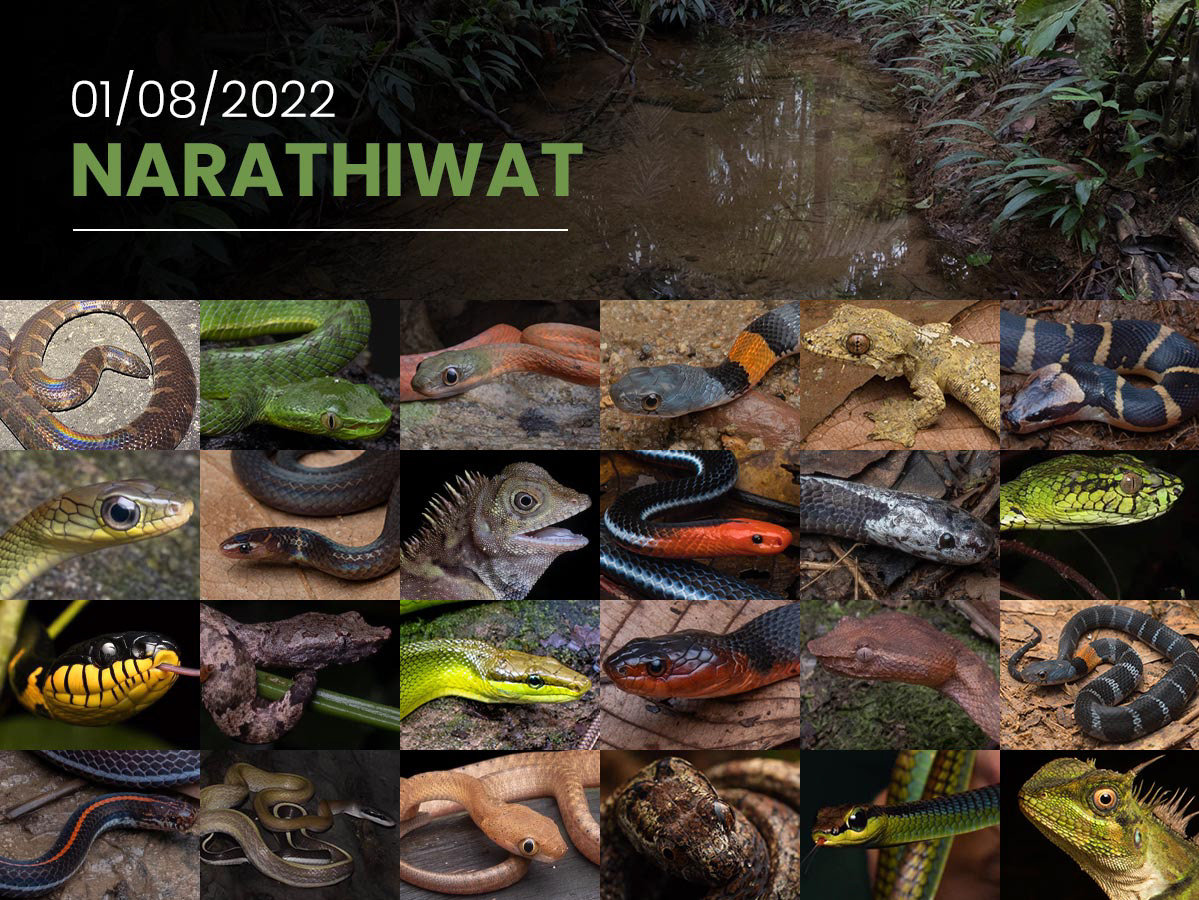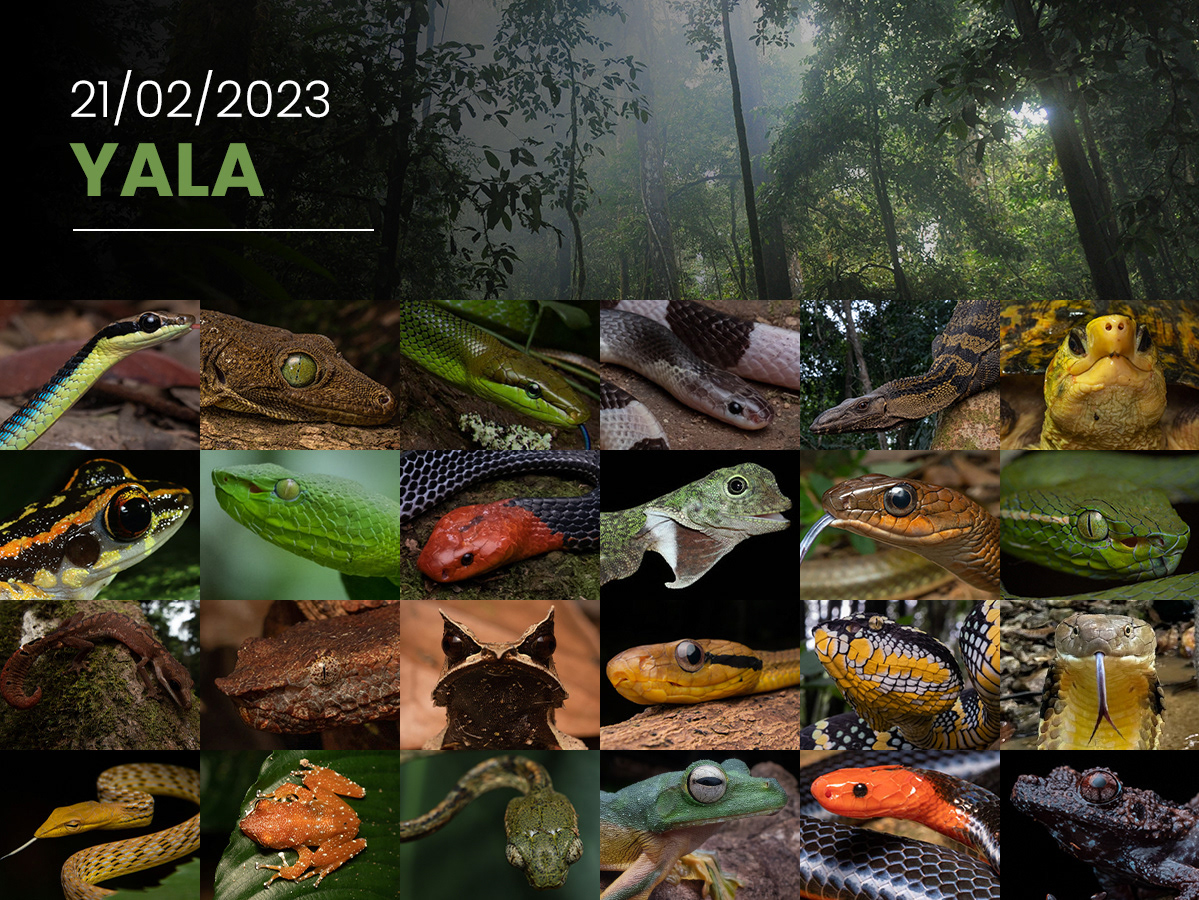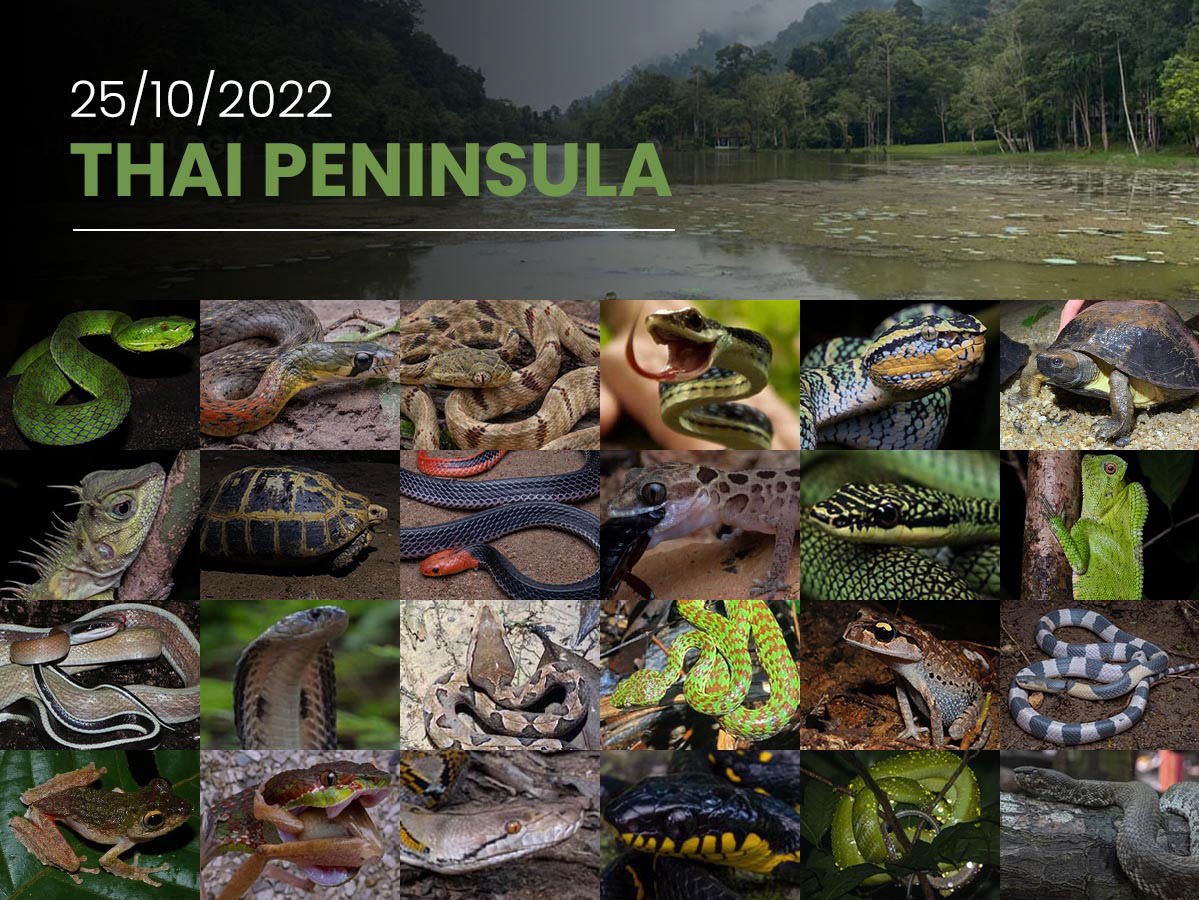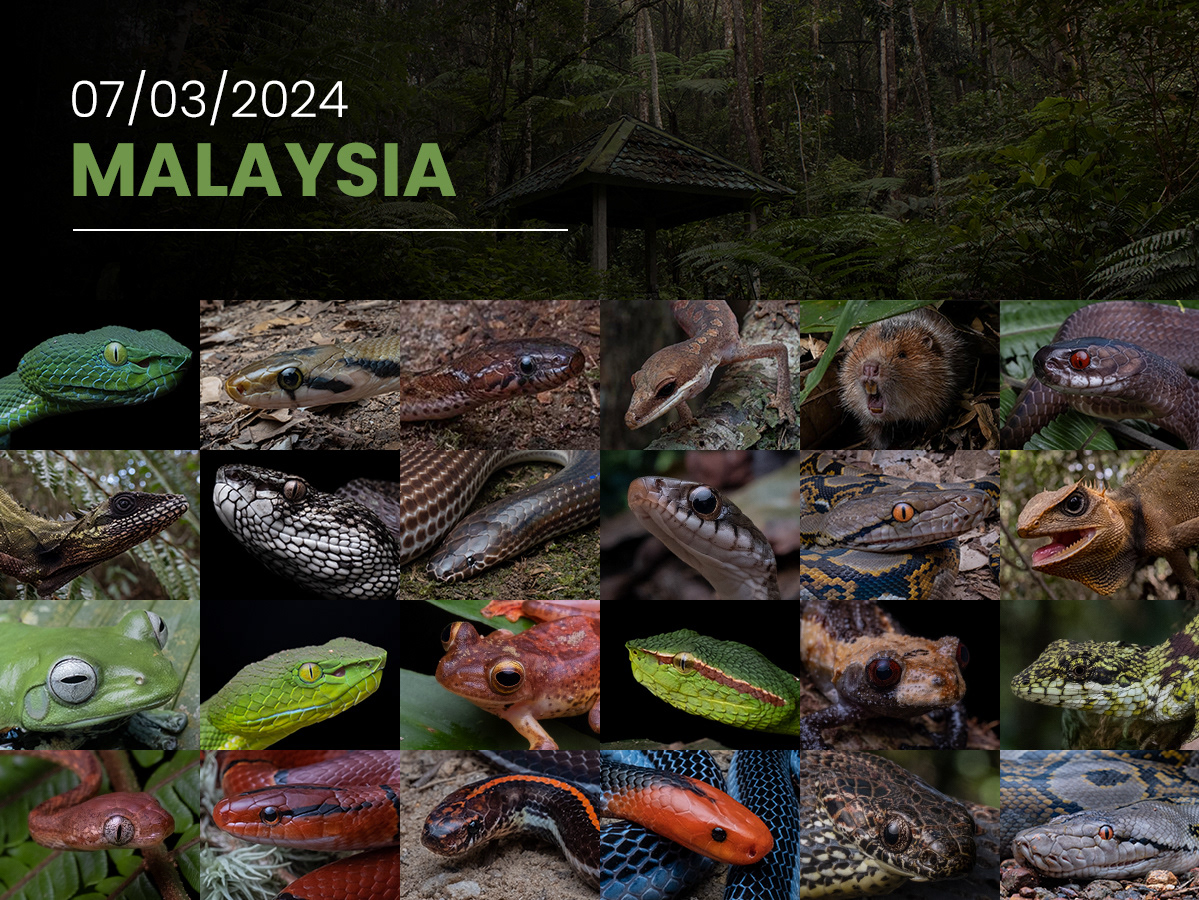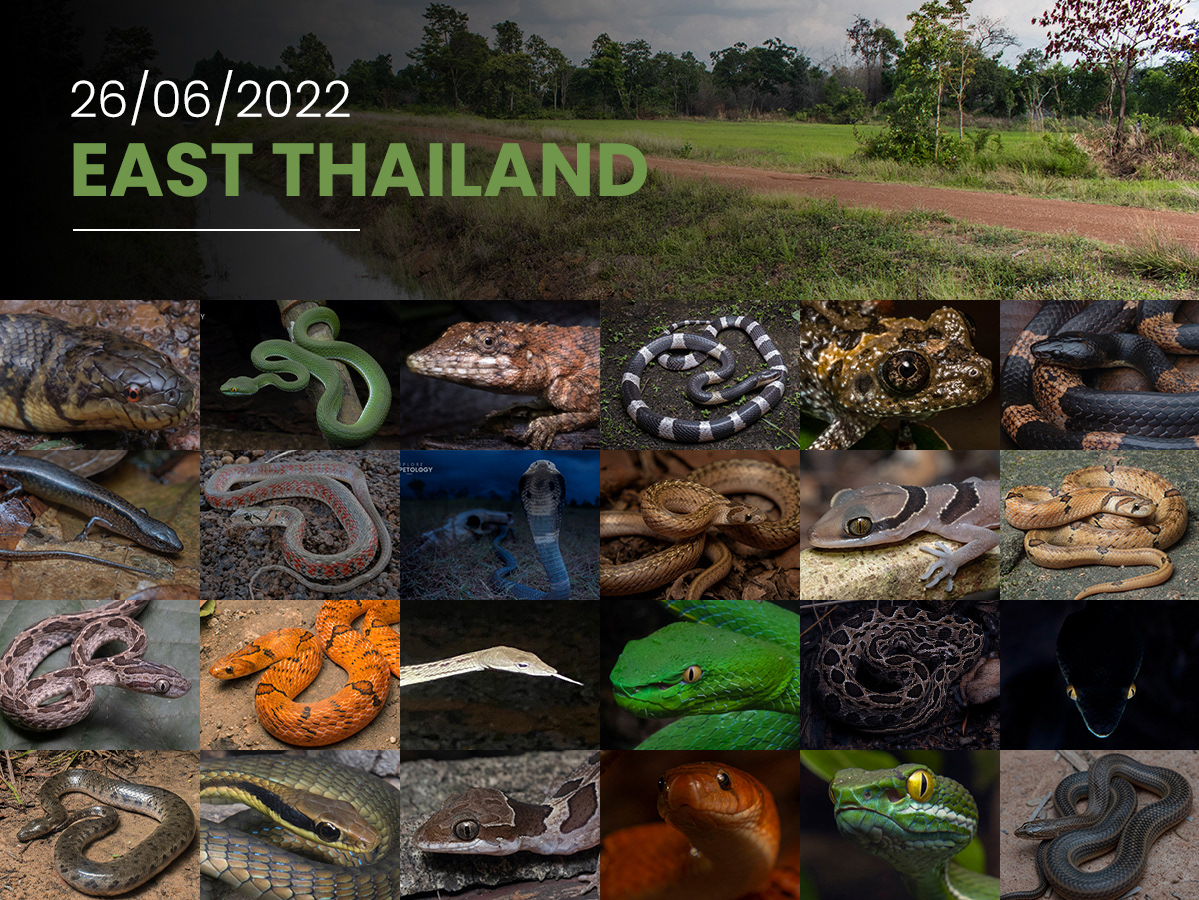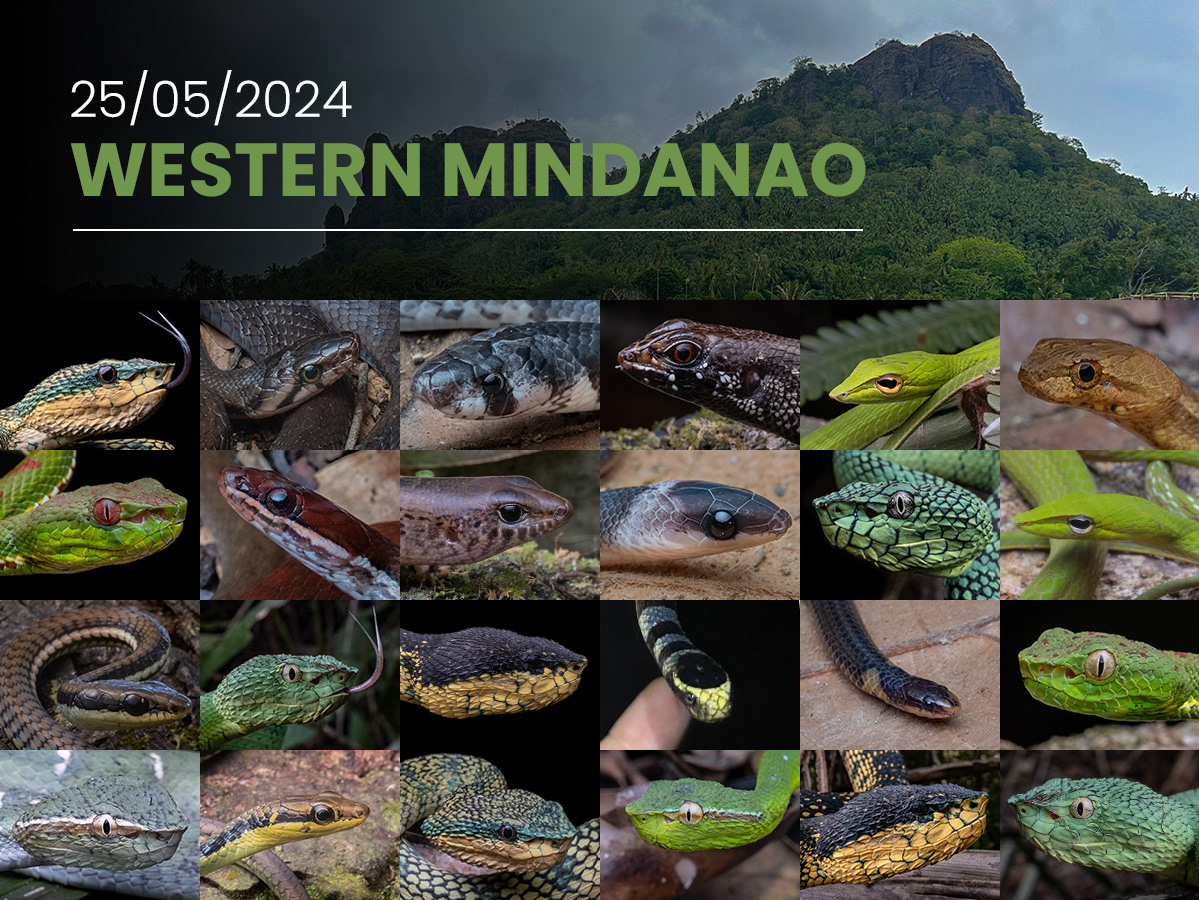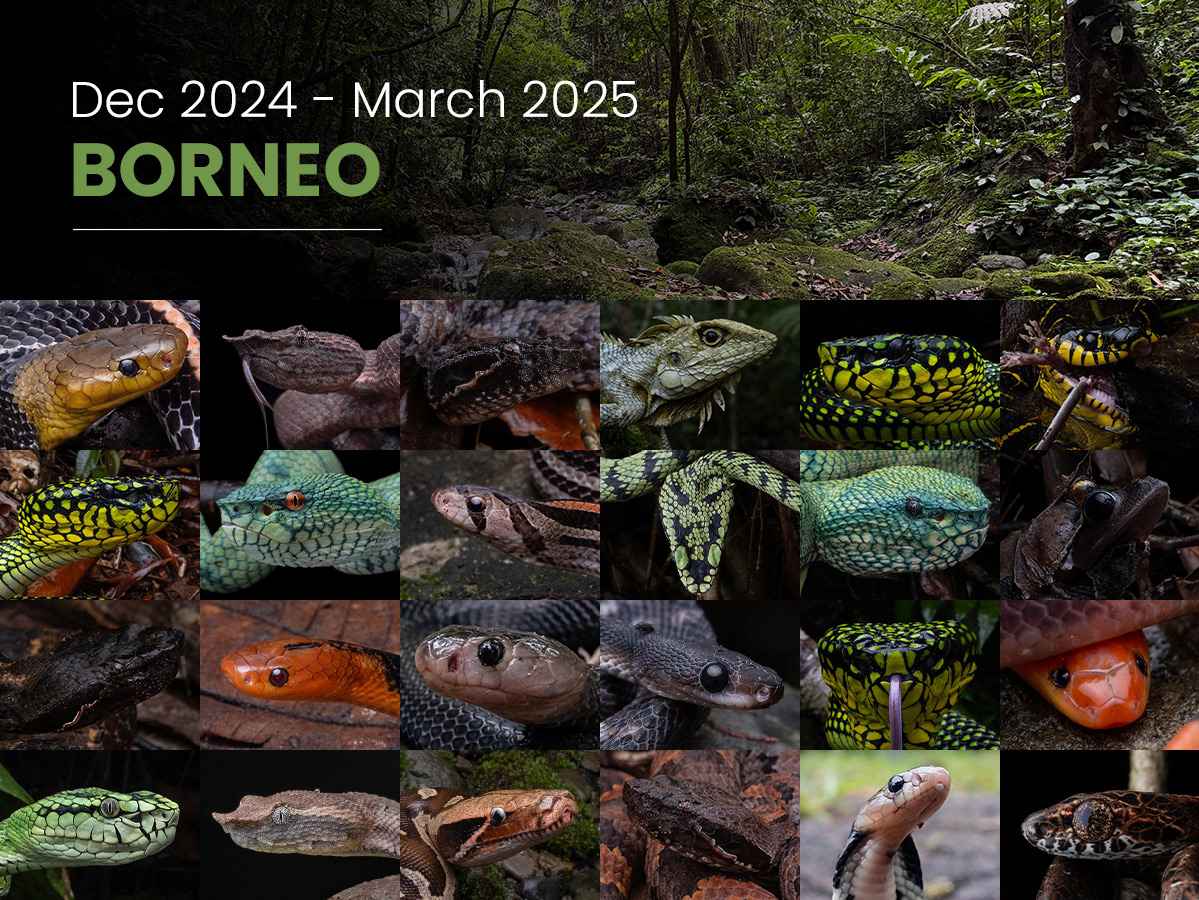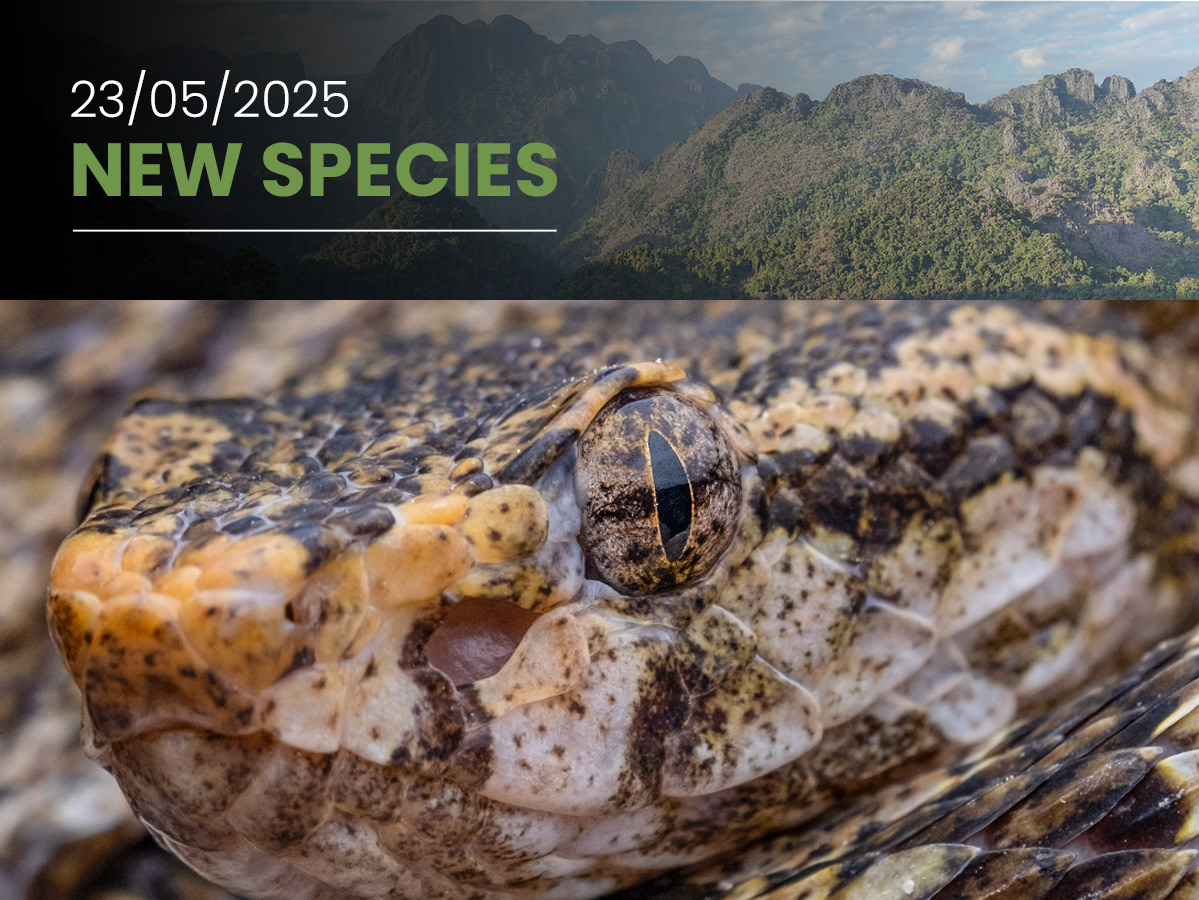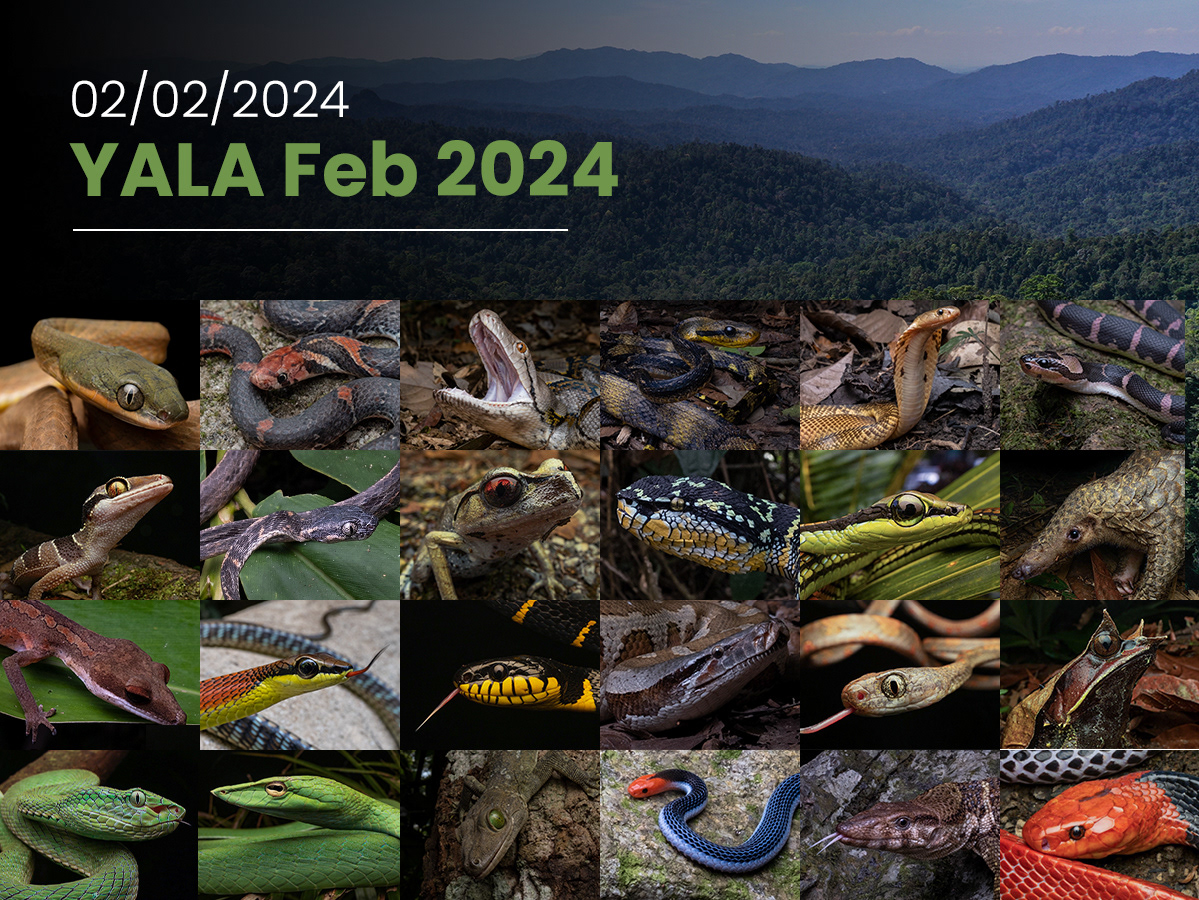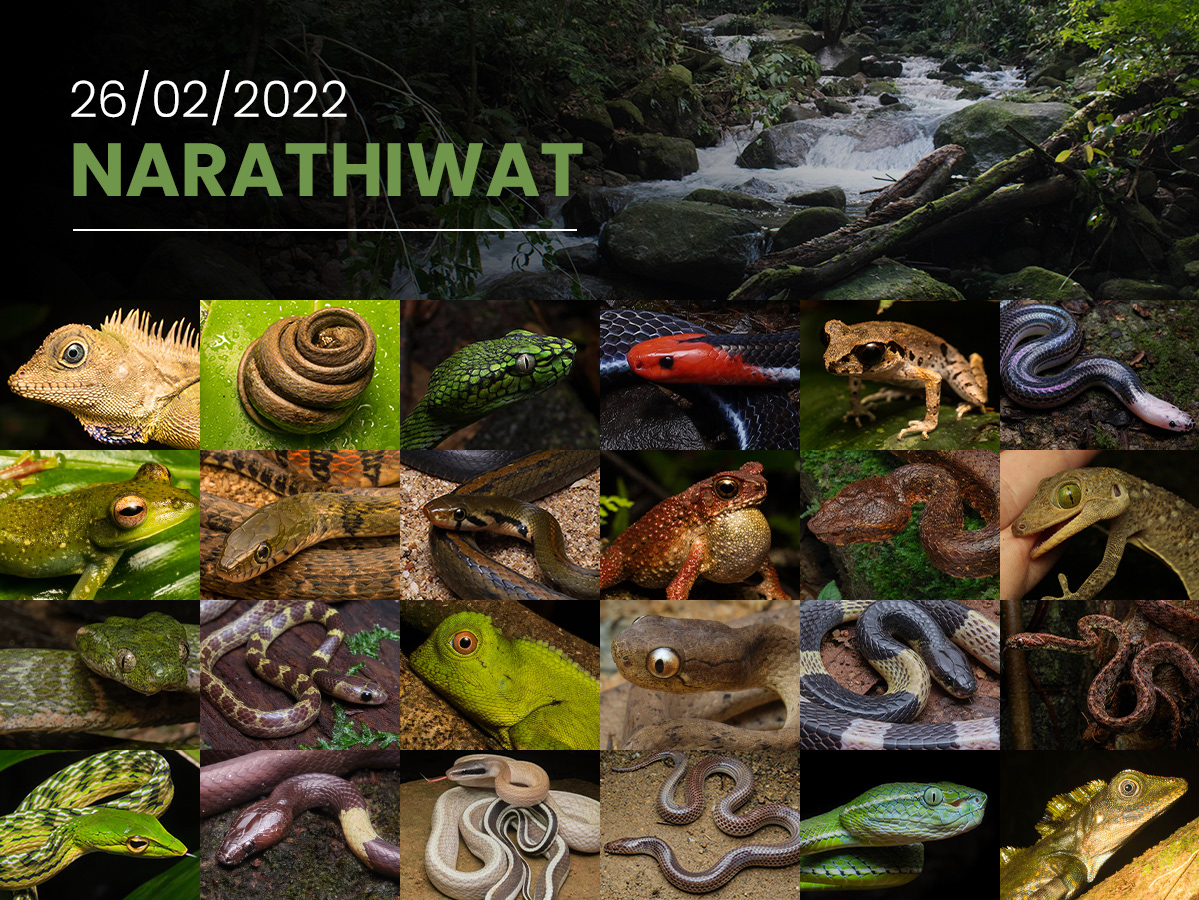Introduction
Our first Expedition North Sumatra debuted in late August 2025. Like every new expedition, there is always an element of uncertainty regarding how our scouting trips will translate into a group tour. Unpredictable weather conditions can massively impact the activity levels of target species, while it is not uncommon for reliable forest trails to become inaccessible or destroyed within the space of a few months. It can also take time to refine the perfect itinerary, with the adequate amount of days at each location. For this expedition, we opted for a 50/50 split between highlands and lowlands (5 days each), attacking our targets with a diverse range of methods. Walking trails, hiking rivers, flipping debris, road cruising and road walking were all implemented on our quest to find as many species as possible.
To book Expedition North Sumatra in March 2026, click here!
Day 1 - Berastagi
Our group met near Kualanamu (Medan) on the first day, immediately driving around 2 hours up into the mountains of Karo land. Once we checked into our accommodation and had dinner, we met with Eddy and Radit, two local guides who would help us during our time in Berastagi.
We hit the upper elevations of Mount Sibayak volcano on the first night to target Gunalen's pit viper (Trimeresurus gunaleni), a Sumatran highland endemic to montane forests above 1,600 meters. We split up into two groups to cover more ground, and ended up finding a total of 6 Trimeresurus gunaleni. This was by far the most we have ever found in one night in this area, but unfortunately all juveniles and subadults. We were also surprised by 3 Sumatran mountain snakes (Elapoidis sumatranus) all found within 10 minutes during a period of light rain, the first of which was found directly underneath an ambushing T. gunaleni. When we found this species on our last scouting trip, it was one of the very first photo records. Unsurprisingly, we did not see a single other individual across all further nights in the area.
We also observed several of the area's iconic frogs and lizards during this first evening, but the only other snake seen was a fresh DOR (dead on road) Variable reed snake (Calamaria lumbricoidea).

In-situ of Elapoidis sumatranus and Trimeresurus gunaleni.

Sumatran mountain snake (Elapoidis sumatranus).
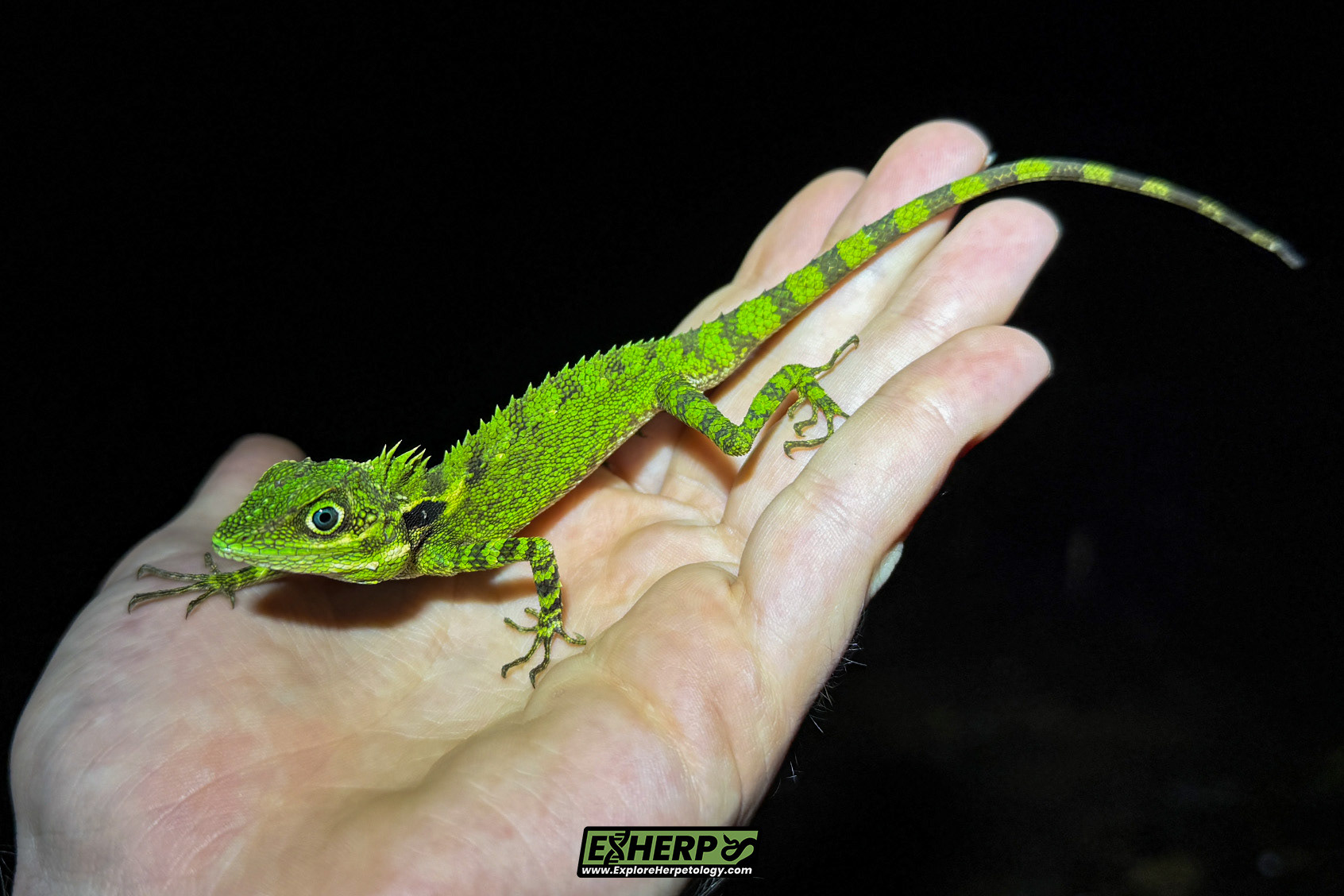
Simbolon mountain dragon (Dendragama schneideri).
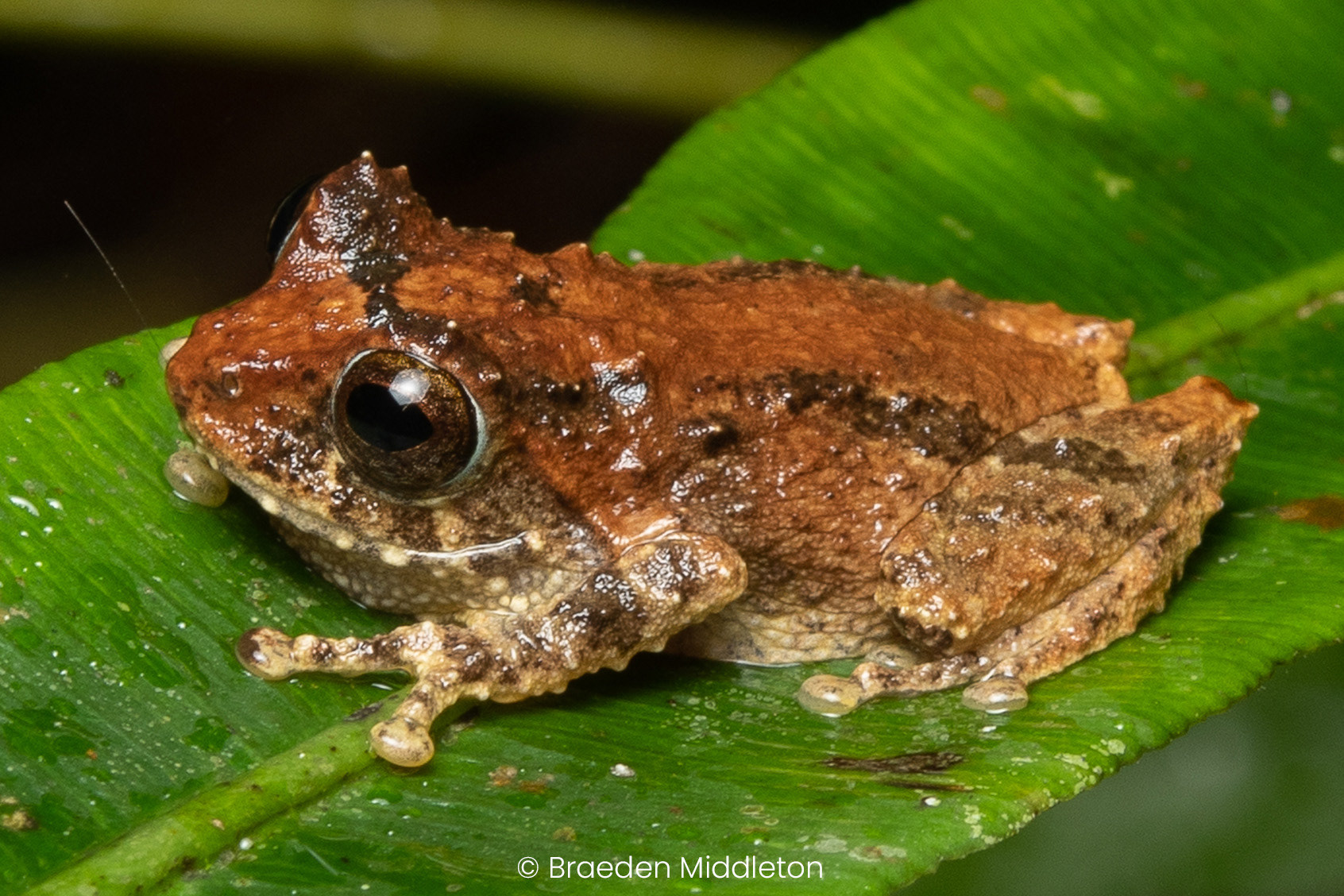
Peter's bush frog (Philautus petersi).
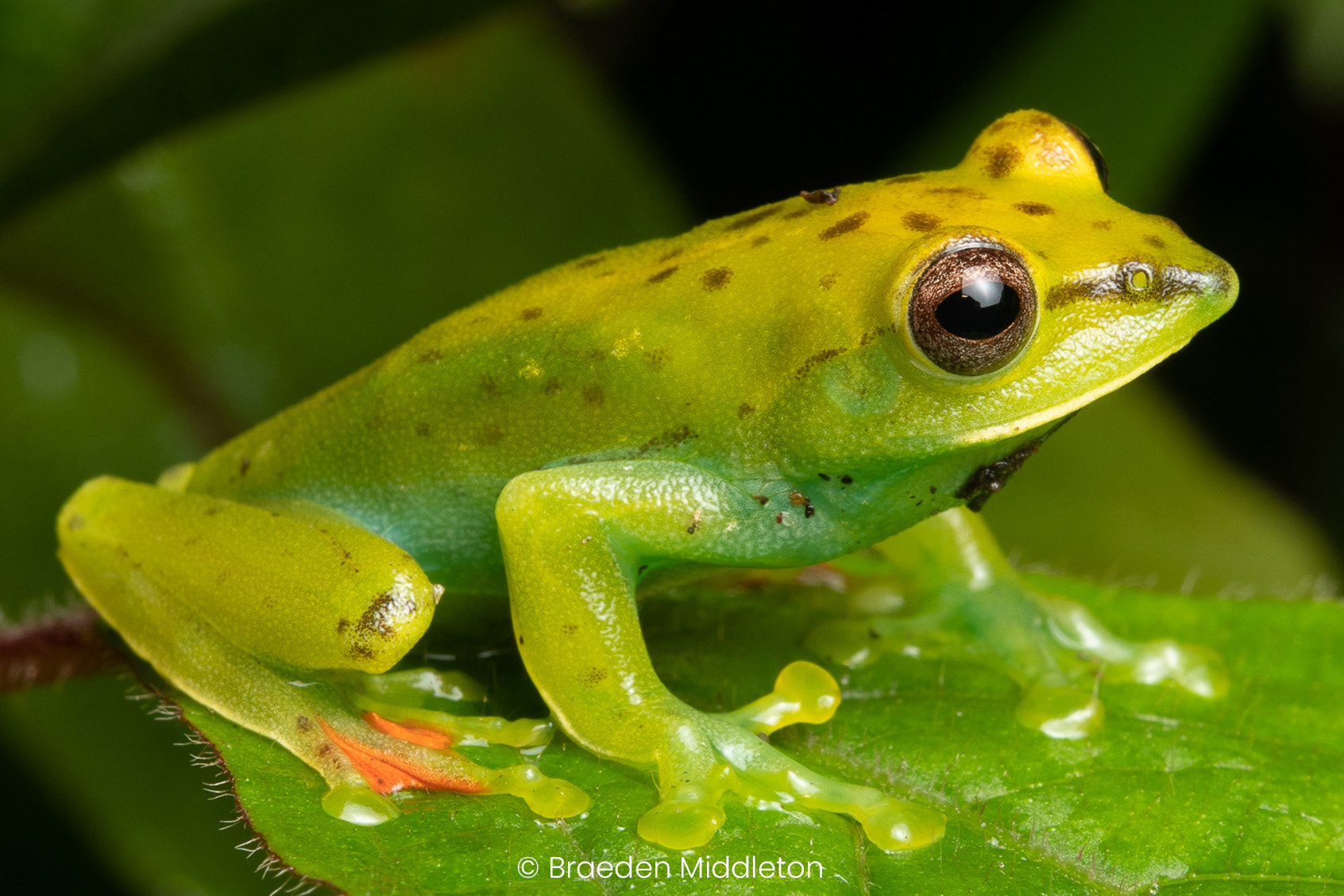
Zhangixalus achantharrhena
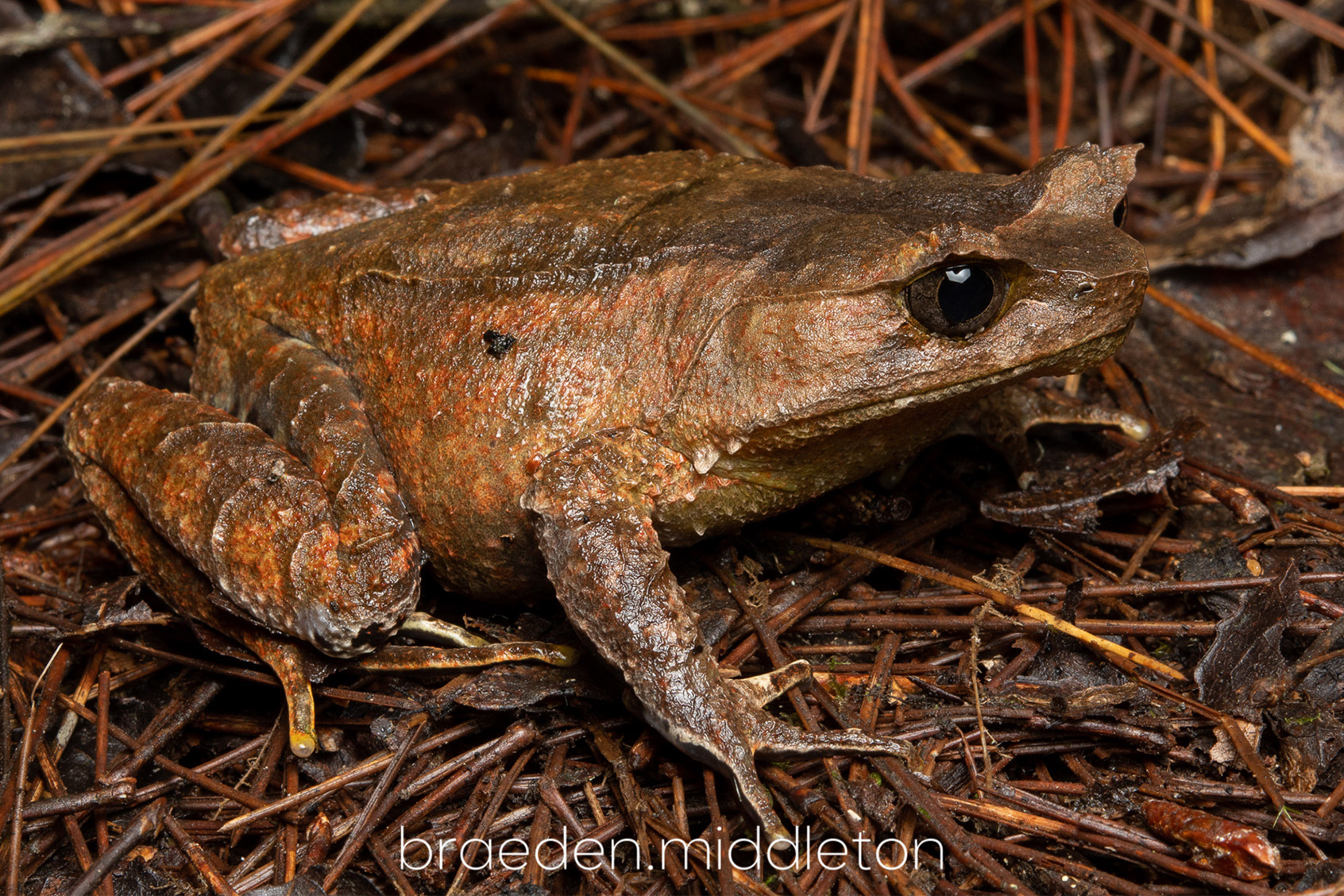
Megophrys parallela
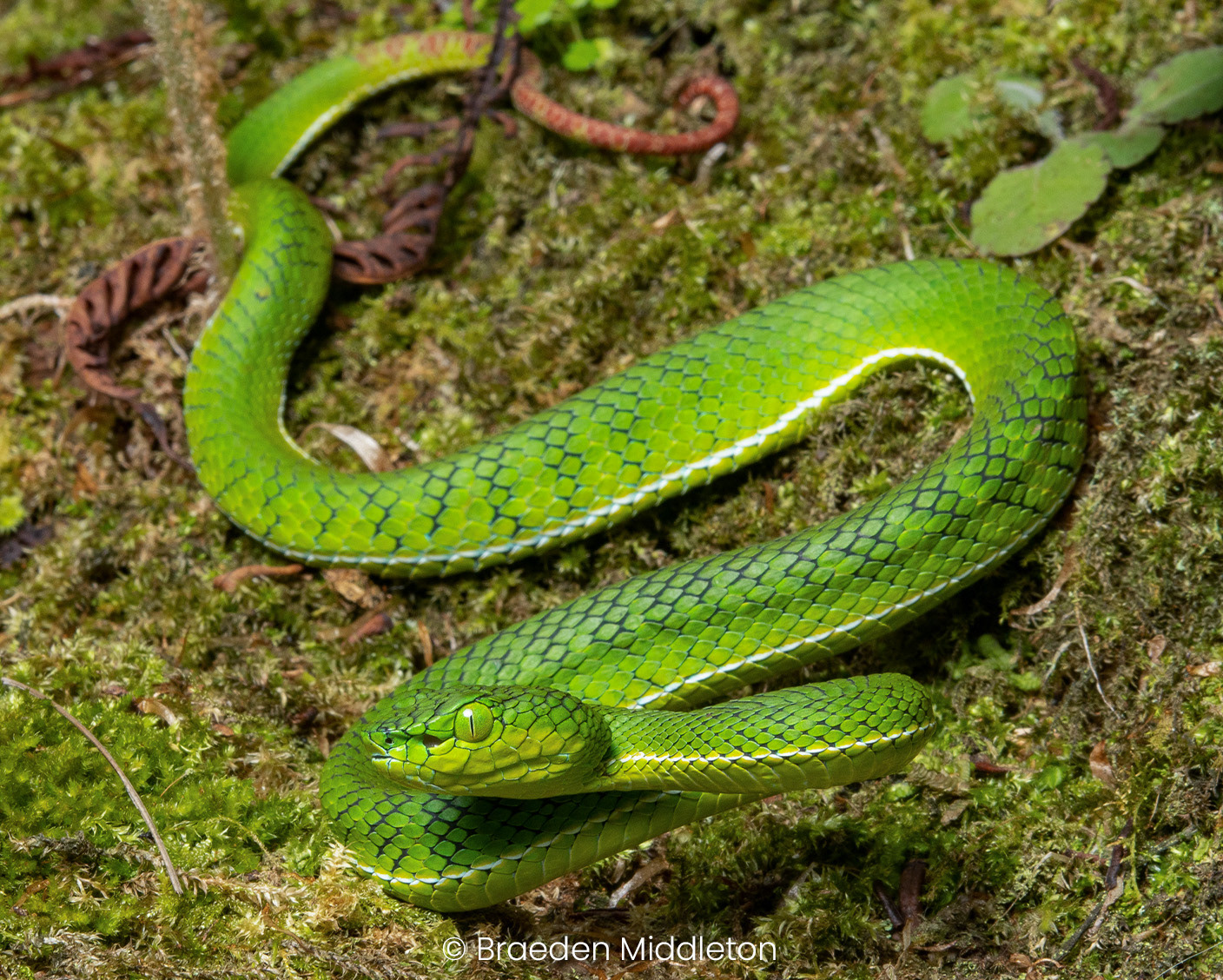
The largest of the 5 Gunalen's pit vipers (Trimeresurus gunaleni) seen.
Day 2 - Berastagi
The following day, we did some searching during the daytime but only found a freshly killled (DOR) Sumatran beauty ratsnake (Elaphe taeniura), a shame because it is one of our top targets here. The night started extremely slow as well, with not a single notable find until almost 2 hours in when Tomasz flipped a very rare lined blind snake (Ramphotyphlops lineatus) - a 'lifer' species for our entire team.
This discovery started a flipping rampage, whereby we turned over every single log and piece of trash possible - combining our efforts to lift huge parts of fallen trees which were embedded in the soil. This completely turned our night around, and we uncovered several remarkable reptiles within a short amount of time. Reptiles flipped under logs included several worm lizards (Dibamus sp.), an unknown skink (Sphenomorphus sp.), Padang reed snake (Calamaria abstrusa) and a Sumatran larut skink (Larutia sp.). A short walk at a waterfall also produced a large female Toba Lake pit viper (Trimeresurus sabahi toba) and many Splendid stream frogs (Hylarana fantastica), as well as a axanthic poisonous rock frog (Odorrana hosii). We discovered a population of this rare mutation on one of our previous scouting trips, and were very happy to see them again.
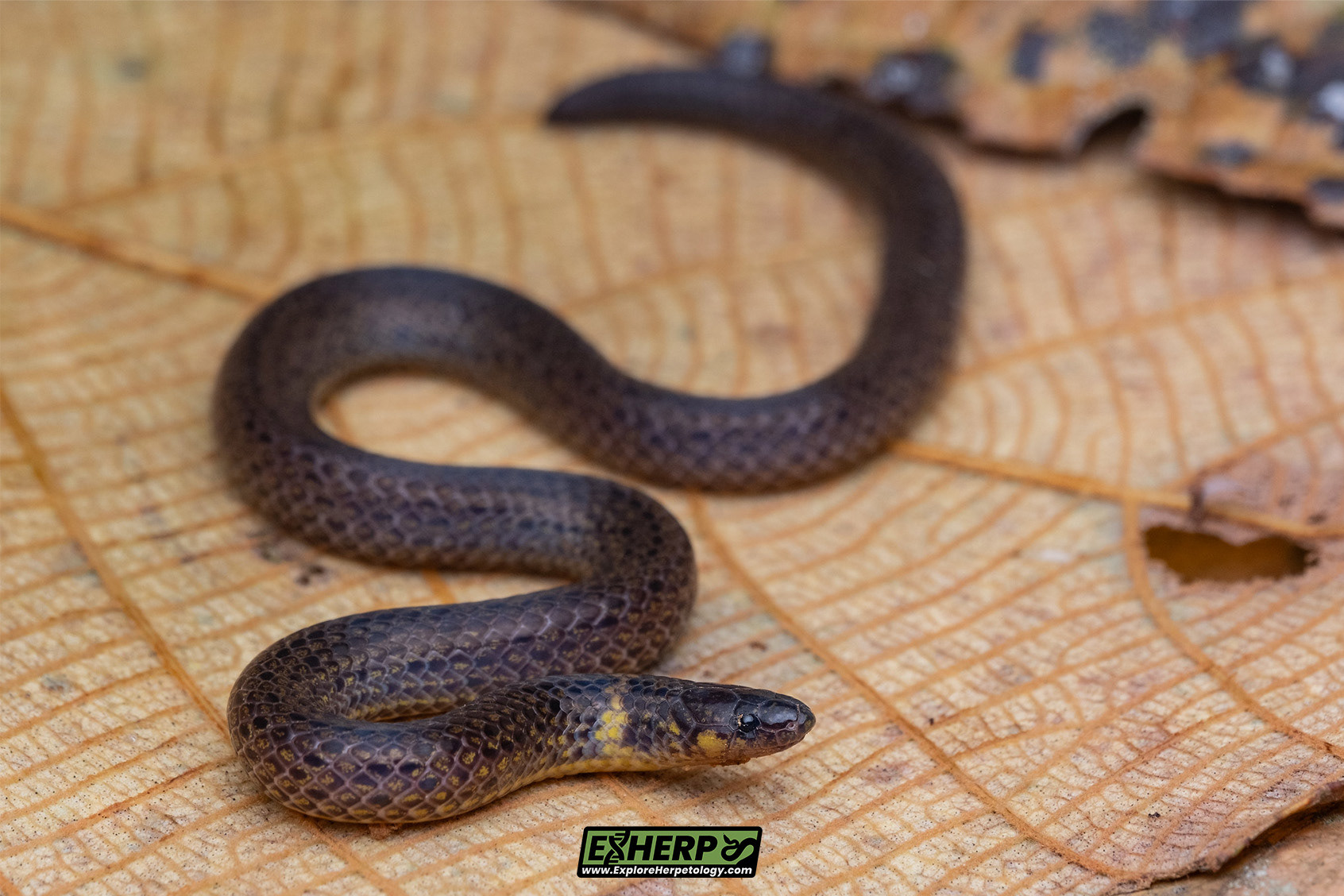
Padang reed snake (Calamaria abstrusa).
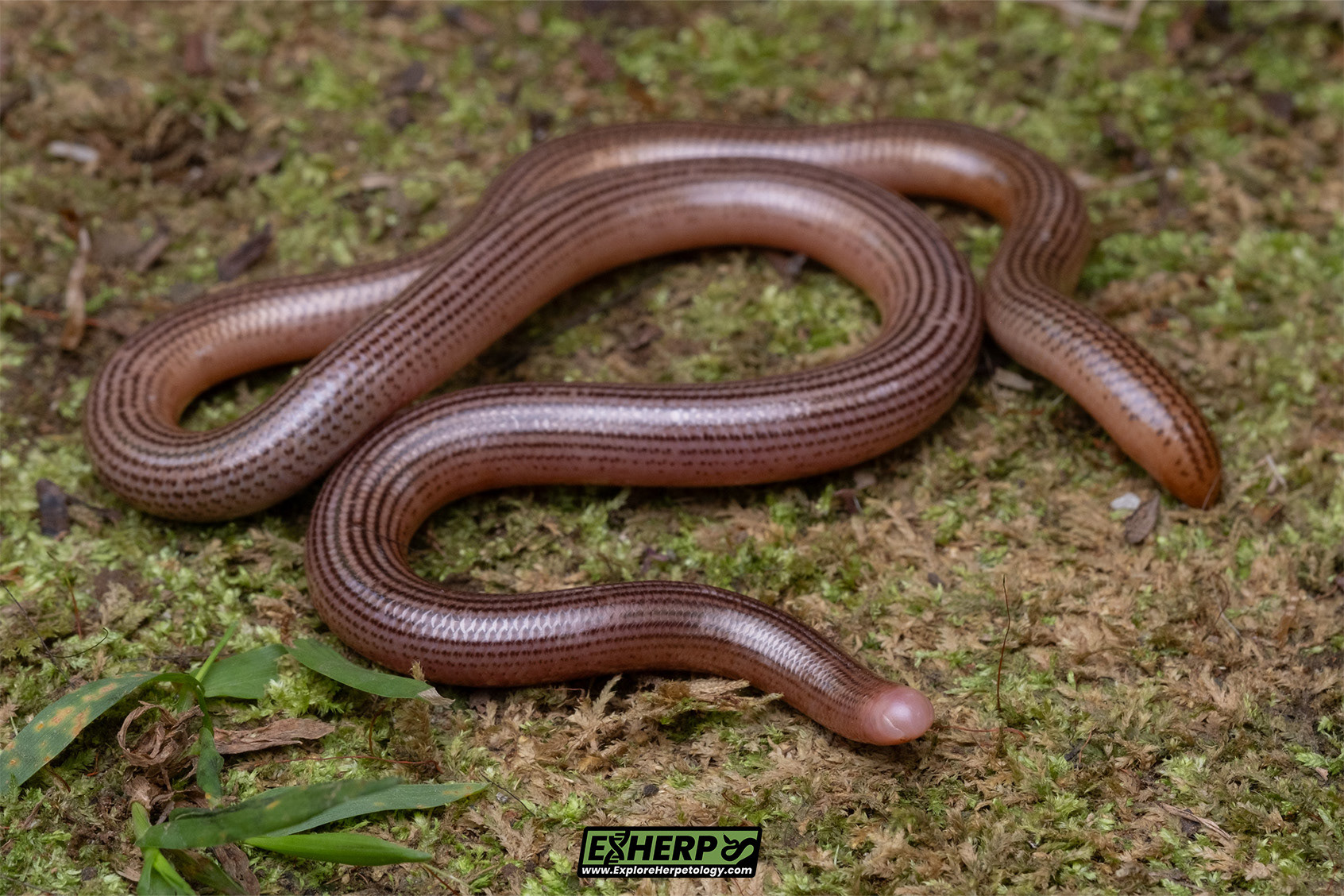
Lined blind snake (Ramphotyphlops lineatus).
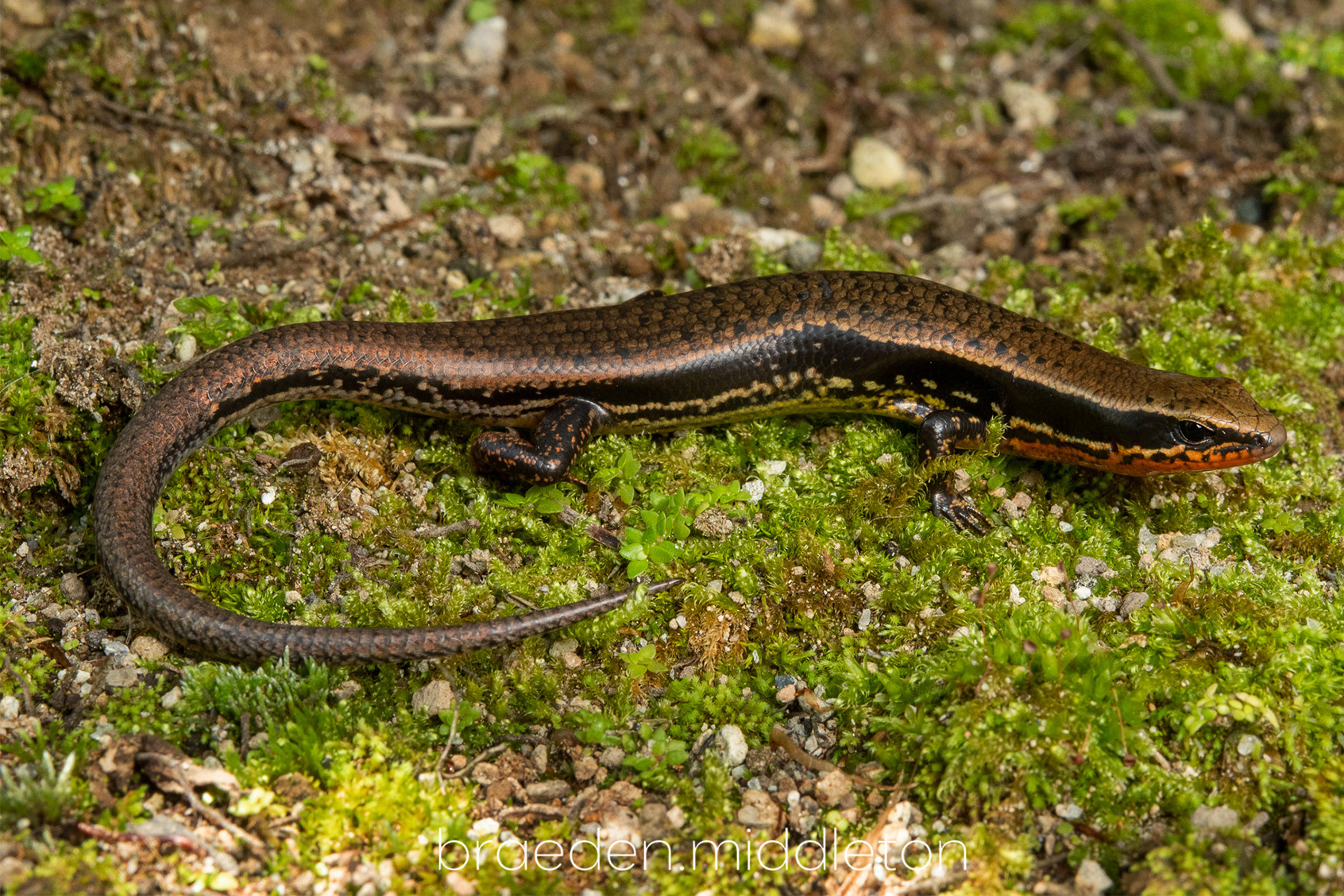
Litter skink (Sphenomorphus sp.)
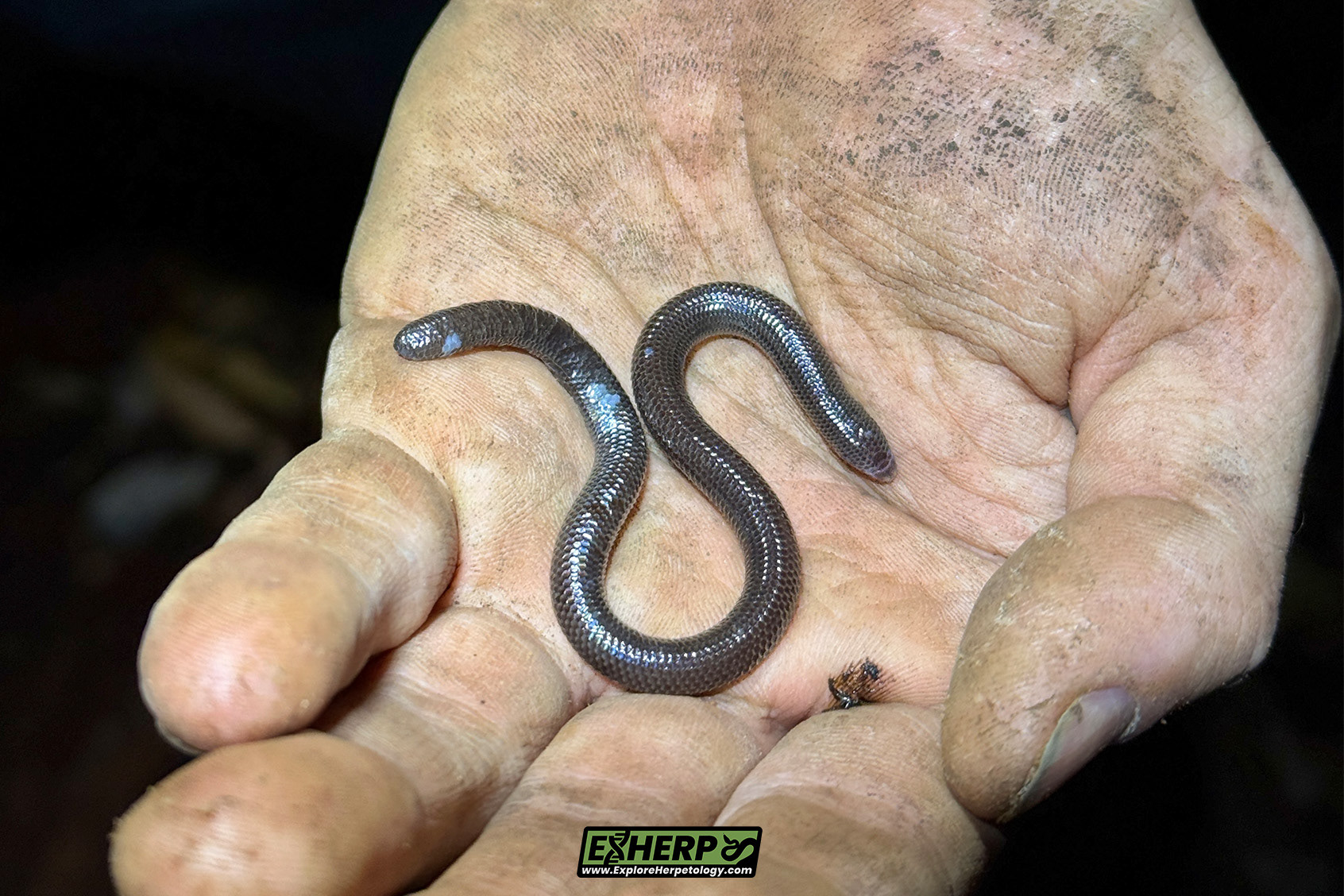
Worm lizard (Dibamus sp.)

Axanthic poisonous rock frog (Odorrana hosii).
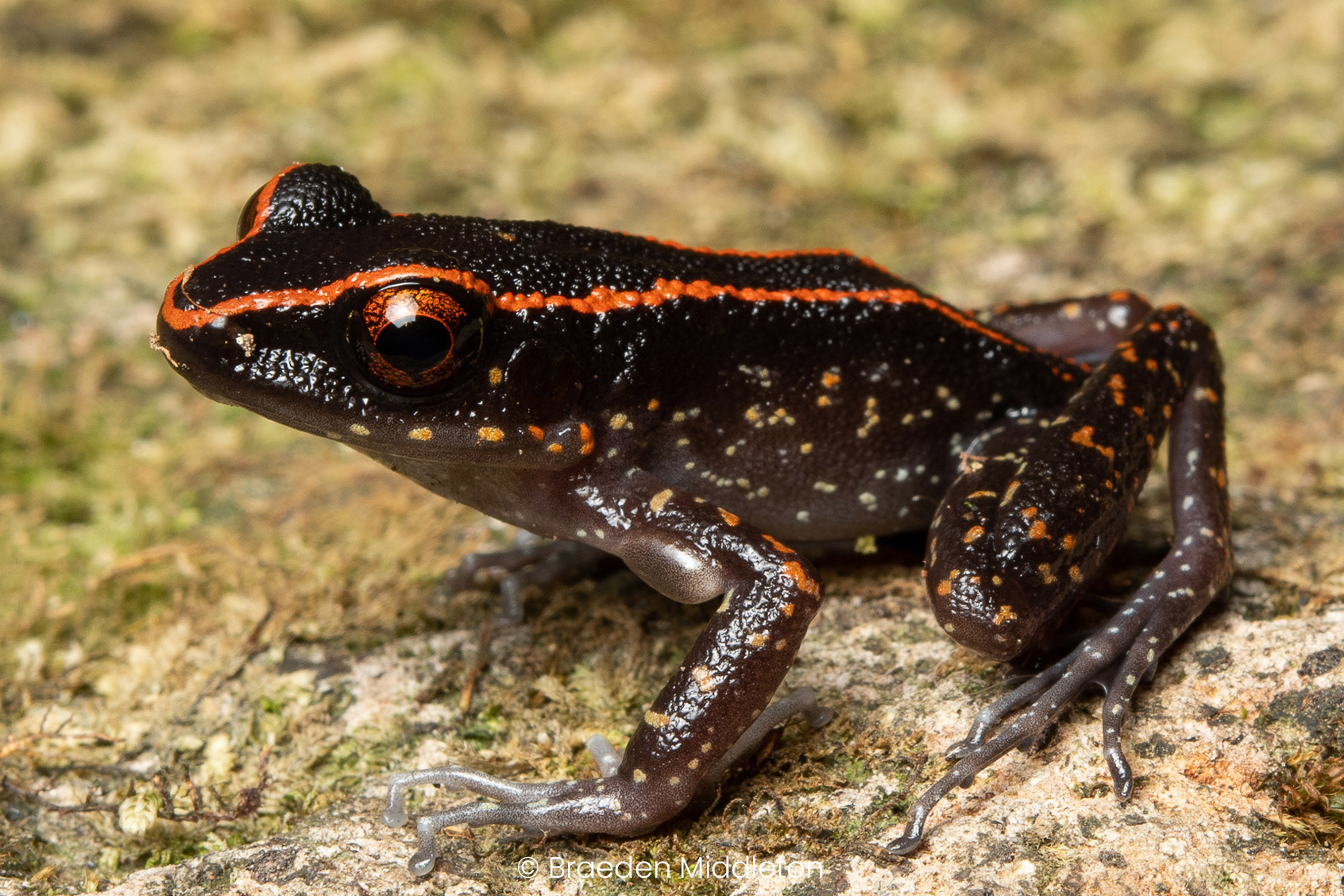
Splendid stream frog (Hylarana fantastica).
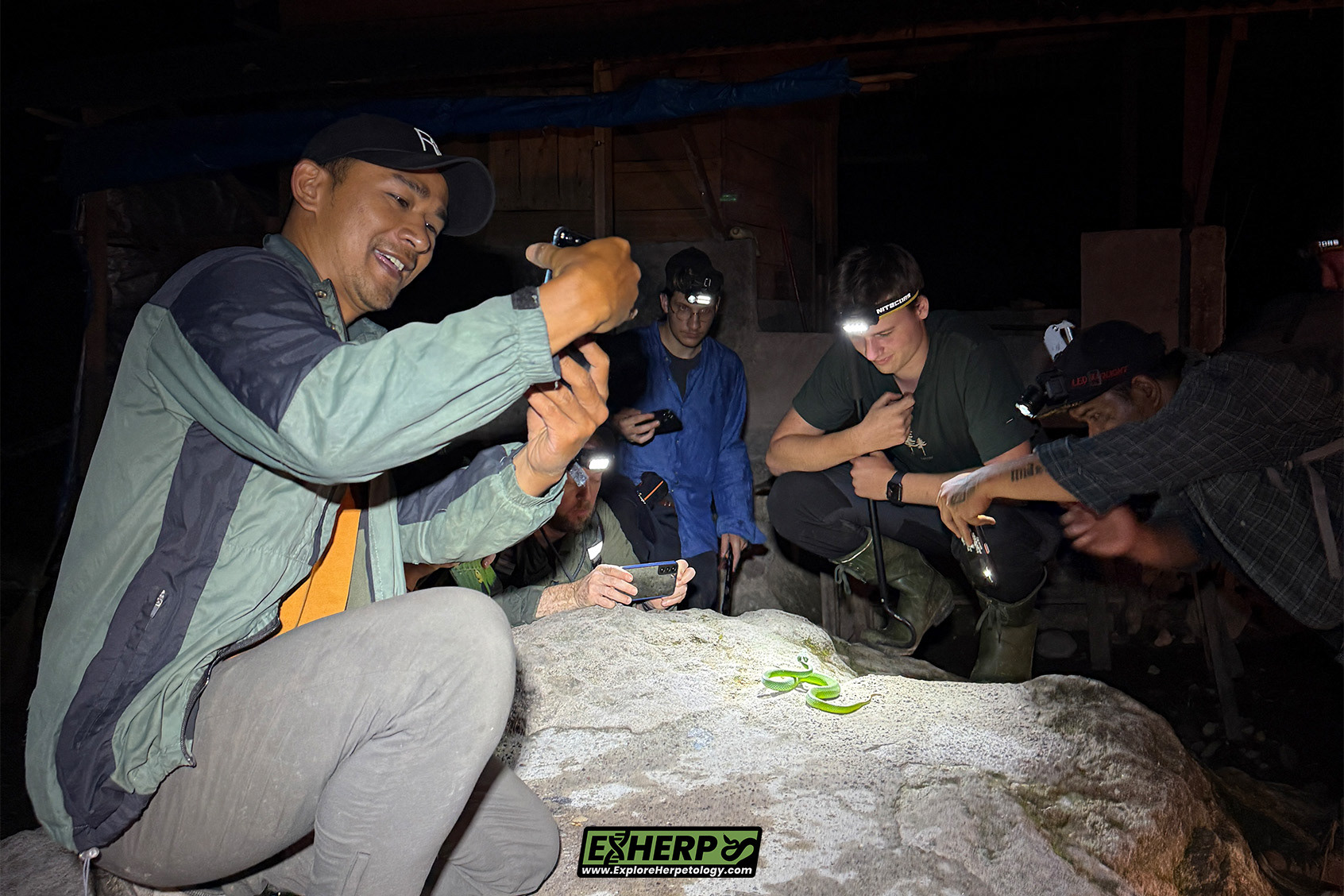
The group enjoying a large Toba Lake pit viper.
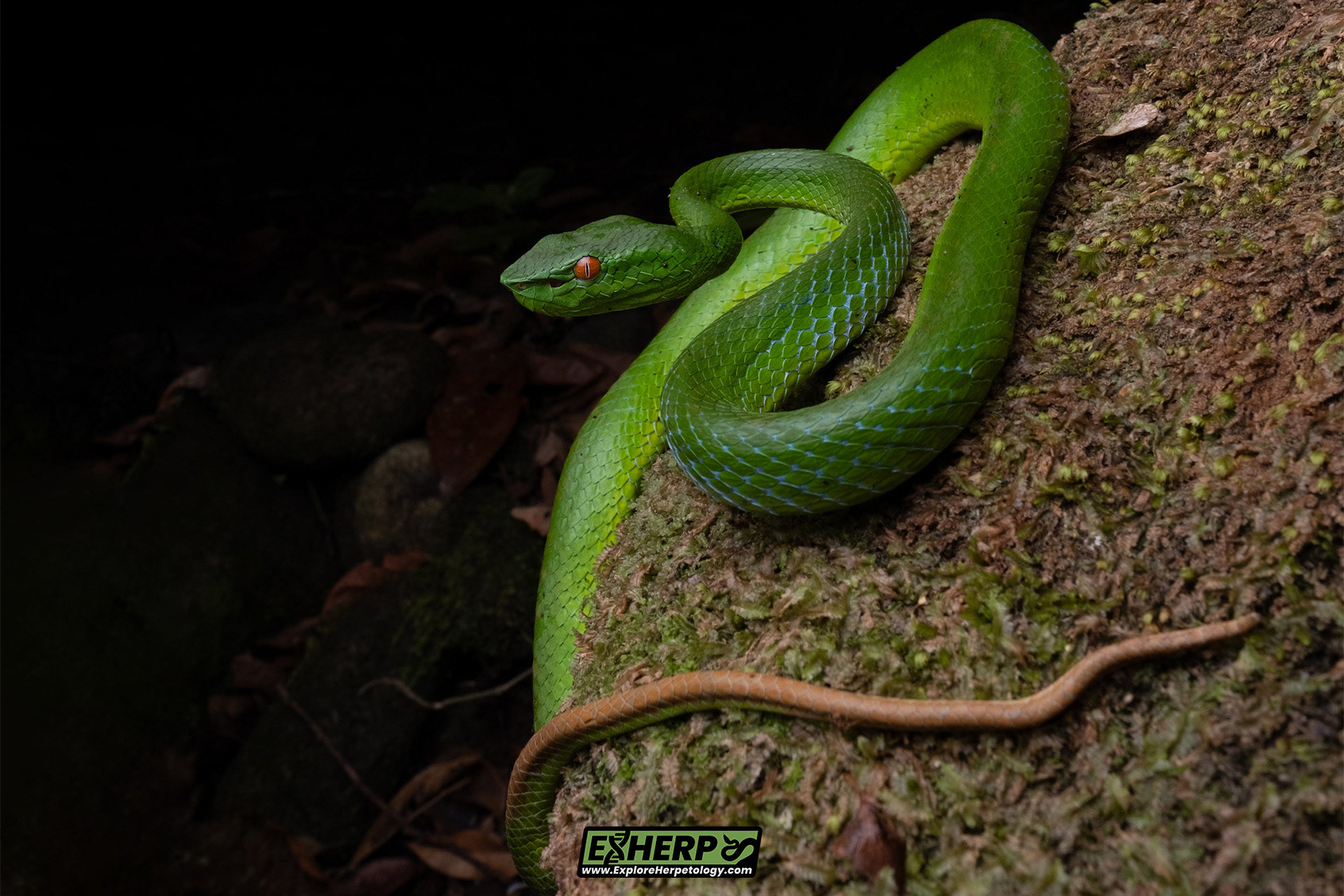
Toba Lake pit viper (Trimeresurus sabahi toba).
Day 3 - Berastagi
The following morning, we woke up and drove to a nearby restaurant for a late breakfast. En-route, we were abruptly shocked awake by a big snake stretched across the road. We jumped out of the car to find a stunning Sumatran beauty ratsnake (Elaphe taeniura ssp.) which was full of attitude. This road is very busy at this time so we were incredibly lucky to find this snake before another vehicle ran it over. Later in the daytime, we did some flipping at a recreational forest and Marcus flipped a much larger Sumatran larut skink (Larutia sumatrensis). These short-limbed skinks have an incredibly elongated tail and body, moving much more like a snake than a typical scuttling lizard.
At night, we went back to the mid-montane (~900 meters over sea level) site and began with some road cruising in mixed forest-plantation land. The first snake encountered was a smooth slug snake (Asthenodipsas laevis), quickly followed by a very large Malayan banded coral snake (Calliophis intestinalis). We also cruised a keeled slug snake (Pareas carinatus) and a sunbeam snake (Xenopeltis unicolor). Along with these road-cruised finds, we caught a suspected dwarf reed snake (Pseudorabdion cf. longiceps) in a roadside drainage ditch, saw several more female Lake Toba pit vipers (Trimeresurus s. toba) near the streams and 2 oriental vine snakes (Ahaetulla prasina) sleeping beside the road.
However, the best find of the night was saved until last, when we decided to do a quick late-night walk at the high elevations (1,600 - 1,700m asl.). We focused on digging in leaf litter for fossorial species, but ended up uncovering a totally unexpected species. Crawling out of the leaf litter we were flipping was a beautiful sub-adult Sumatran leaf-nosed pit viper (Craspedocephalus andalasensis) - a highland-dwelling species which can be quite challenging to find.
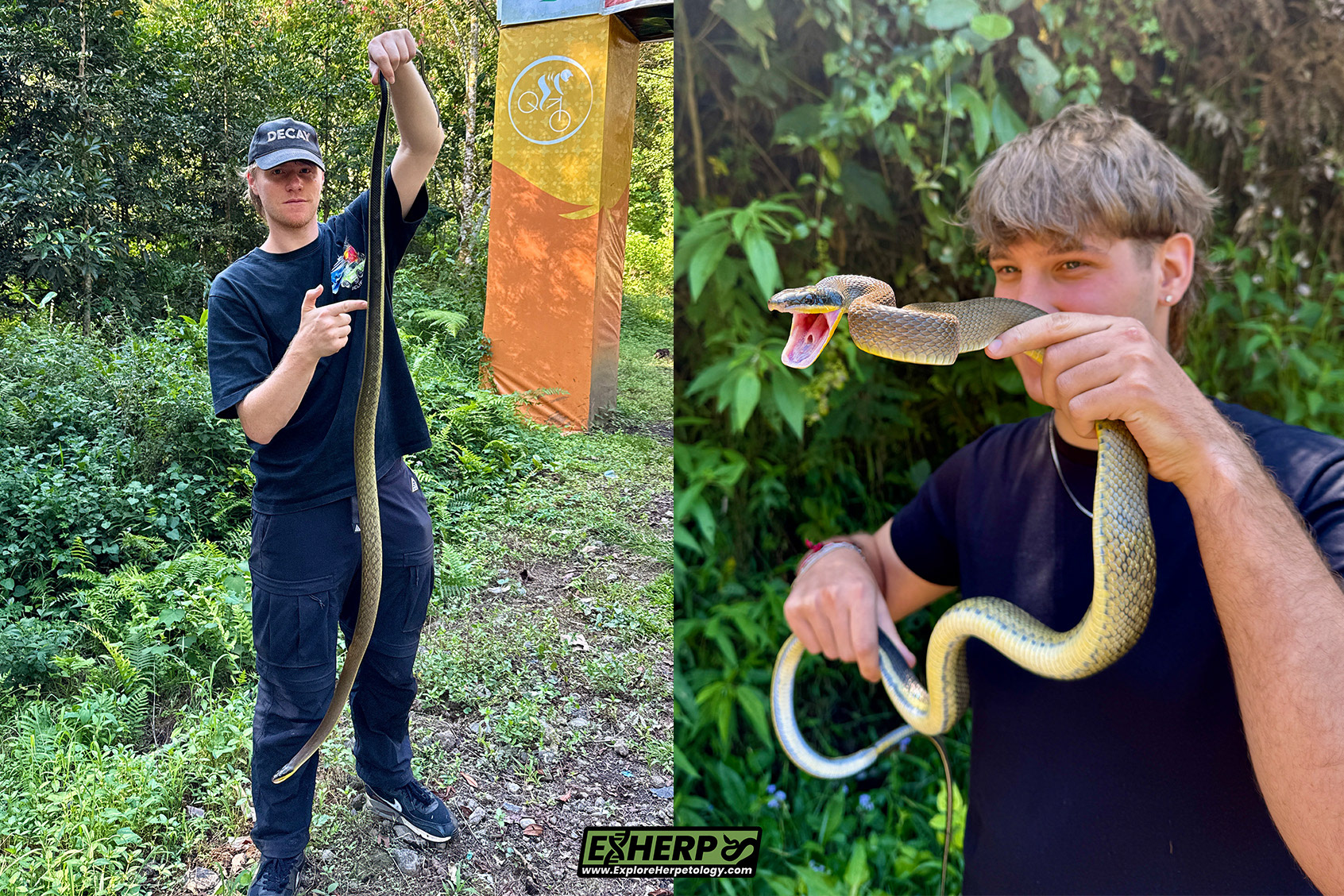
Sumatran beauty ratsnake (Elaphe taeniura ssp.).
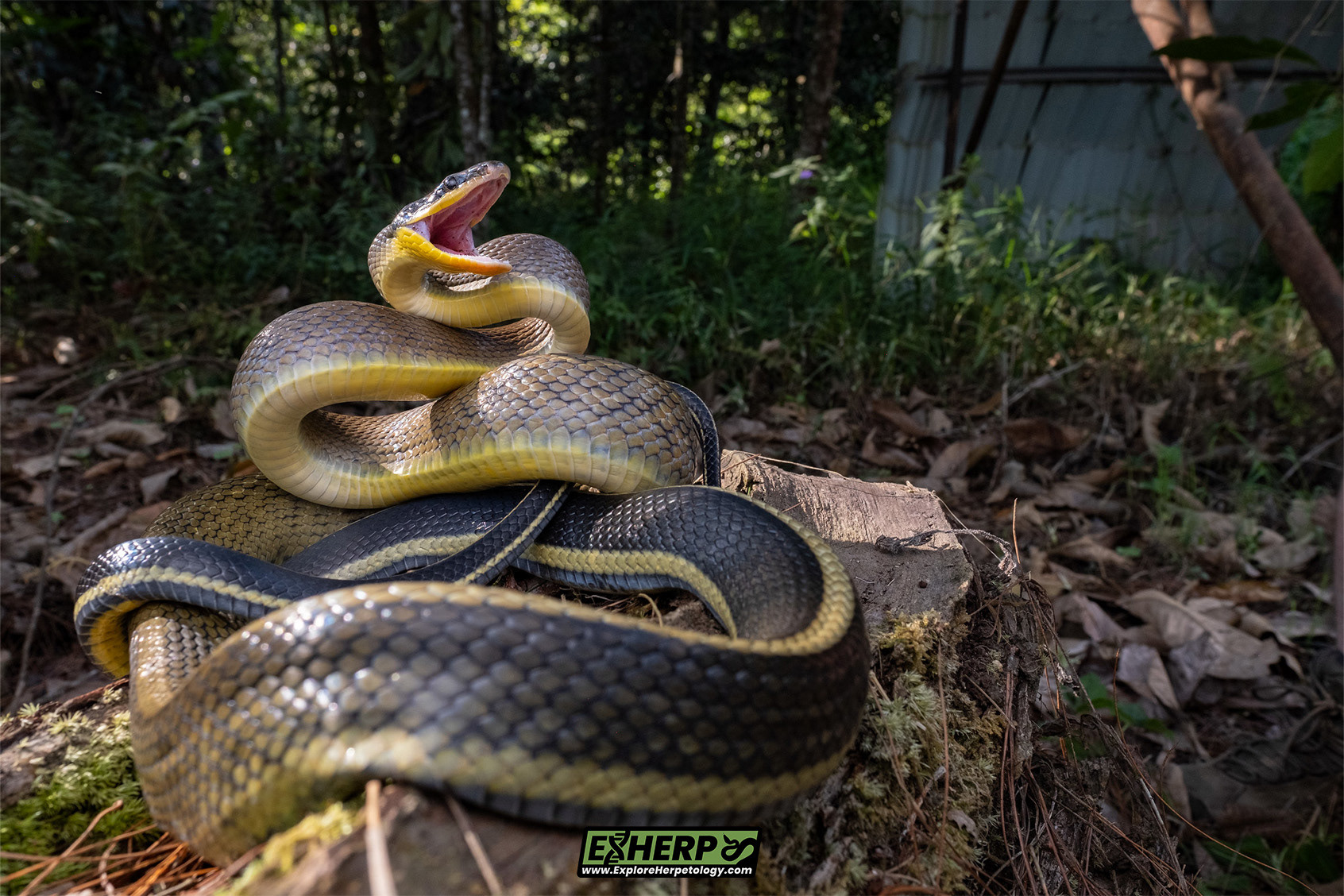
Sumatran beauty ratsnake (Elaphe taeniura ssp.).
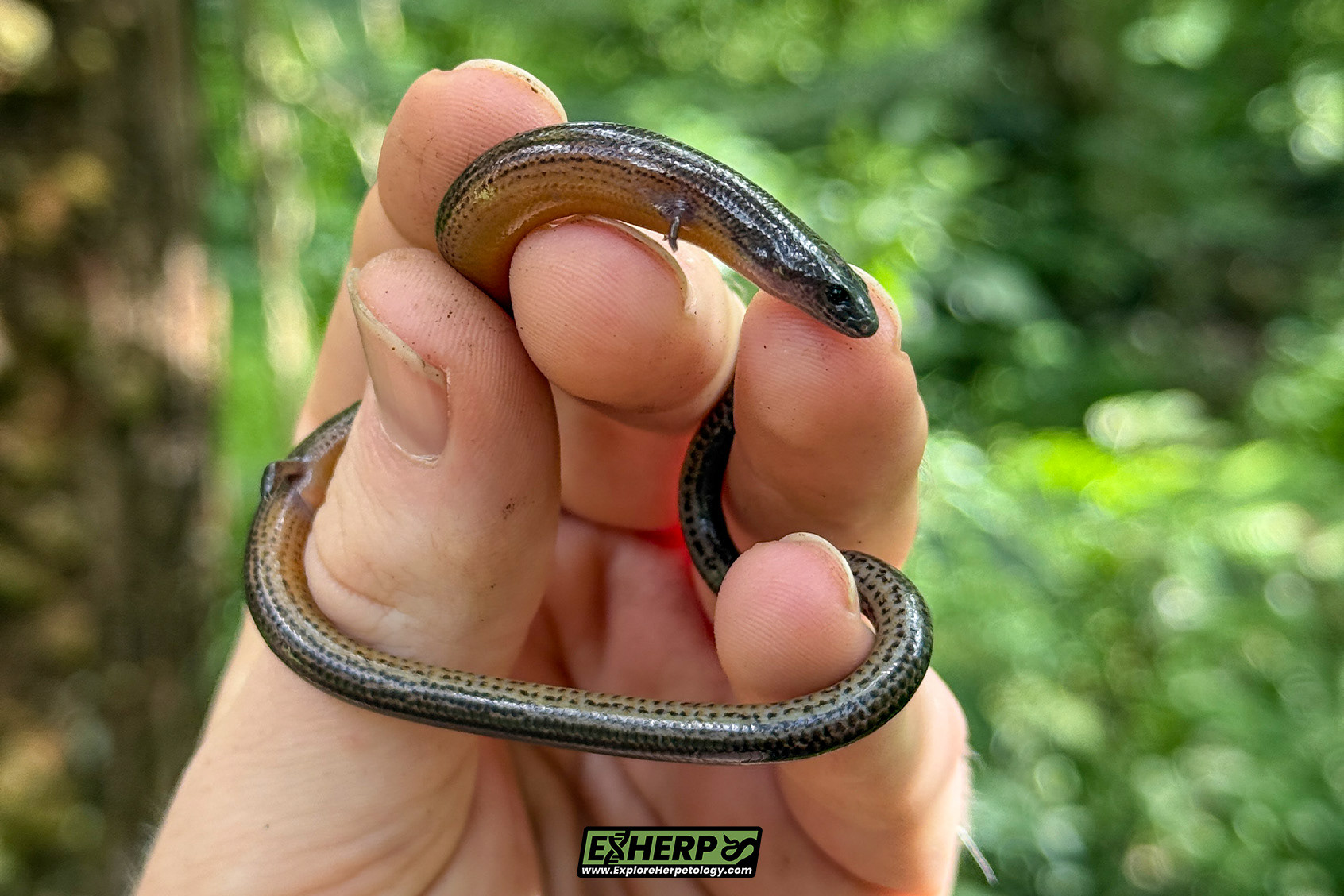
Sumatran larut skink (Larutia sumatrensis).
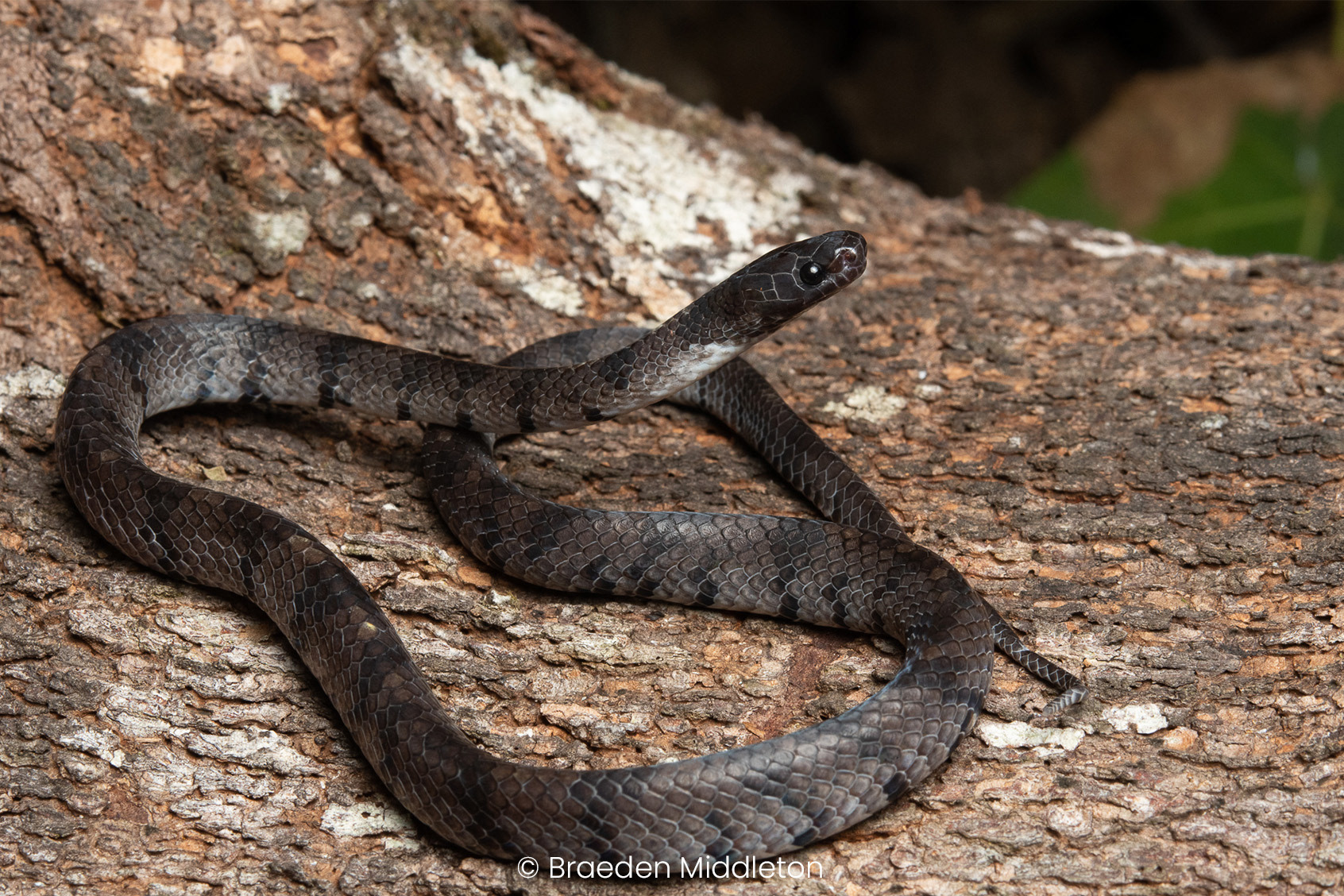
Smooth slug snake (Asthenodipsas laevis).

Malayan banded coral snake (Calliophis intestinalis).
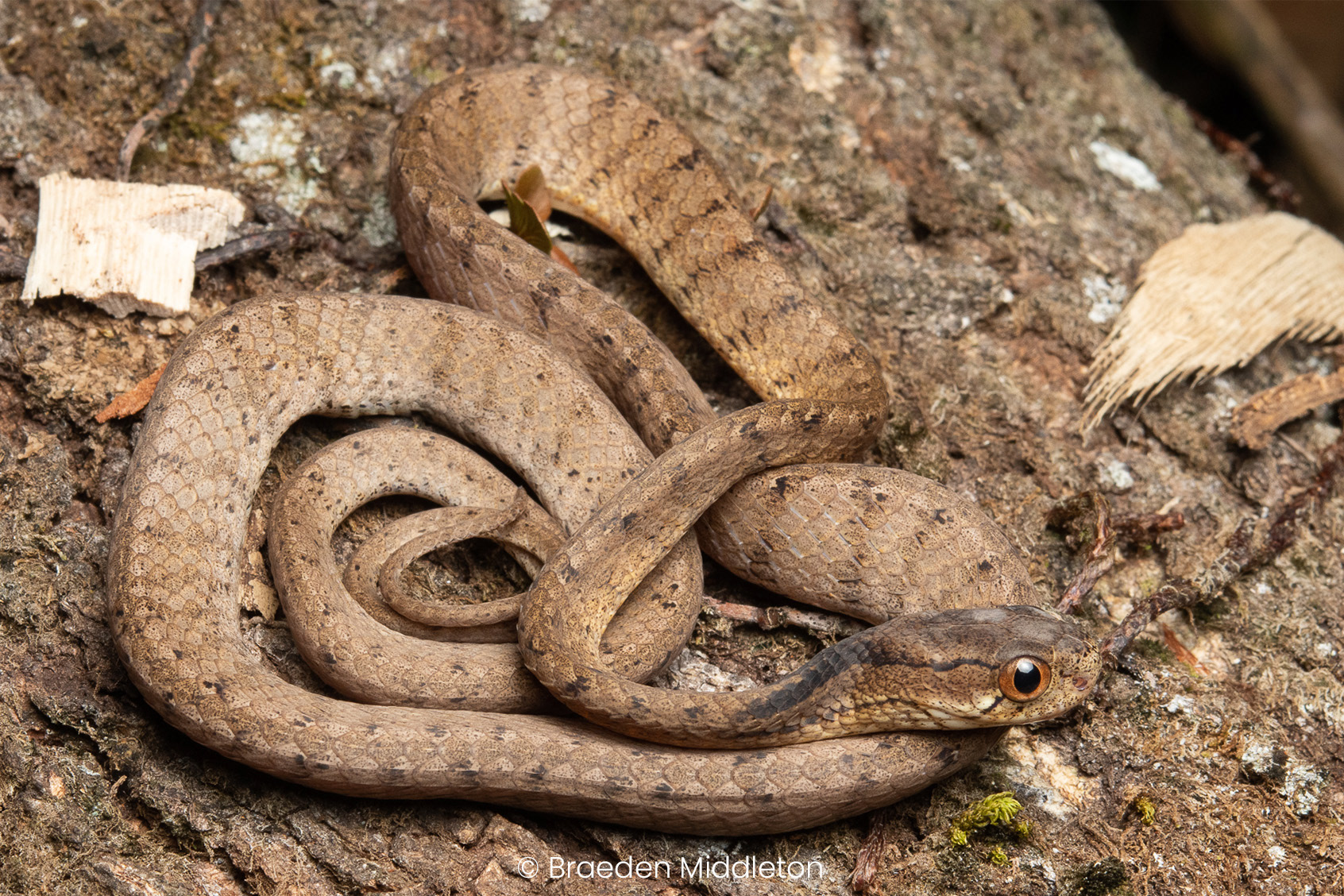
Keeled slug snake (Pareas carinatus).
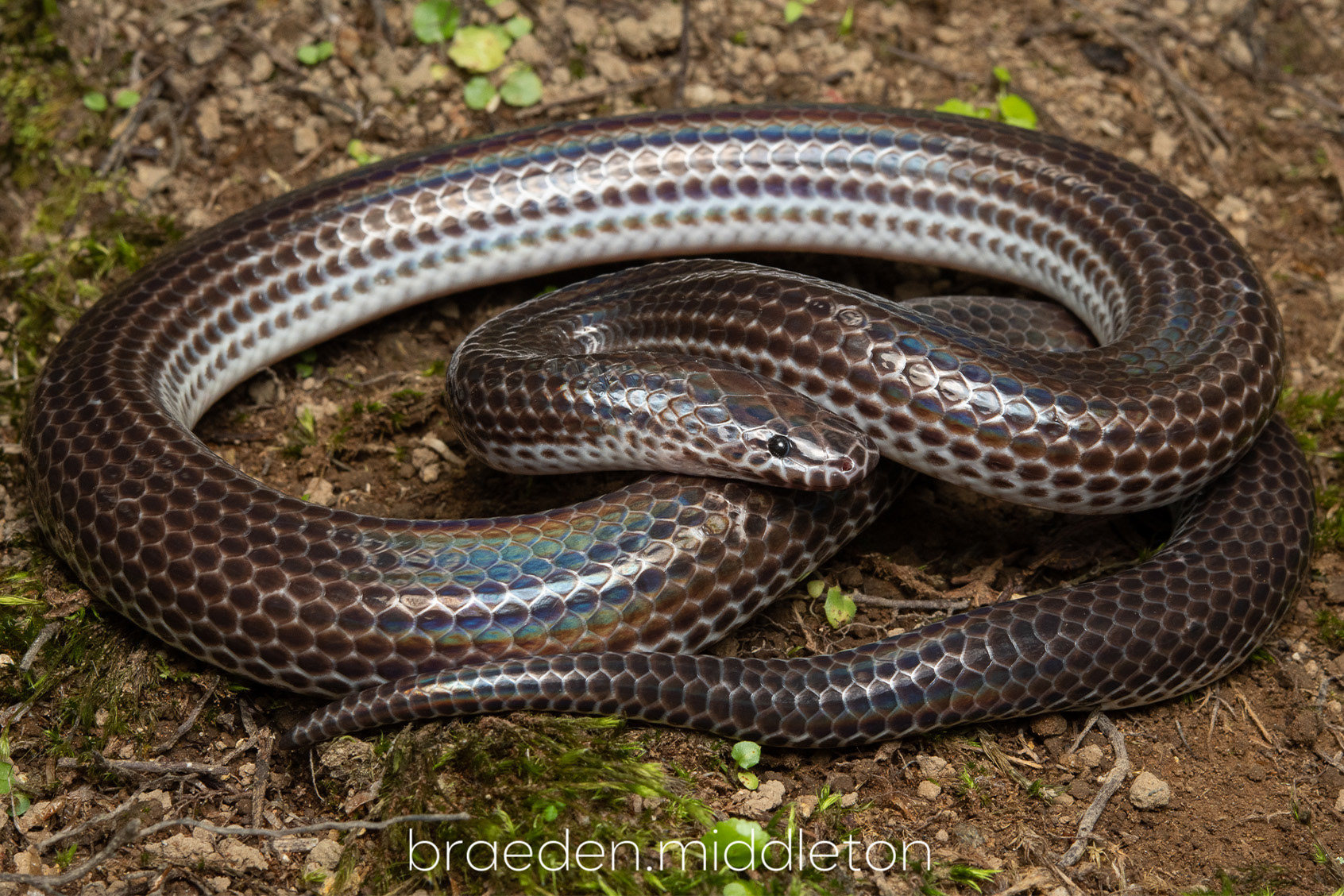
Sunbeam snake (Xenopeltis unicolor).
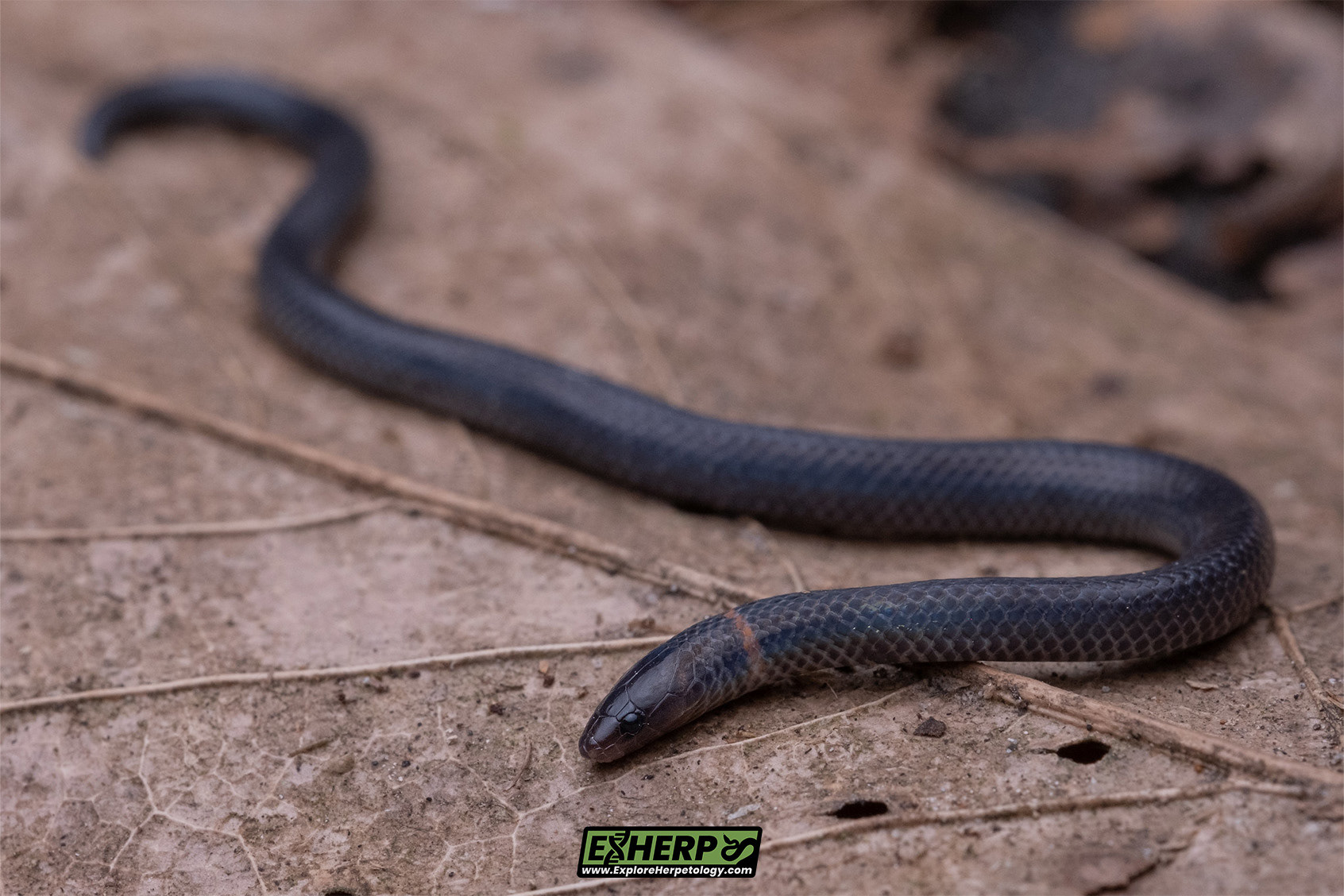
Pseudorabdion cf. longiceps.
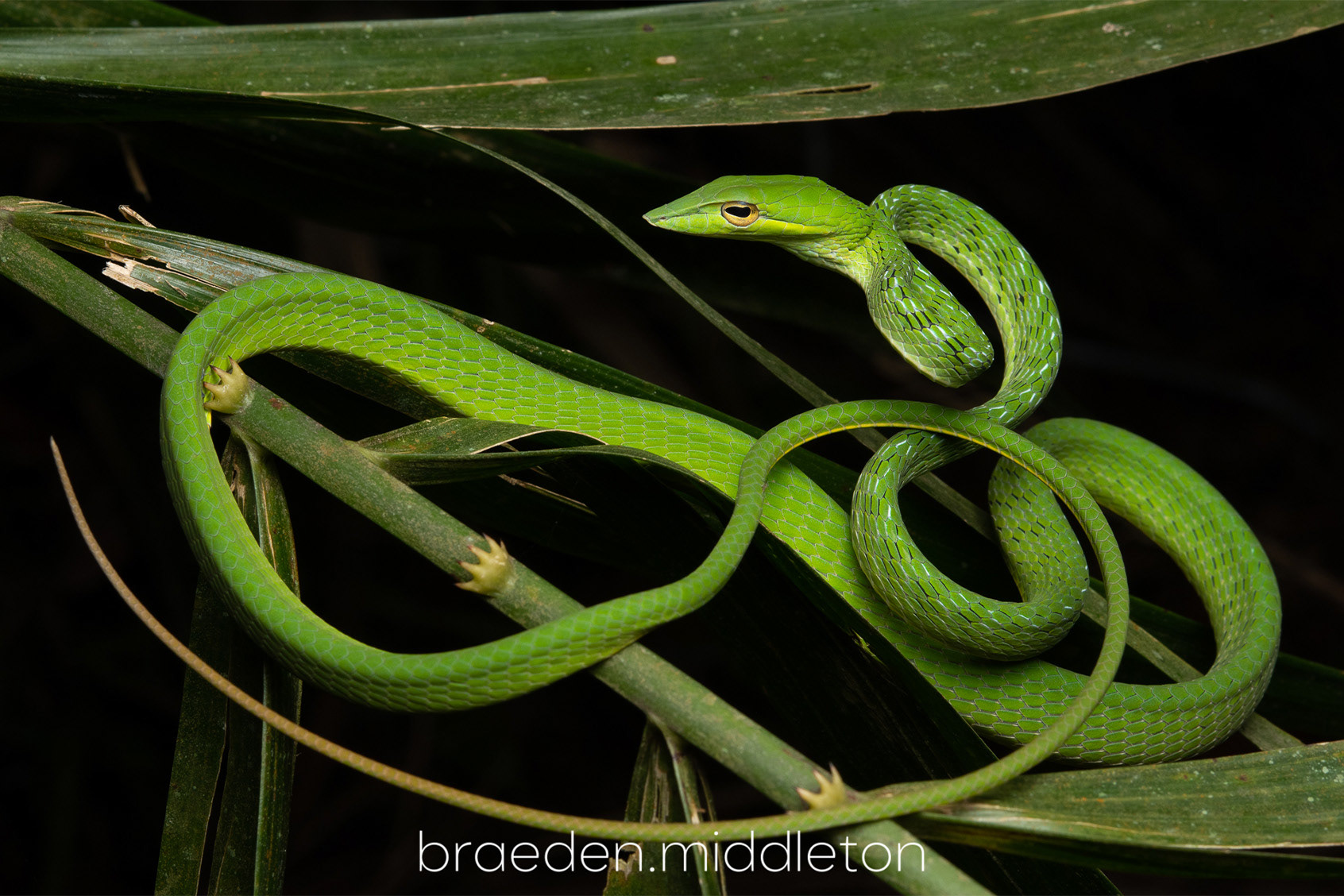
Oriental vine snake (Ahaetulla prasina).
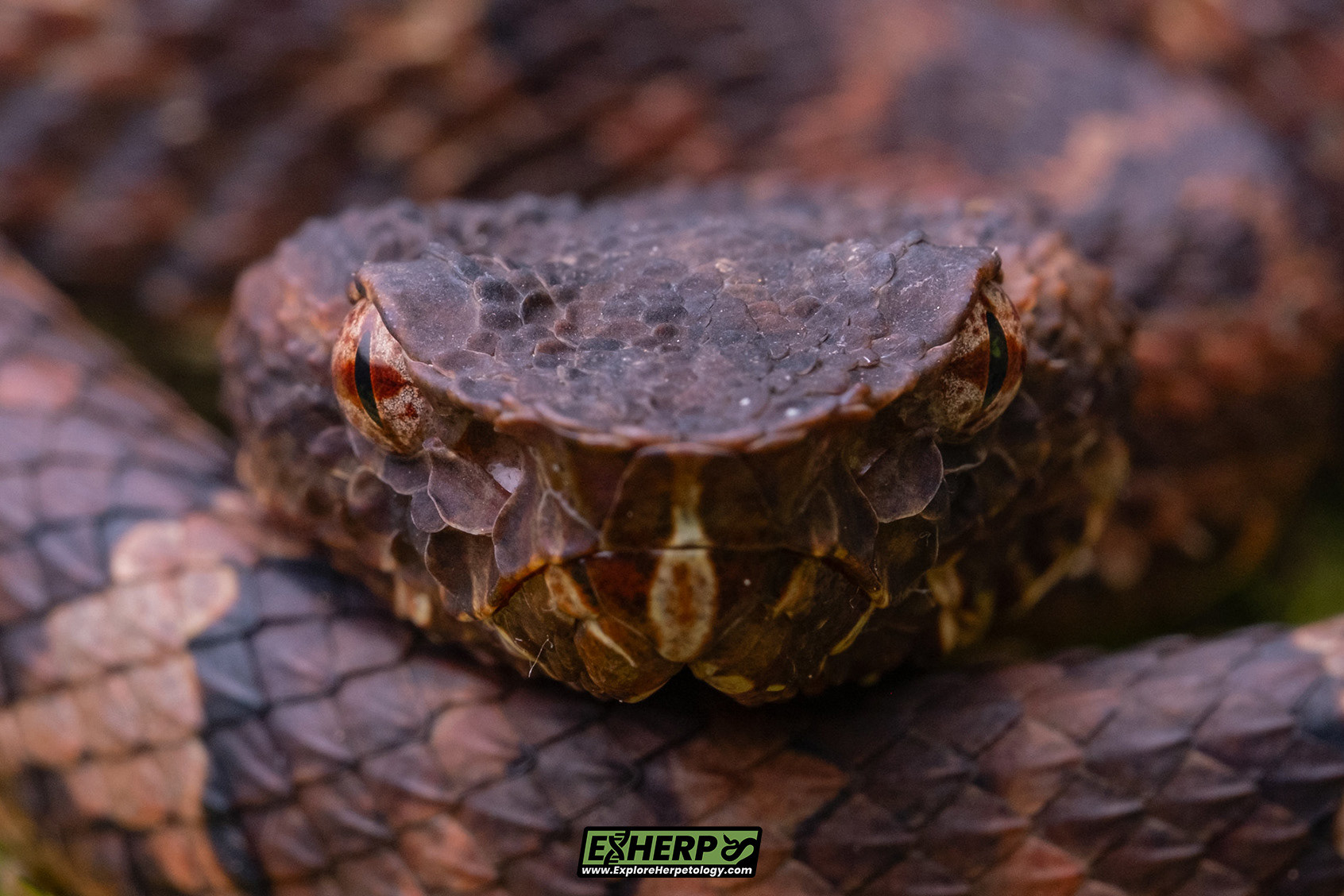
Sumatran leaf-nosed pit viper (Craspedocephalus andalasensis).
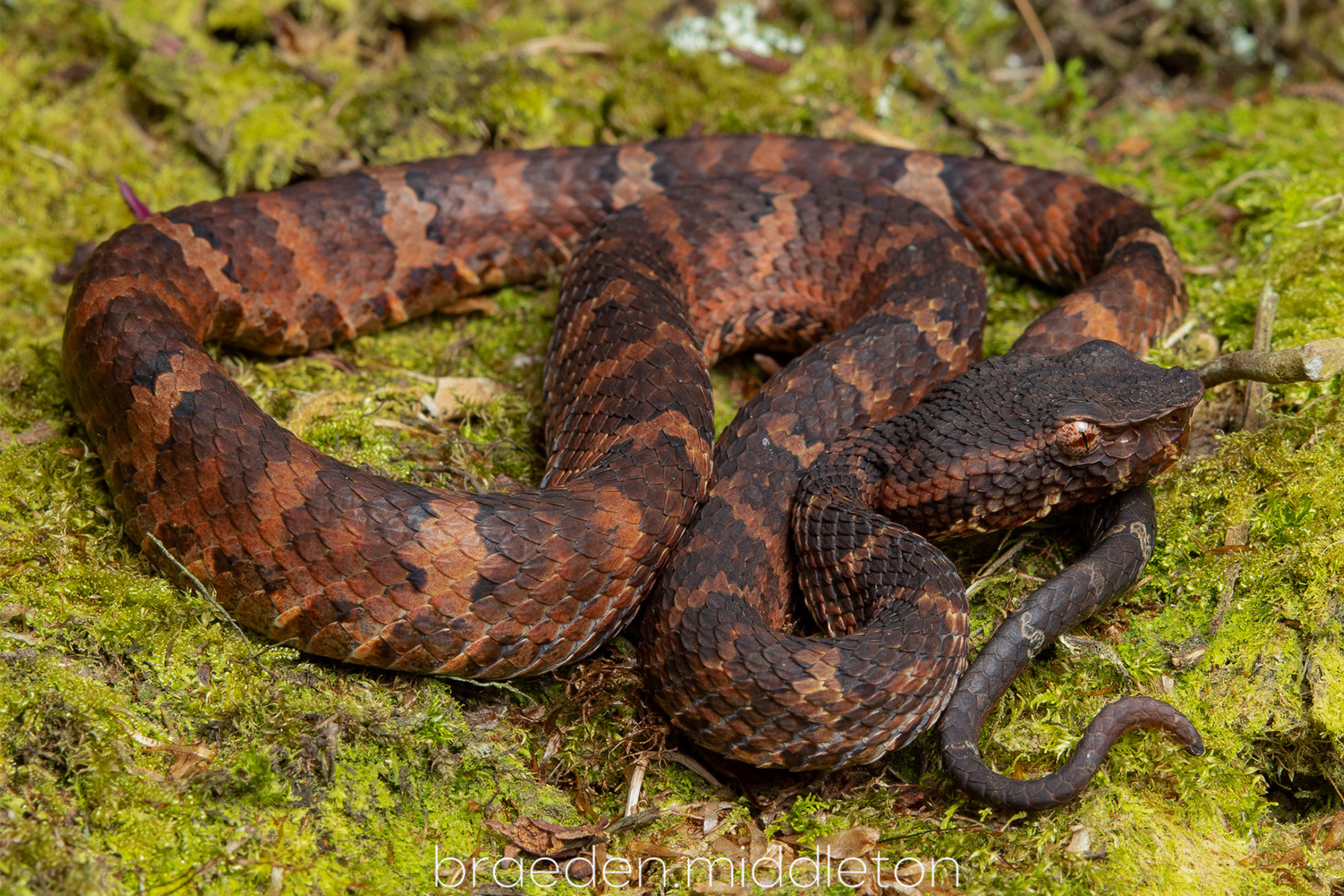
Sumatran leaf-nosed pit viper (Craspedocephalus andalasensis).
Day 4 - Berastagi
On our final night of the trip, we focused on searching for two of our biggest remaining highland targets - Petronella's kukri snake (Oligodon petronellae) and the extremely rare Modigliani's nose-horned lizard (Harpesaurus modiglianii). While searching open submontane forest at around 1,500 meters for Harpesaurus, we found what was undoubtedly our second-highest priority lizard for the area: Manthey's mountain lizard (Gonocephalus lacunosus). This species is huge and incredibly impressive. We also found a reed snake which superficially seemed to be Calamaria abstrusa, but the venter was different and much closer inspection revealed it to be the short-tailed reed snake (Calamaria virgulata).
Meanwhile, our second group focusing on a nearby highland waterfall area where our local guides had seen Oligodon petronellae several times also had great bycatch success, finding an absolutely stunning sub-adult red-headed krait (Bungarus flaviceps) and finally finding a male Lake Toba pit viper (Trimeresurus s. toba). Unfortunately, the only Harpesaurus and Oligodon petronellae we saw were preserved specimens inside the forest reserve office, but still an incredible night to end our first stint at Berastagi.
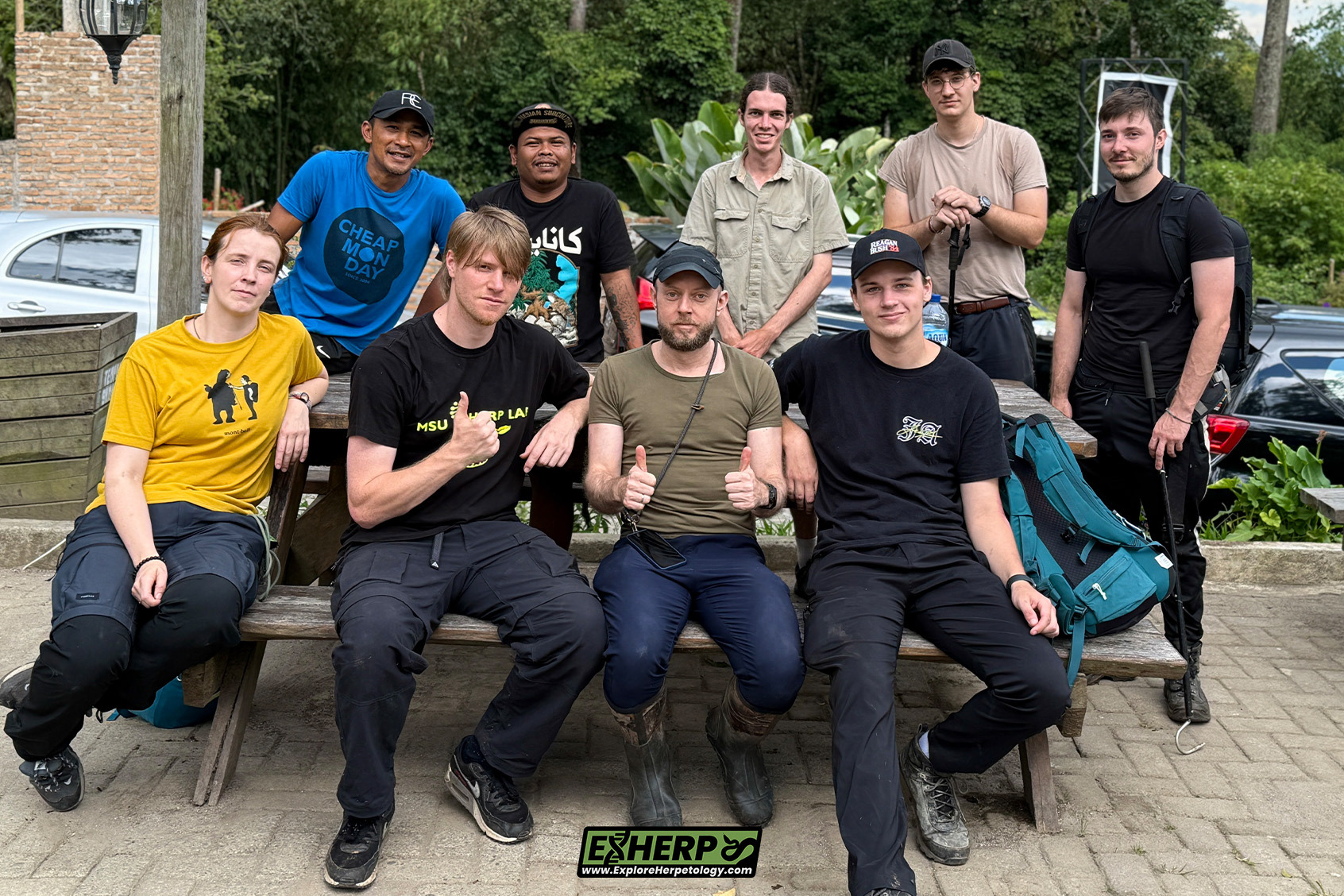
Expedition Sumatra 2025 group pic.

Short-tailed reed snake (Calamaria virgulata).

Hayeki's crested lizard (Bronchocela hayeki).
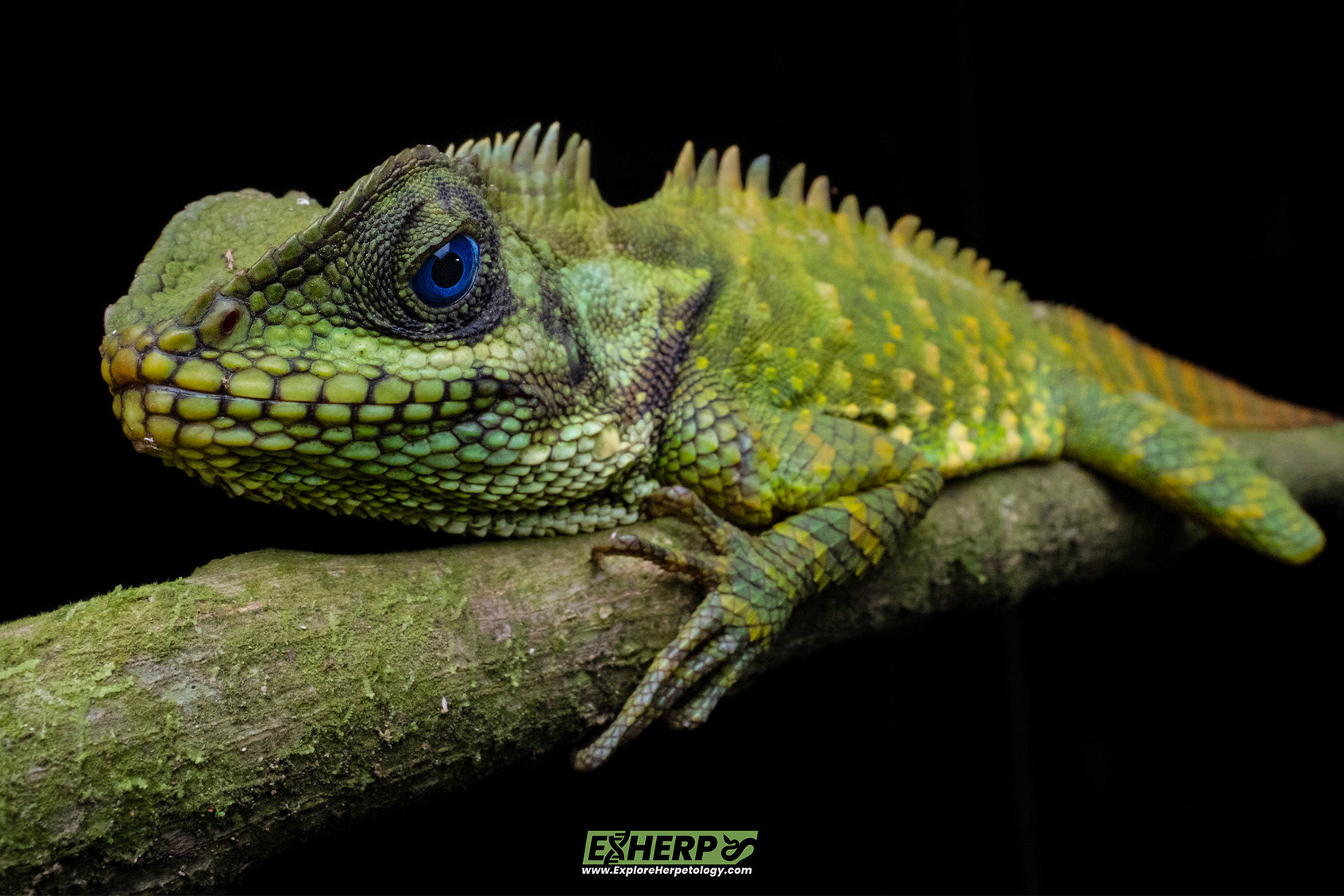
Manthey's mountain lizard (Gonocephalus lacunosus).
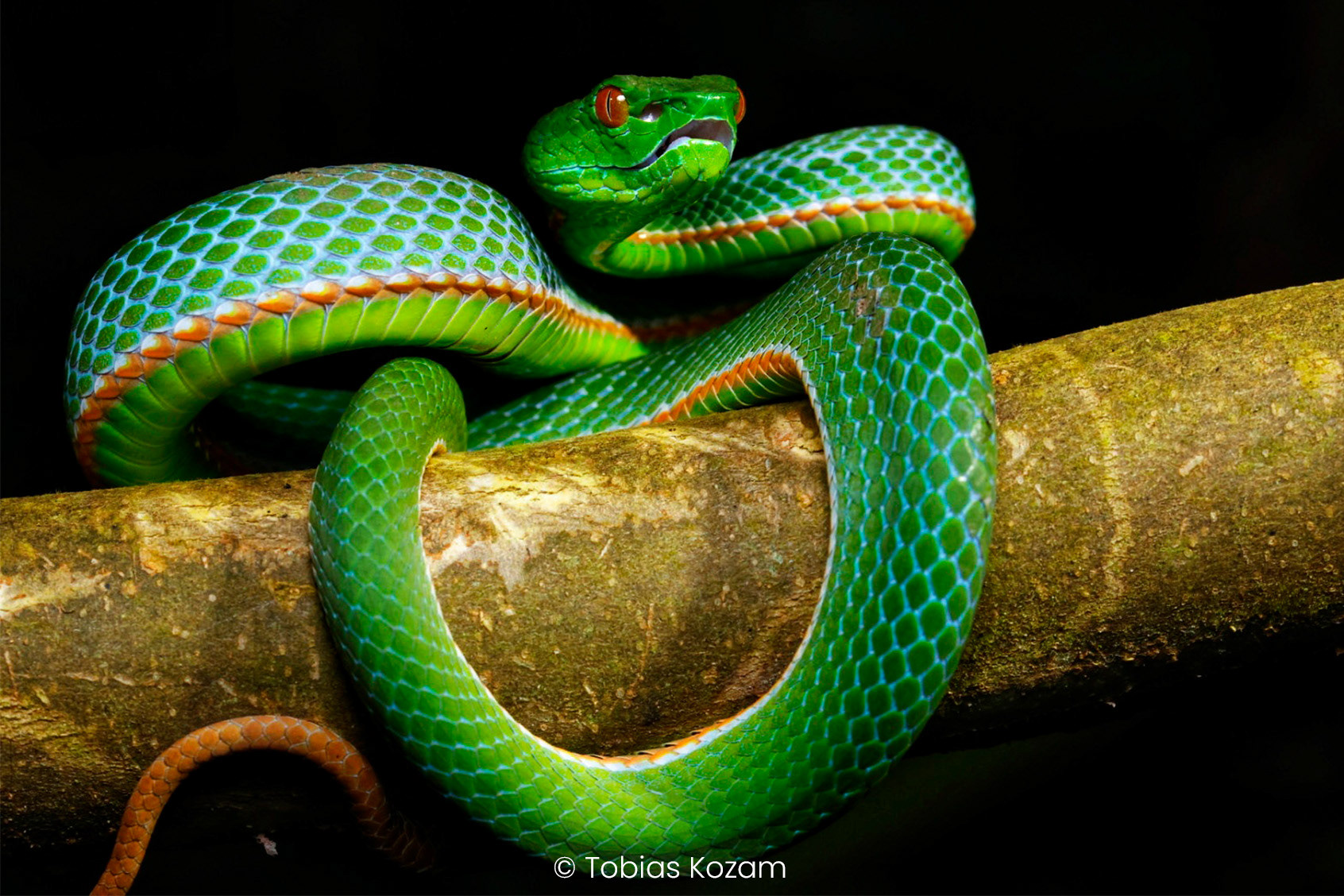
Male Lake Toba pit viper (Trimeresurus s. toba).
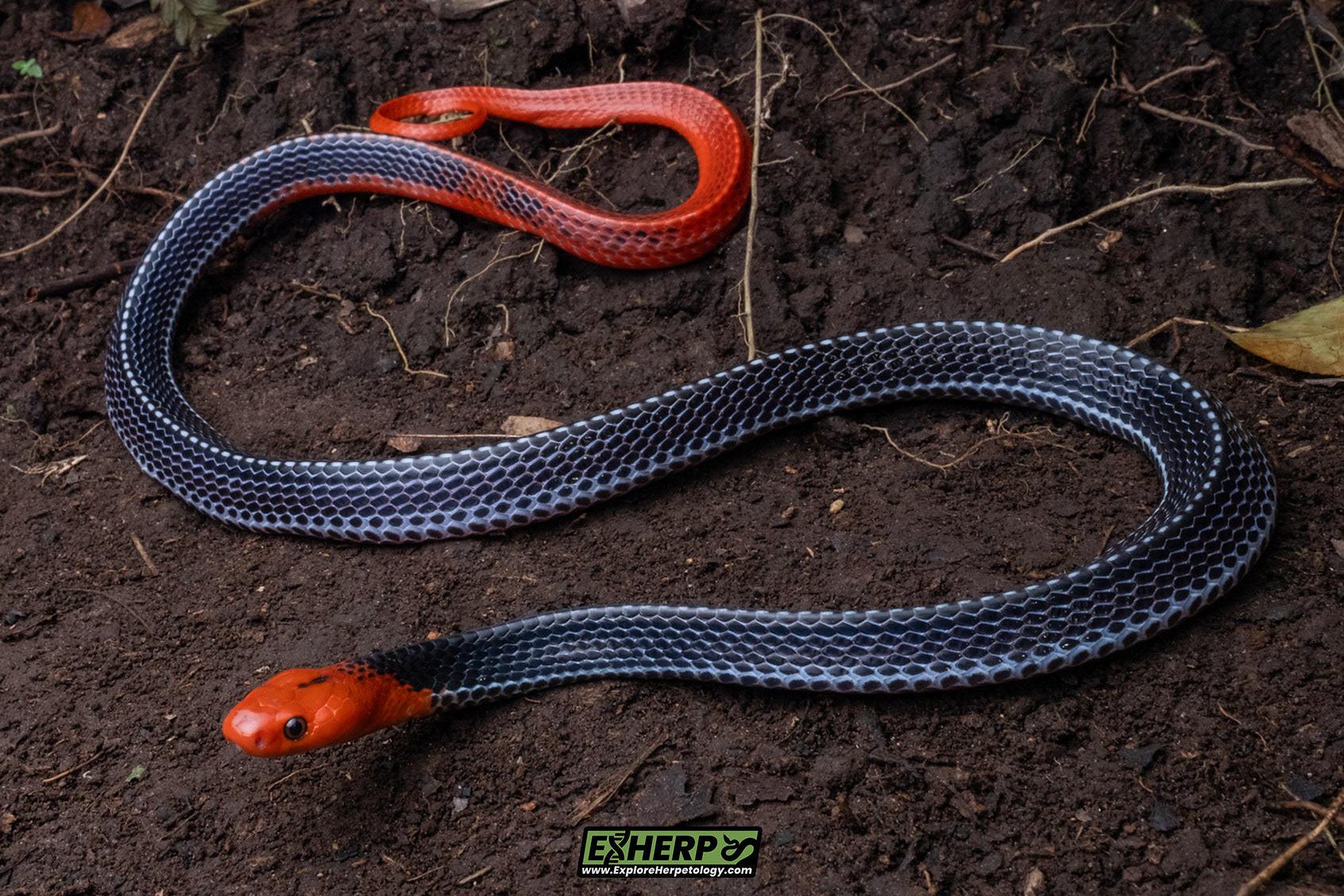
Red-headed krait (Bungarus flaviceps).
Day 5 - Berastagi/Ketambe
We continued right where we left off the following morning (finding Calamaria), when Tomasz spotted a Variable reed snake (Calamaria lumbricoidea) sticking its head out from a pipe on the side of a building while we were packing the cars.
After almost 6 hours of driving, we had made our way to the valleys of Mount Leuser National Park in Aceh province, and got checked in to our forest guesthouse and prepared for herping. While people were still getting ready in the rooms, Rupert found a large female Wagler's pit viper (Tropidolaemus wagleri) resting on some low vegetation right behind the bungalow, quickly followed by a large sunbeam snake (Xenopeltis unicolor). While still exploring the garden, Tobias spotted a small snake disappearing into a crevice in a wall. We just got the tip of its tail, gently pulling it out to reveal one of our ultimate dream species for the area.
The small snake disappearing into the crevice was the mythical three-striped kukri snake (Oligodon trilineatus), only photographed once before (in 2003). We are rare Oligodon enthusiasts and getting this within the first hour on the first night felt surreal. This snake is an accurate mimic of the Malaysian highland form of the Malayan banded coral snake (Calliophis intestinalis), although strangely this particular morph does not occur in Sumatra (as far as we know).
We continued herping along a forest stream and found many more snakes, including a heavily black-banded individual of Hagen's pit viper (Trimeresurus hageni), white-bellied ratsnake (Ptyas fusca), striped bronzeback (Dendrelaphis caudolineatus), Malayan vine snake (Ahaetulla mycterizans) and speckle-headed vine snake (Ahaetulla fasciolata). Returning back to the resort, we also found a Malaccan slug snake (Asthenodipsas cf. malaccanus) and an adult female Hagen's pit viper (Trimeresurus hageni). Our first and only 10 snake species day of the trip.
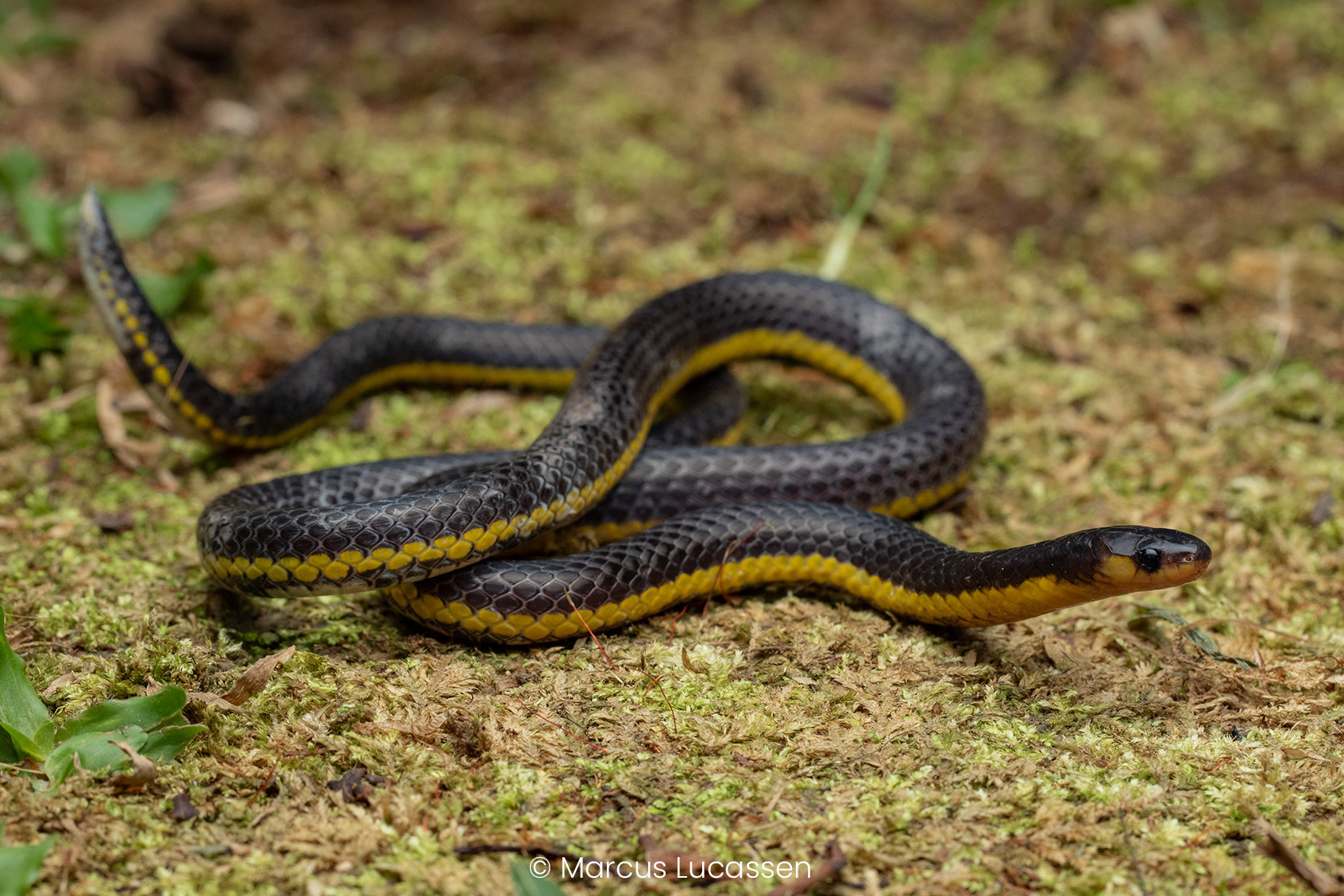
Variable reed snake (Calamaria lumbricoidea).
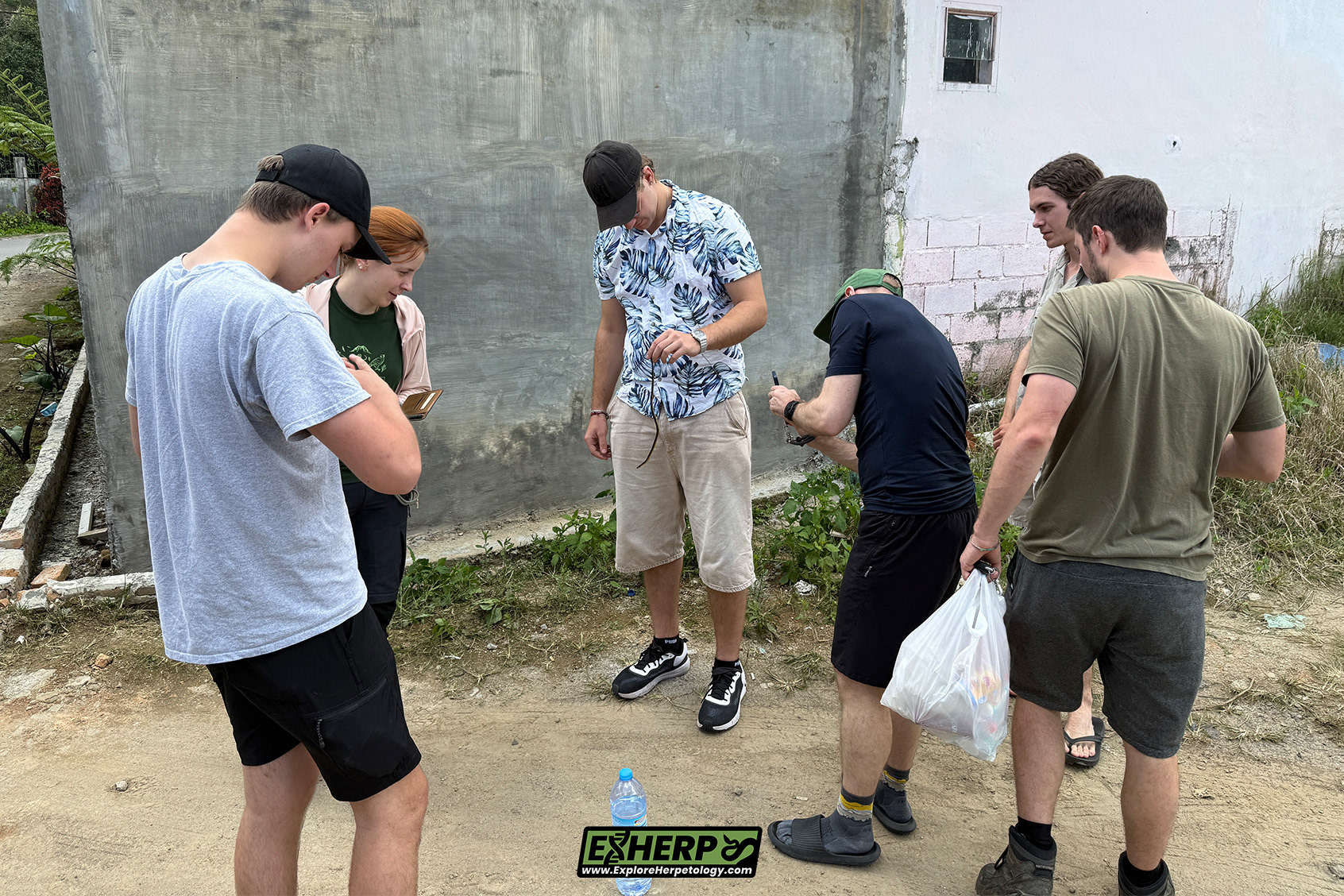
Calamaria goofiness.
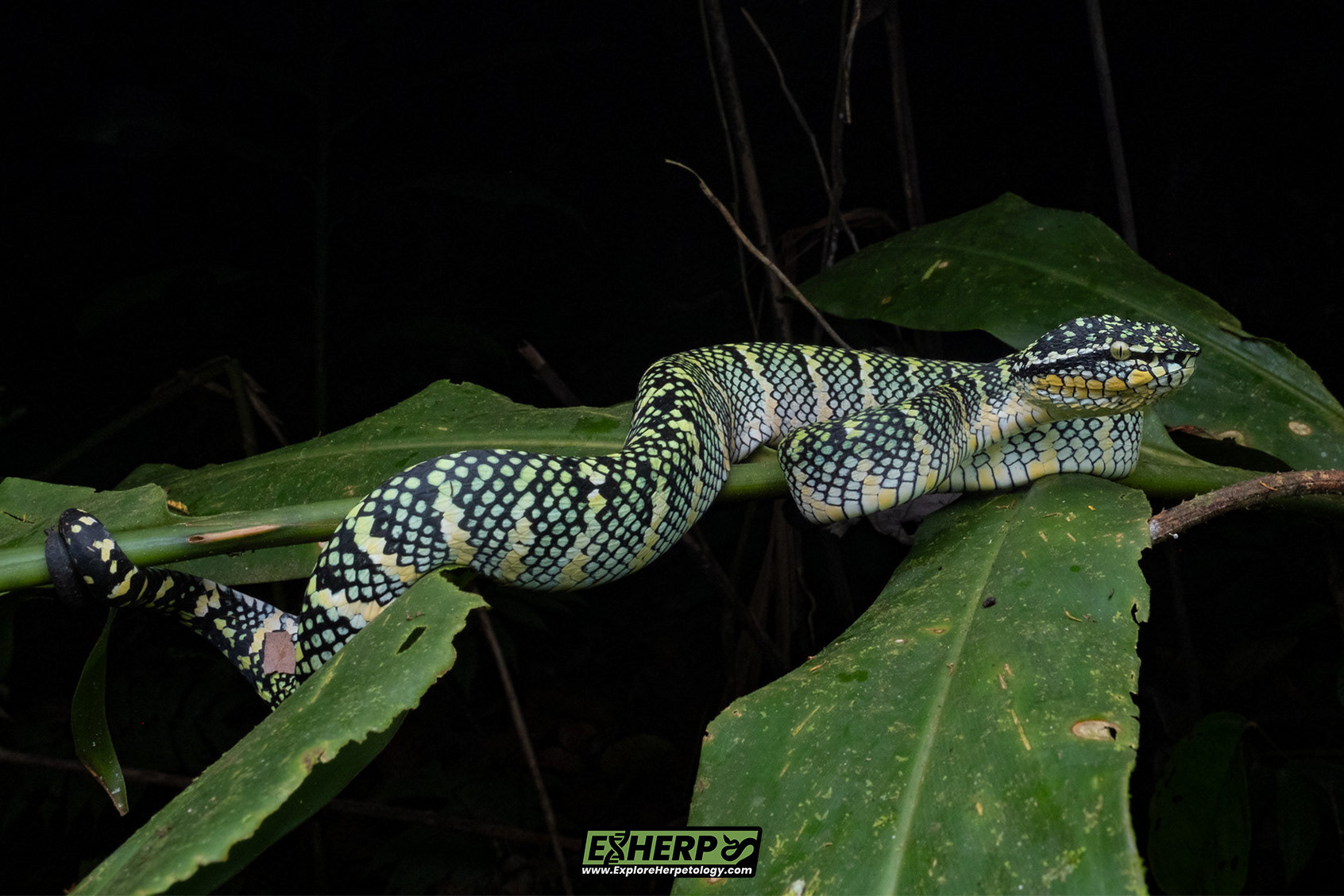
Wagler's pit viper (Tropidolaemus wagleri).
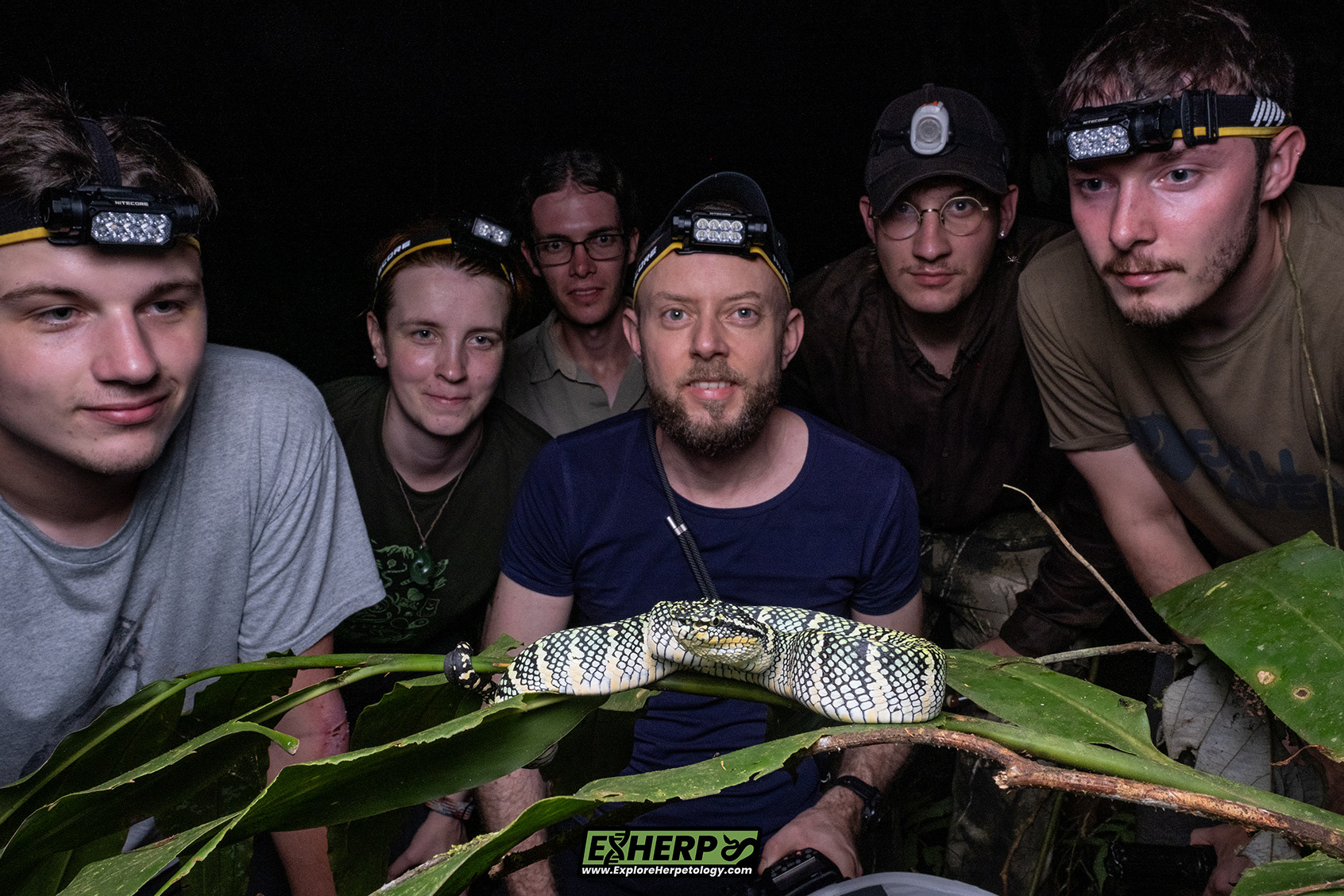
Wagler's pit viper (Tropidolaemus wagleri).
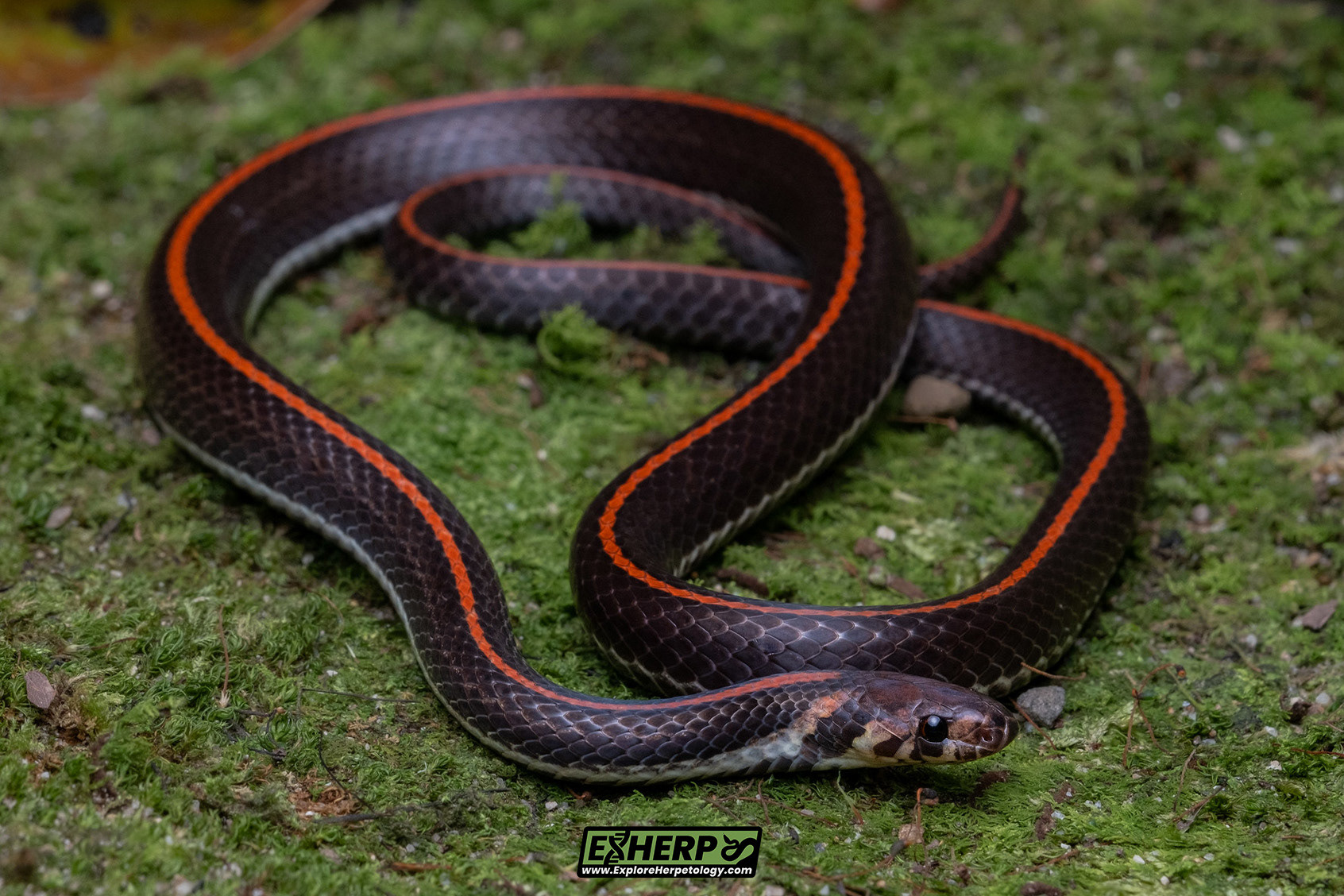
Three-striped kukri snake (Oligodon trilineatus).
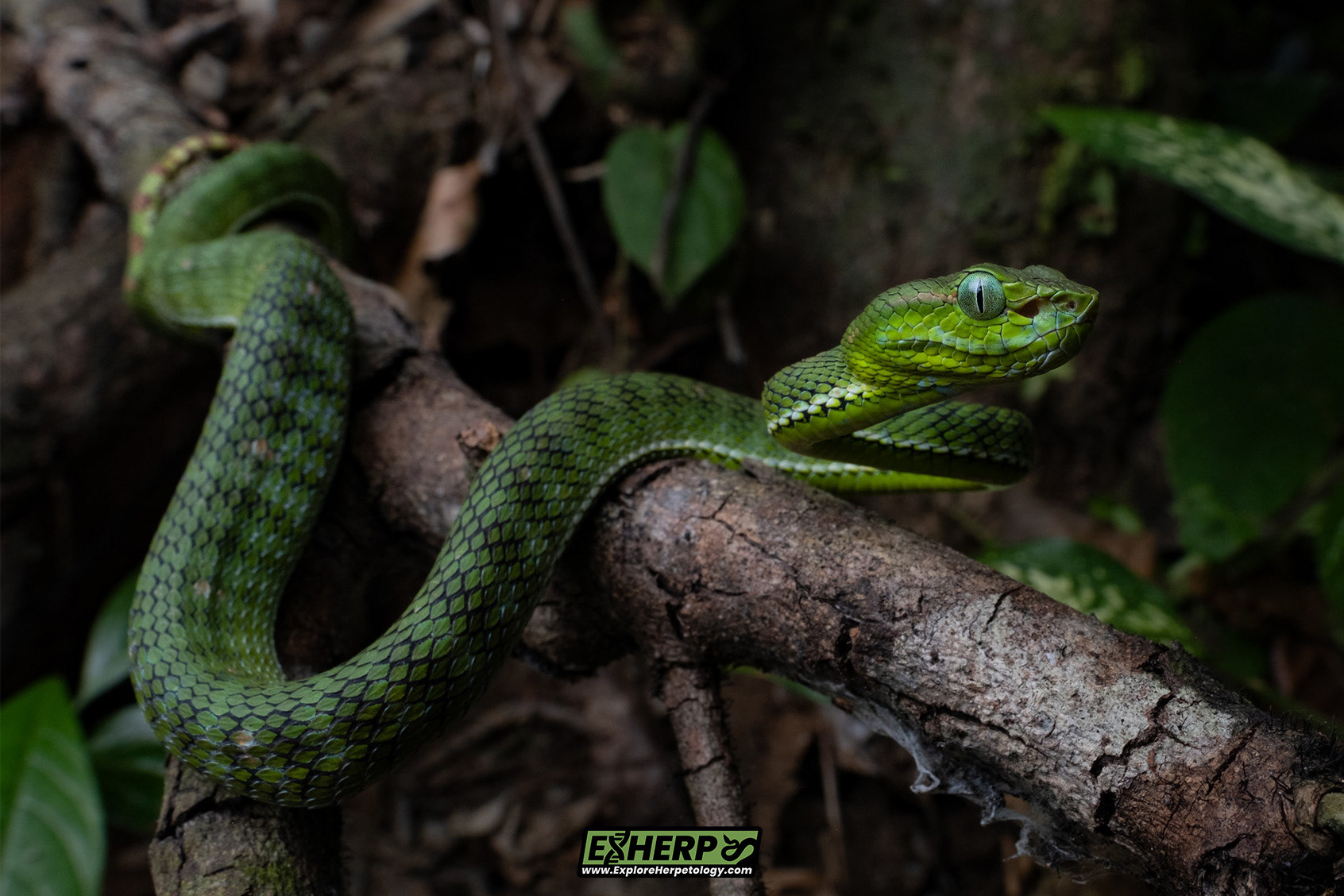
Hagen's pit viper (Trimeresurus hageni).
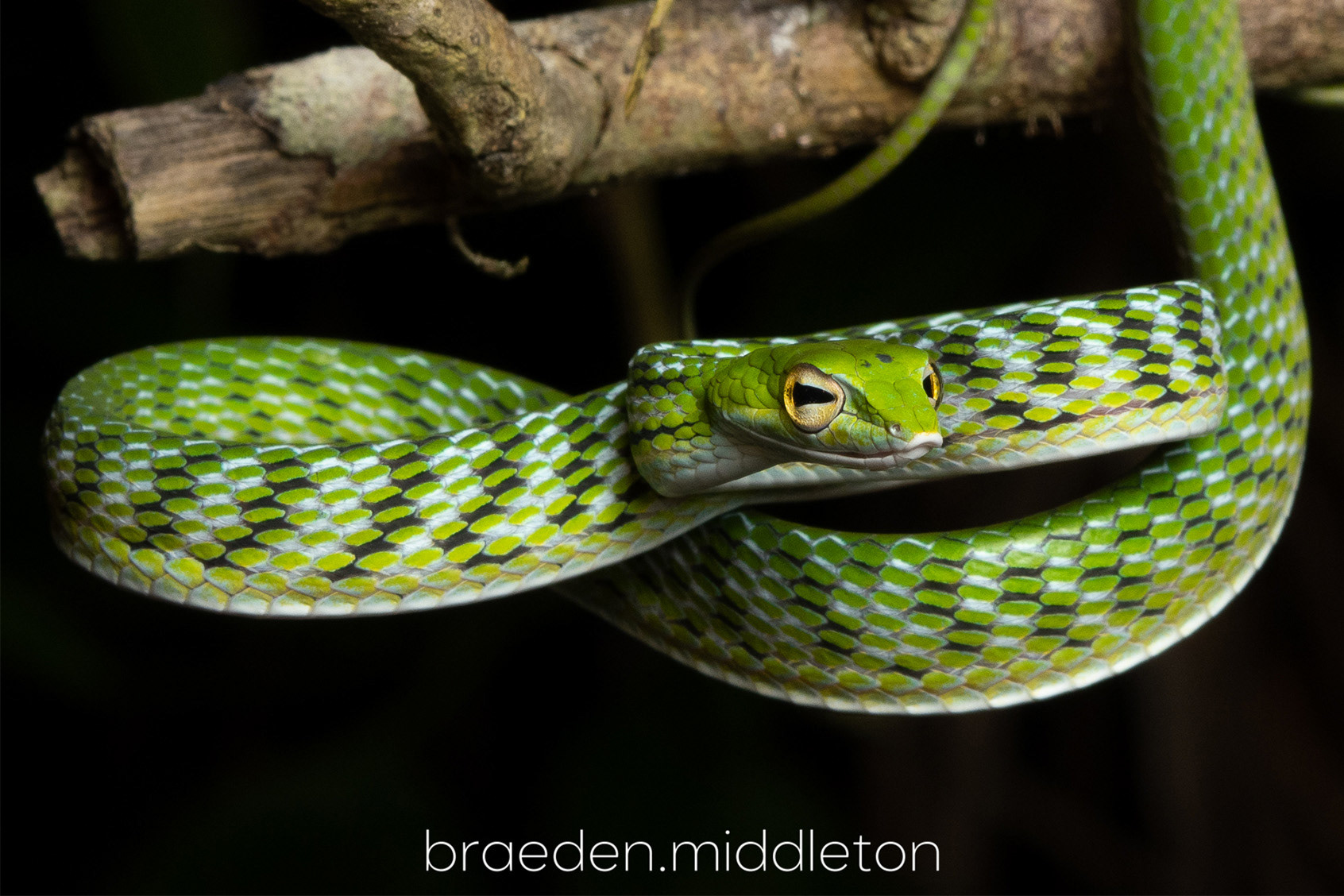
Malayan vine snake (Ahaetulla mycterizans).
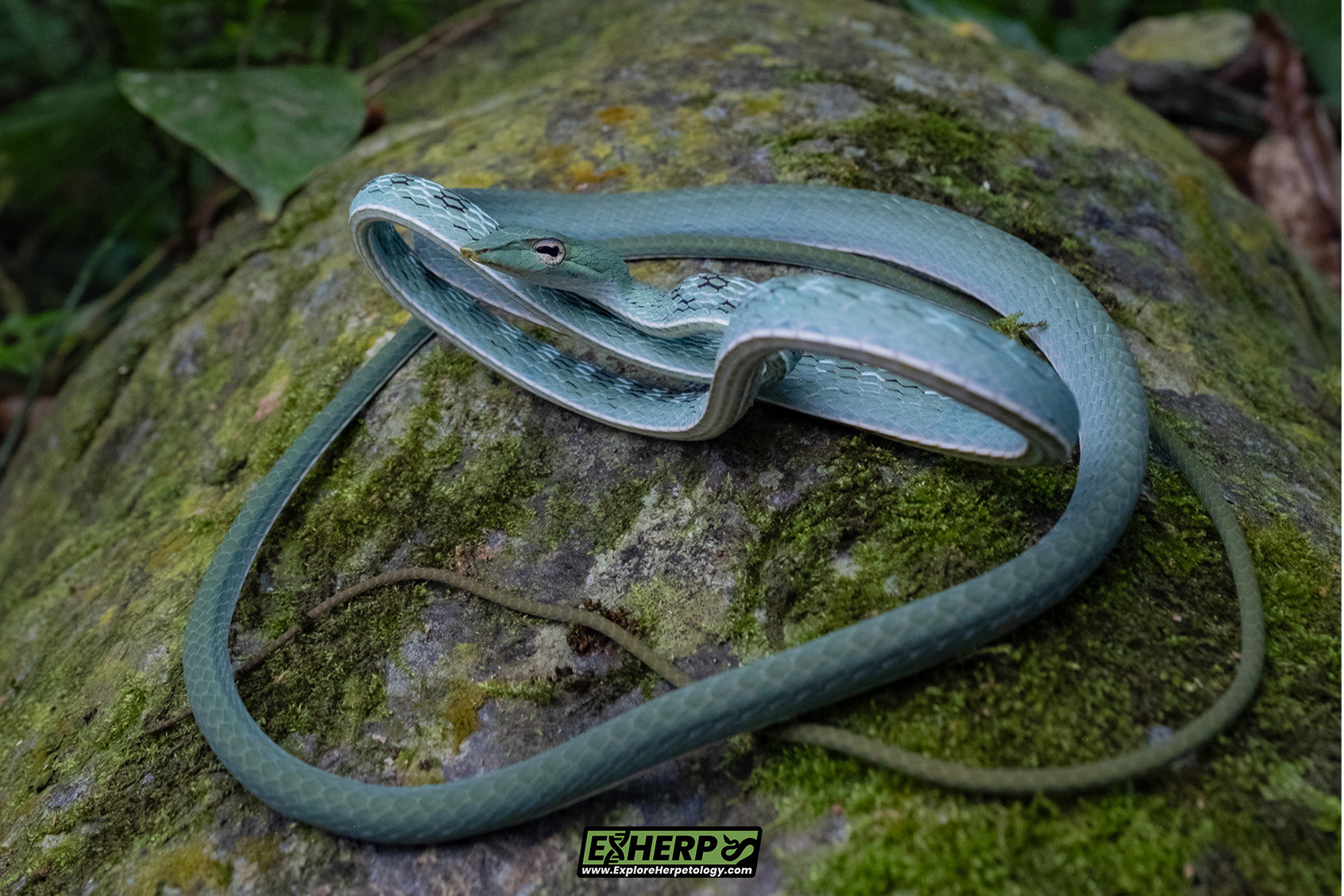
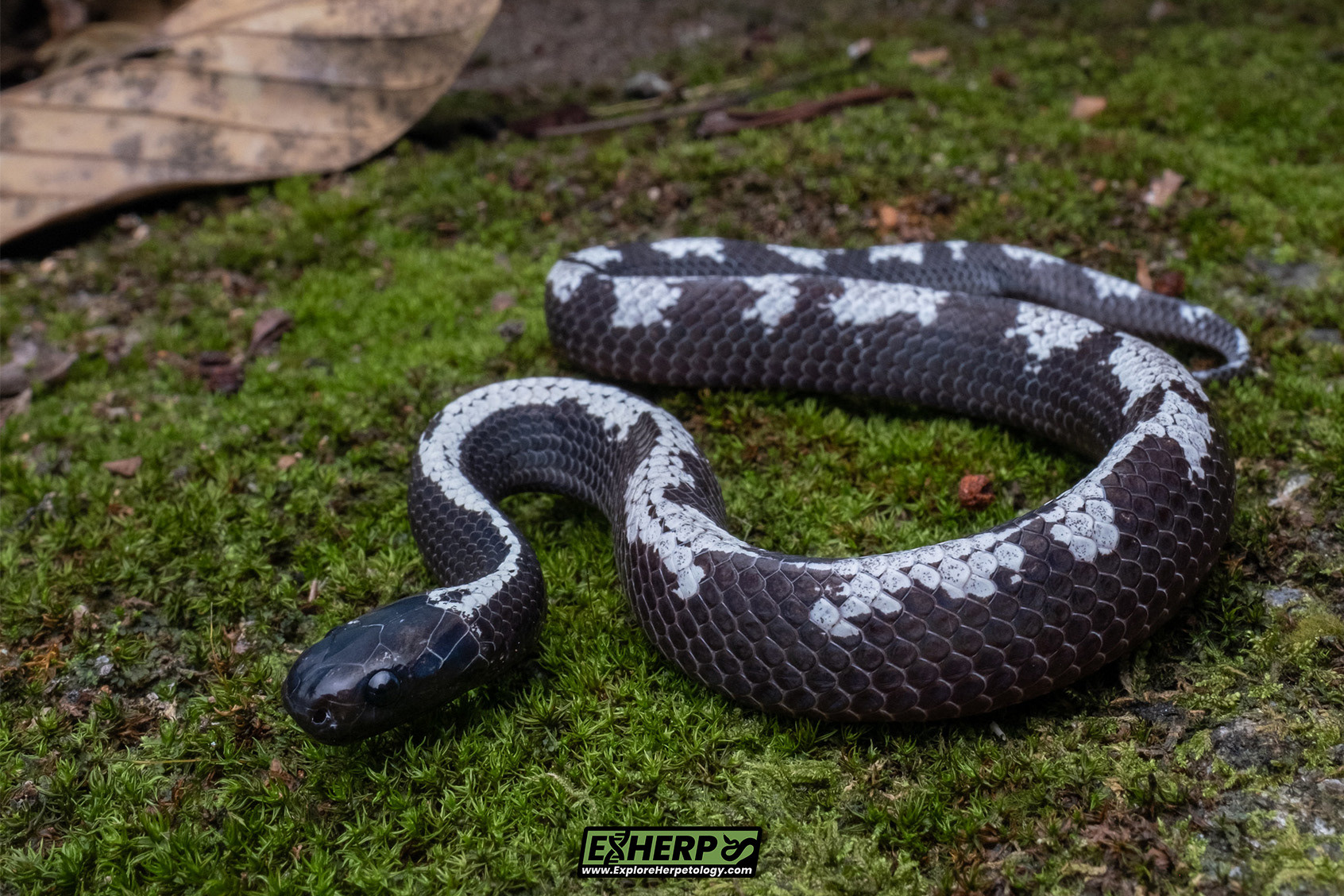
Malaccan slug snake (Asthenodipsas cf. malaccanus).
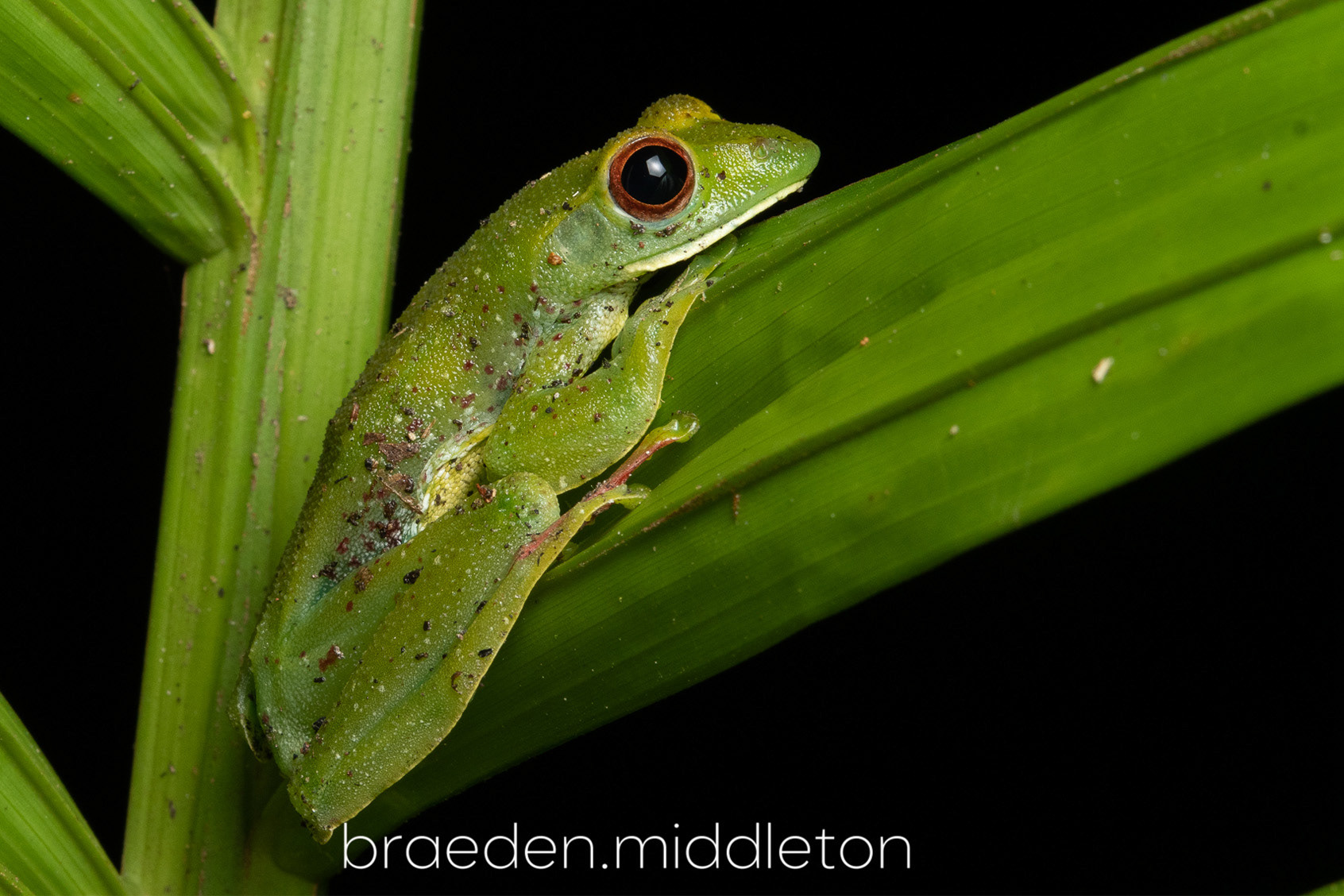
Malayan flying frog (Zhangixalus prominanus).
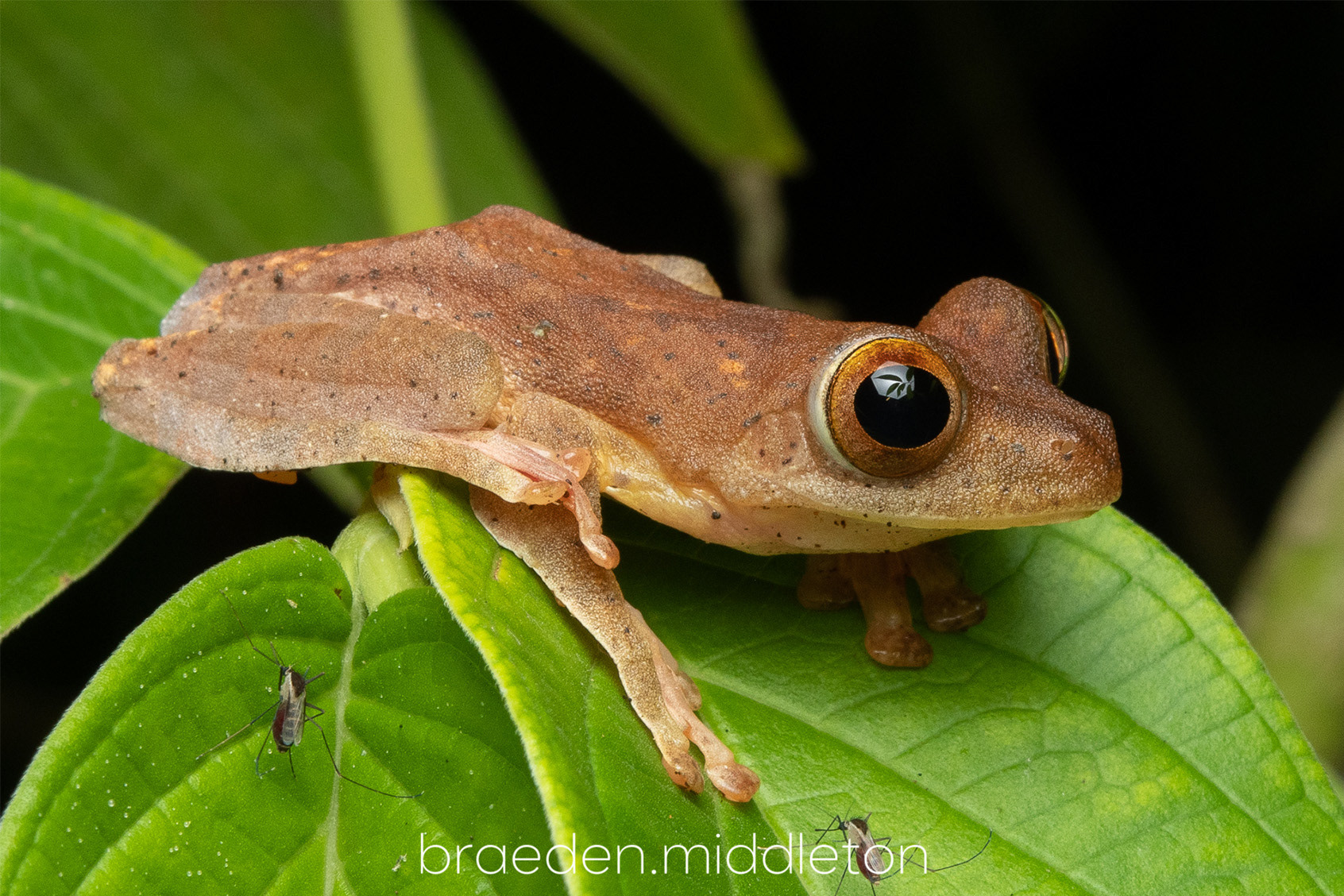
Harlequin flying frog (Rhacophorus pardalis).
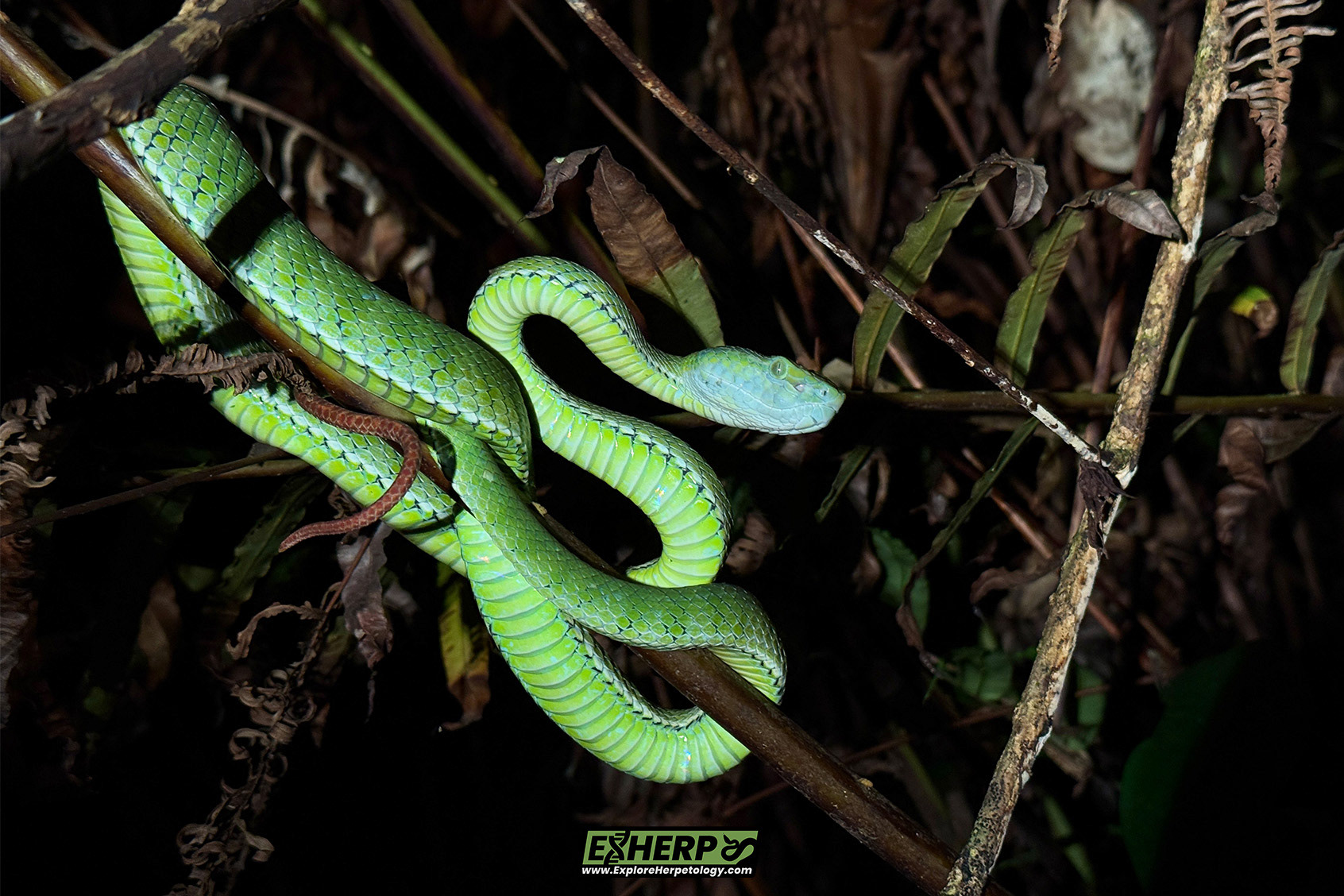
Hagen's pit viper (Trimeresurus hageni).
Day 6 - Ketambe
We went out herping the following day and even though we did not see any herpetofauna, we were very happy with a real wild orang-utan sighting, a female with two offspring - one a tiny baby. The nighttime search was much less productive than the previous day. We tried some new trails which were incredibly dry due to this being the very end of the dry season after around 2 months of very little rain. Exploring closer to a river, we found a huge Hagen's pit viper (Trimeresurus hageni) with a yellowish colour, along with a Malayan banded wolf snake (Lycodon subcinctus) and a Brahminy blind snake (Indotyphlops braminus). Back at the resort, we saw several more Malayan vine snakes (Ahaetulla mycterizans) and another huge female Hagen's pit viper (Trimeresurus hageni) - this time almost entirely green in colour. We were also very happy with a Chameleon angle-headed lizard (Gonocephalus cf. chameleotinus).
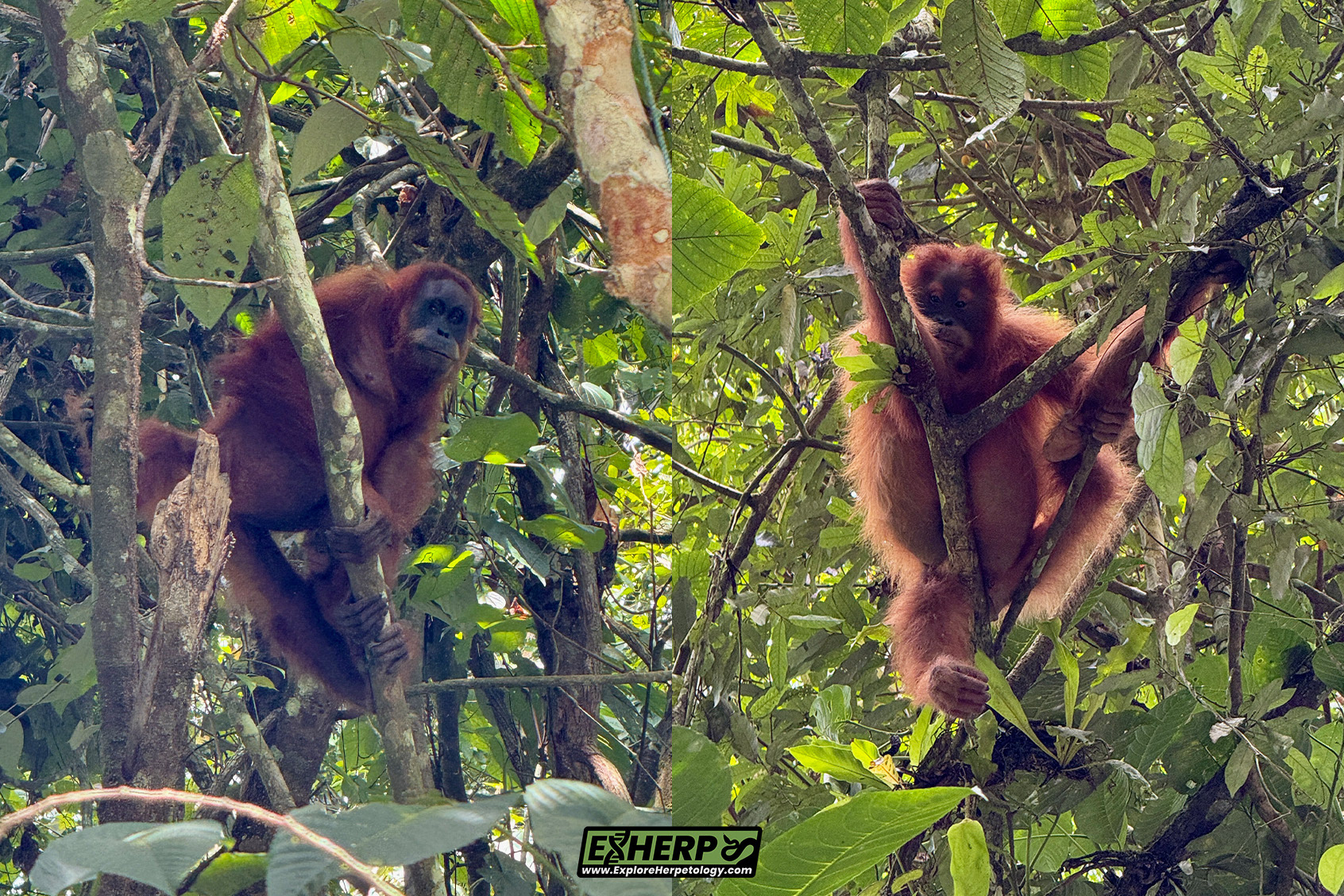
Wild orangutan.
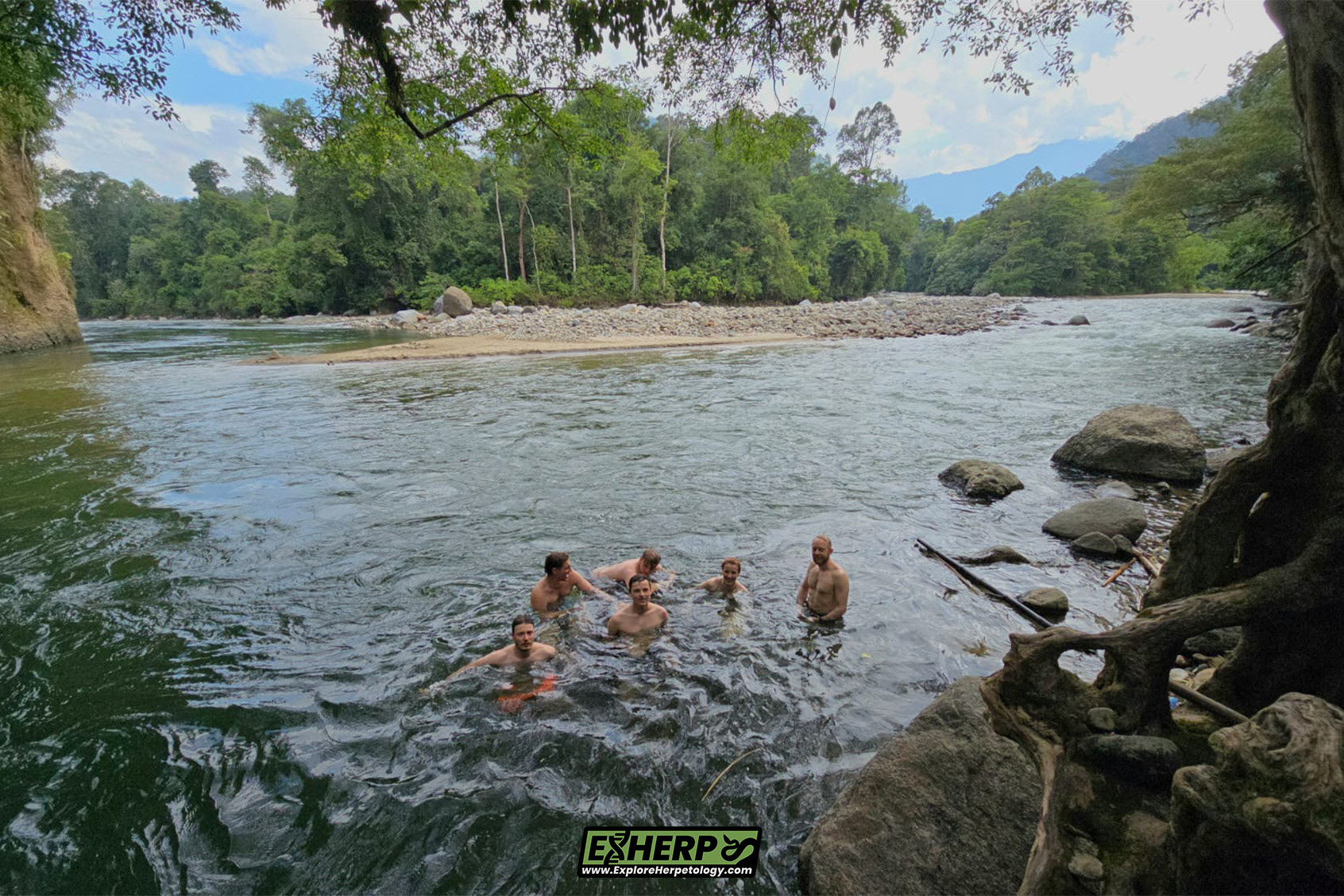
Swimming in the river beside our guesthouse.
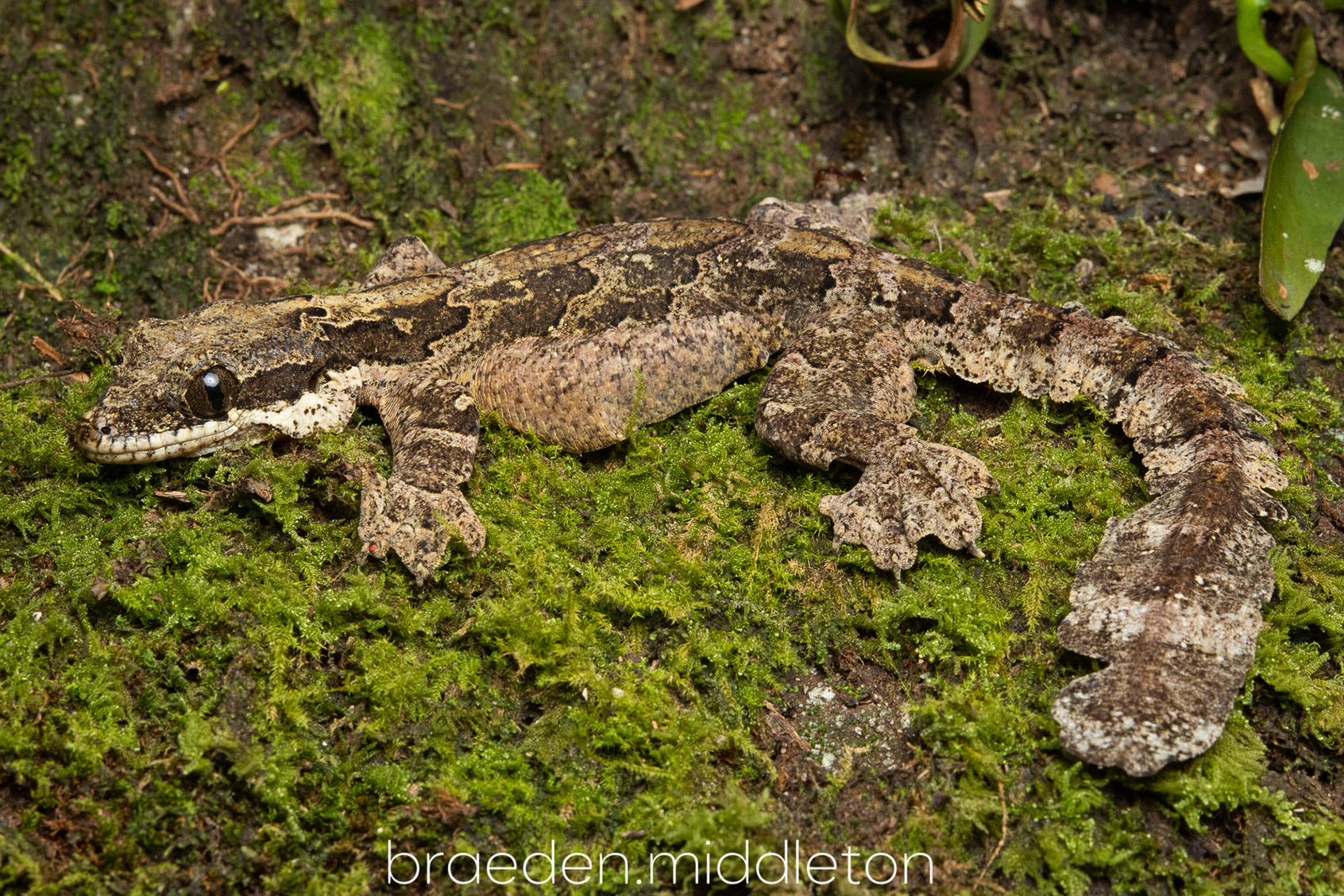
Kuhl's gliding gecko (Gekko kuhli).
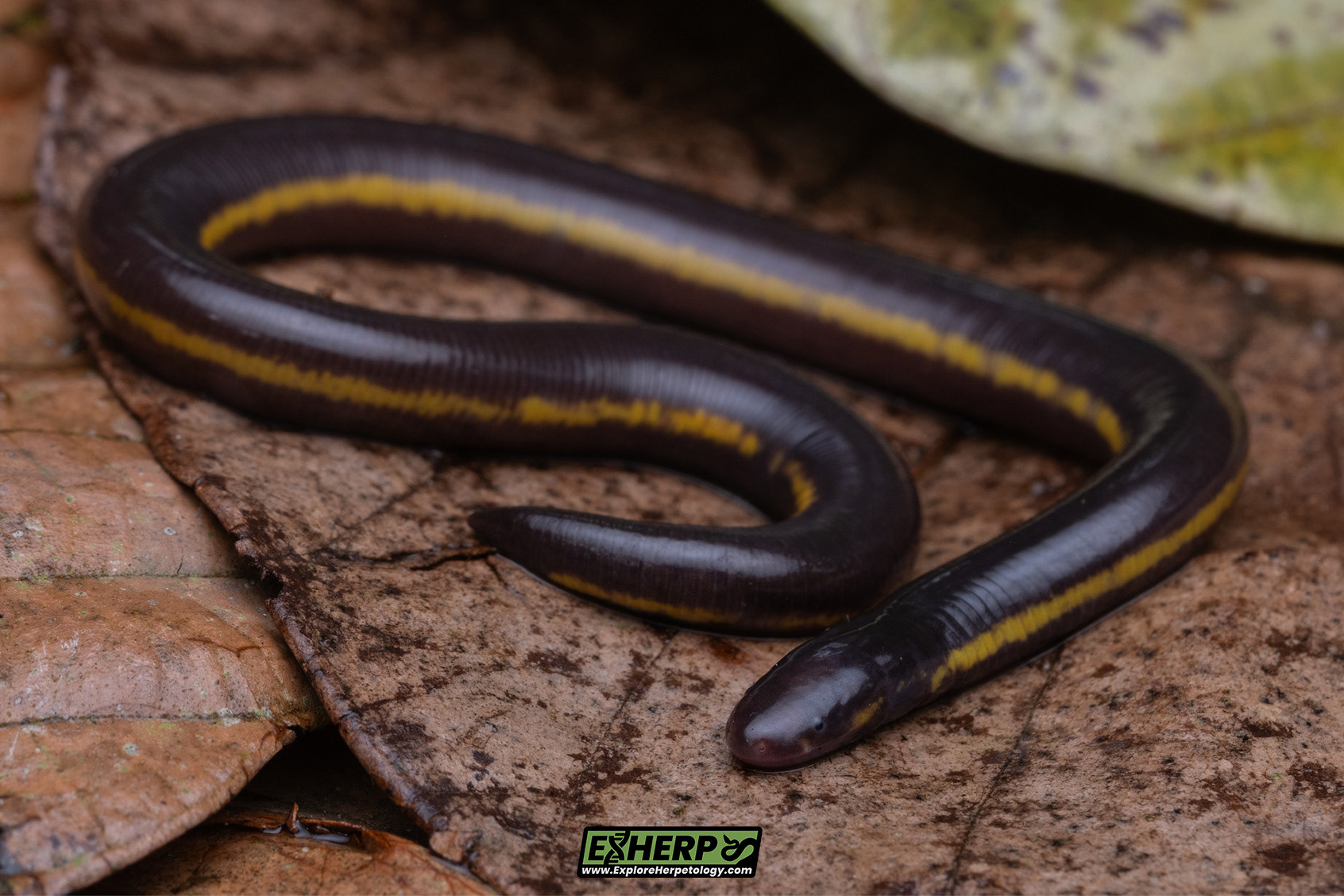
Ichthyophis paucisulcus.
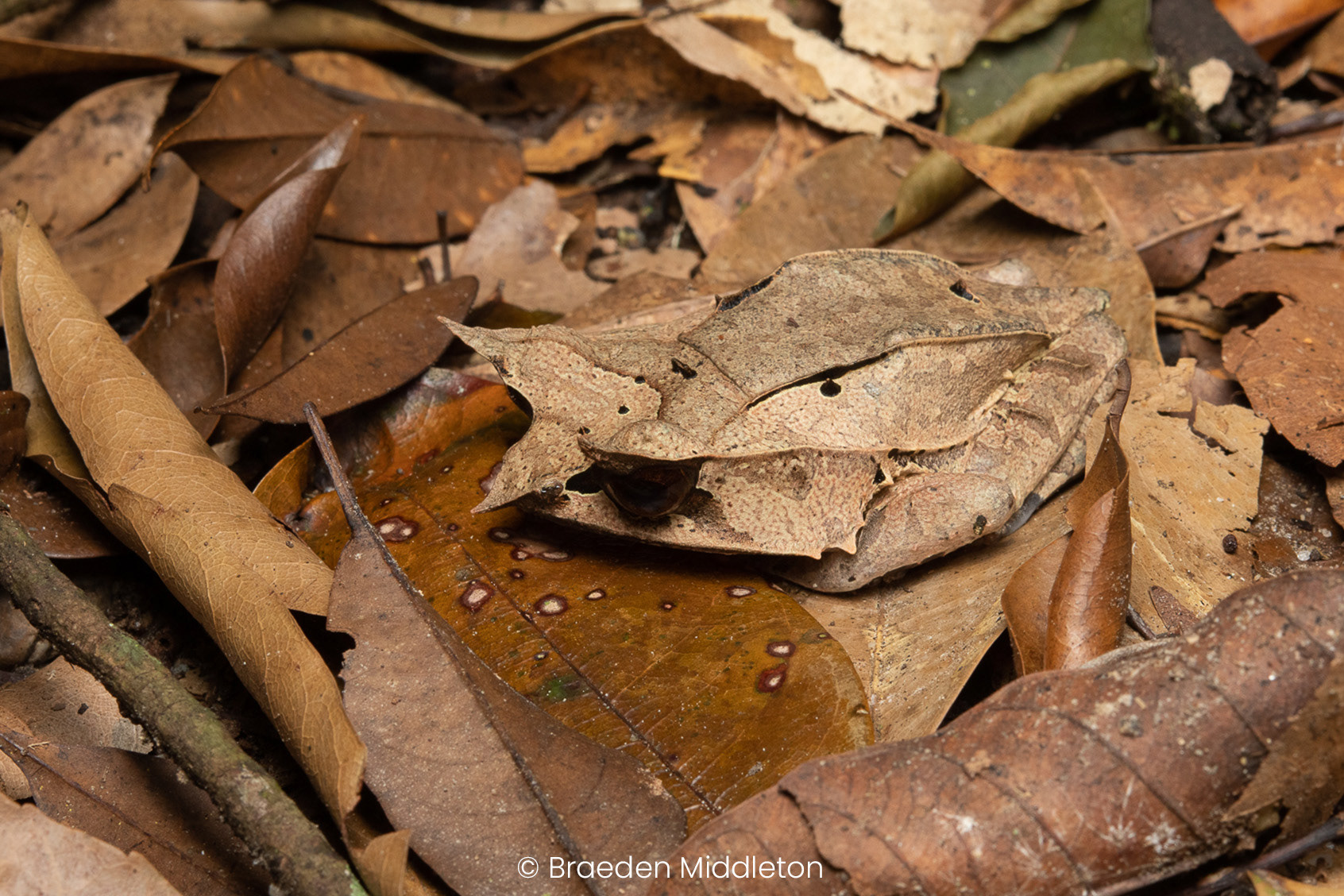
Long-nosed horned frog (Pelobatrachus nasuta).
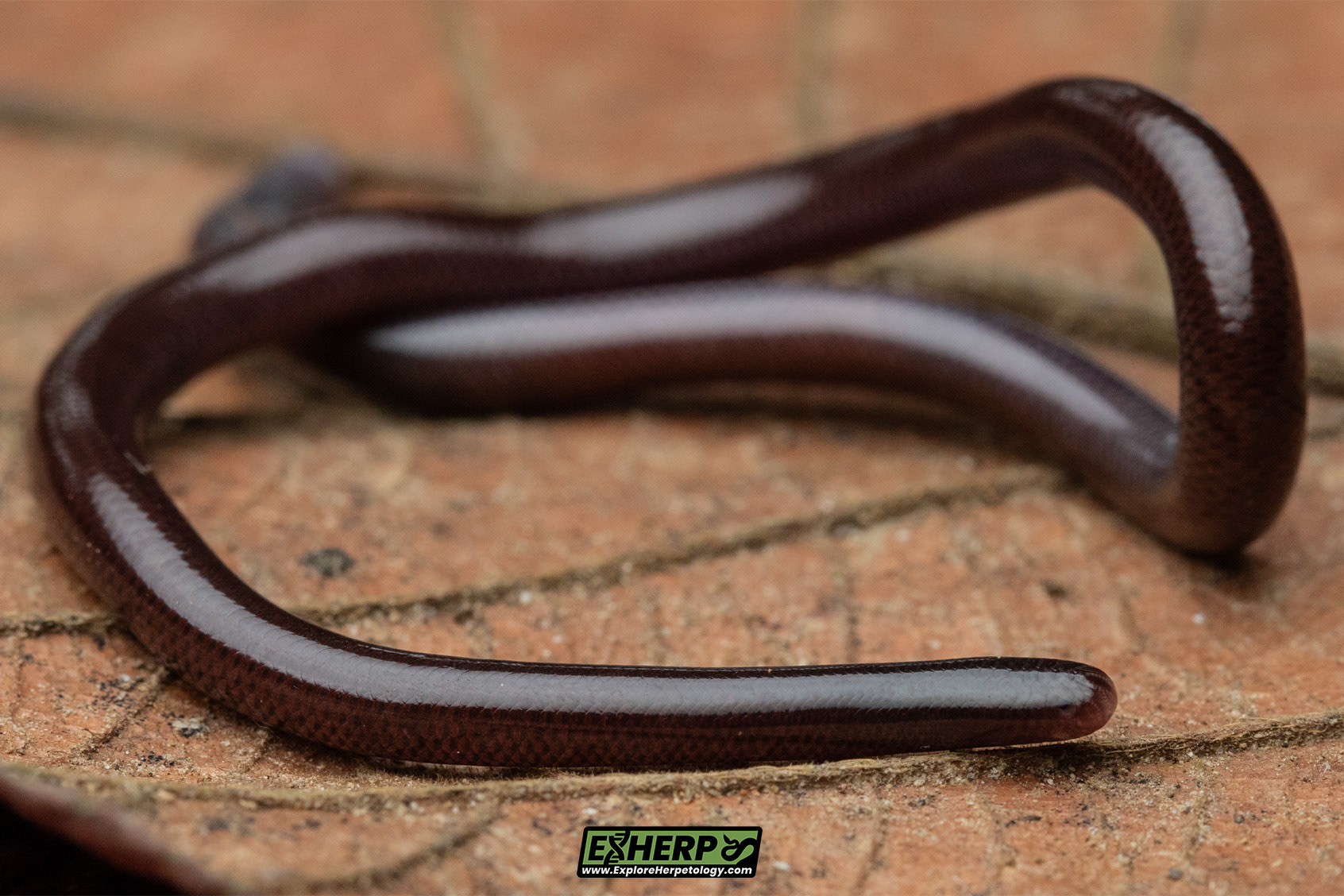
Brahminy blind snake (Indotyphlops braminus).
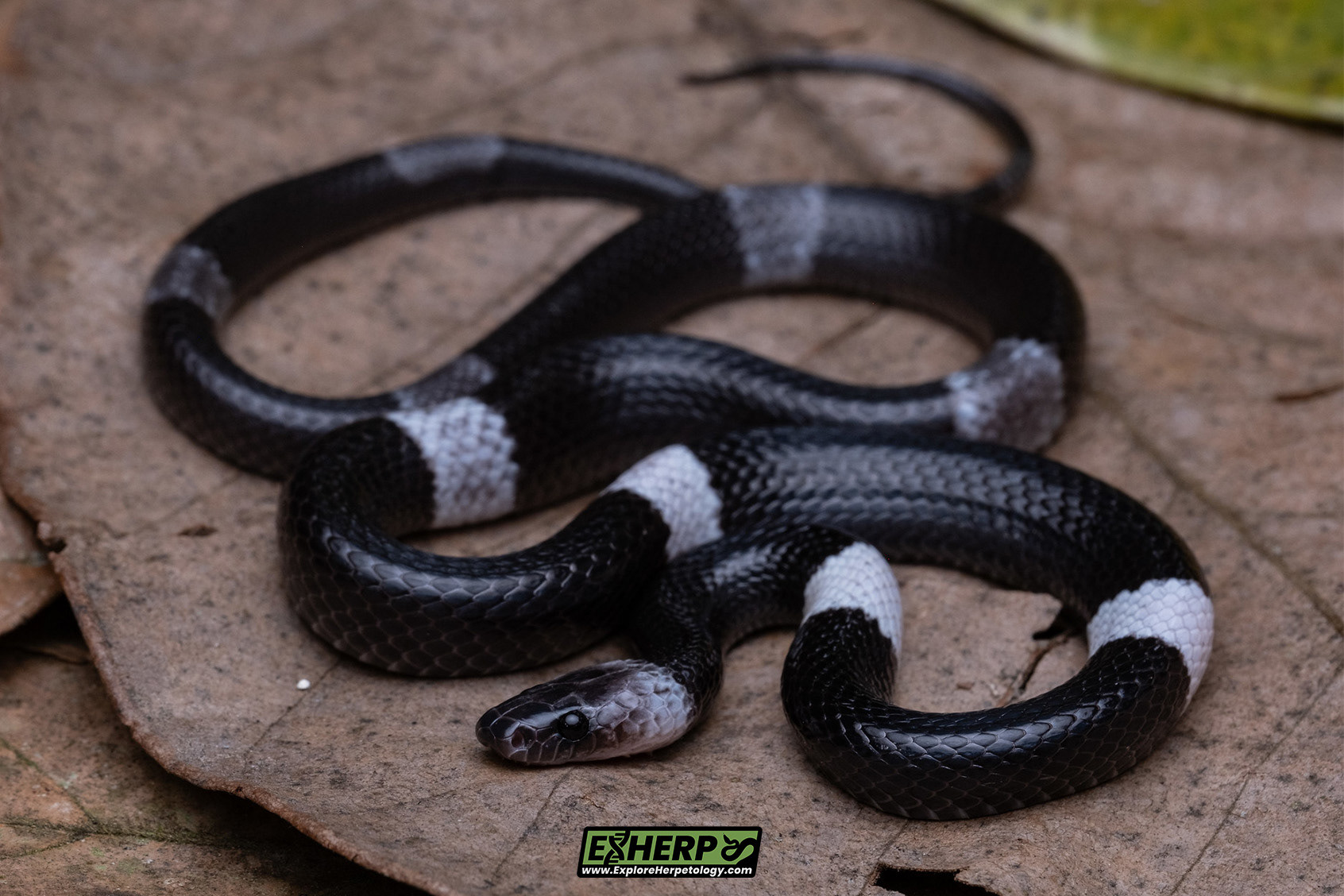
Malayan banded wolf snake (Lycodon subcinctus).
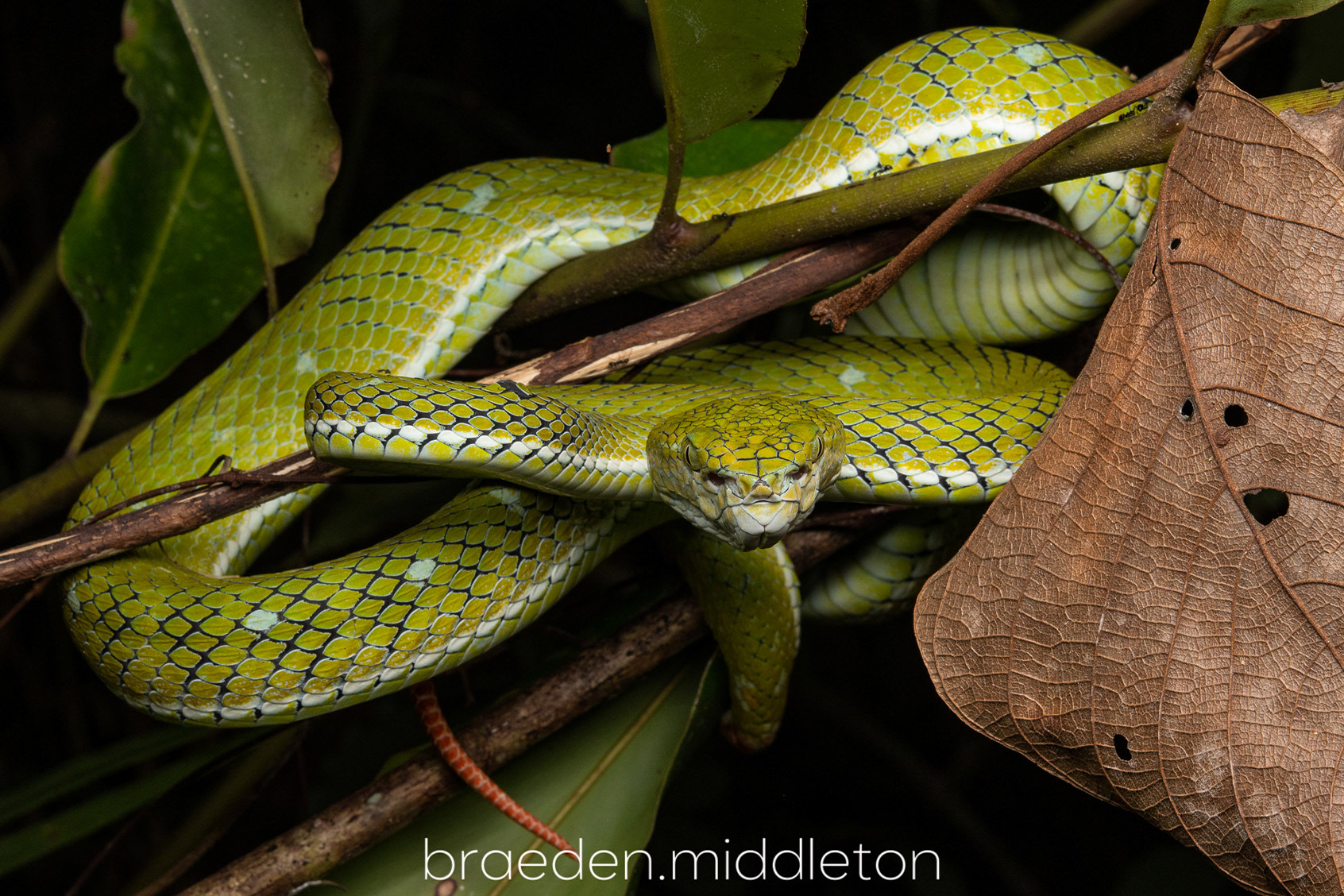
Hagen's pit viper (Trimeresurus hageni).
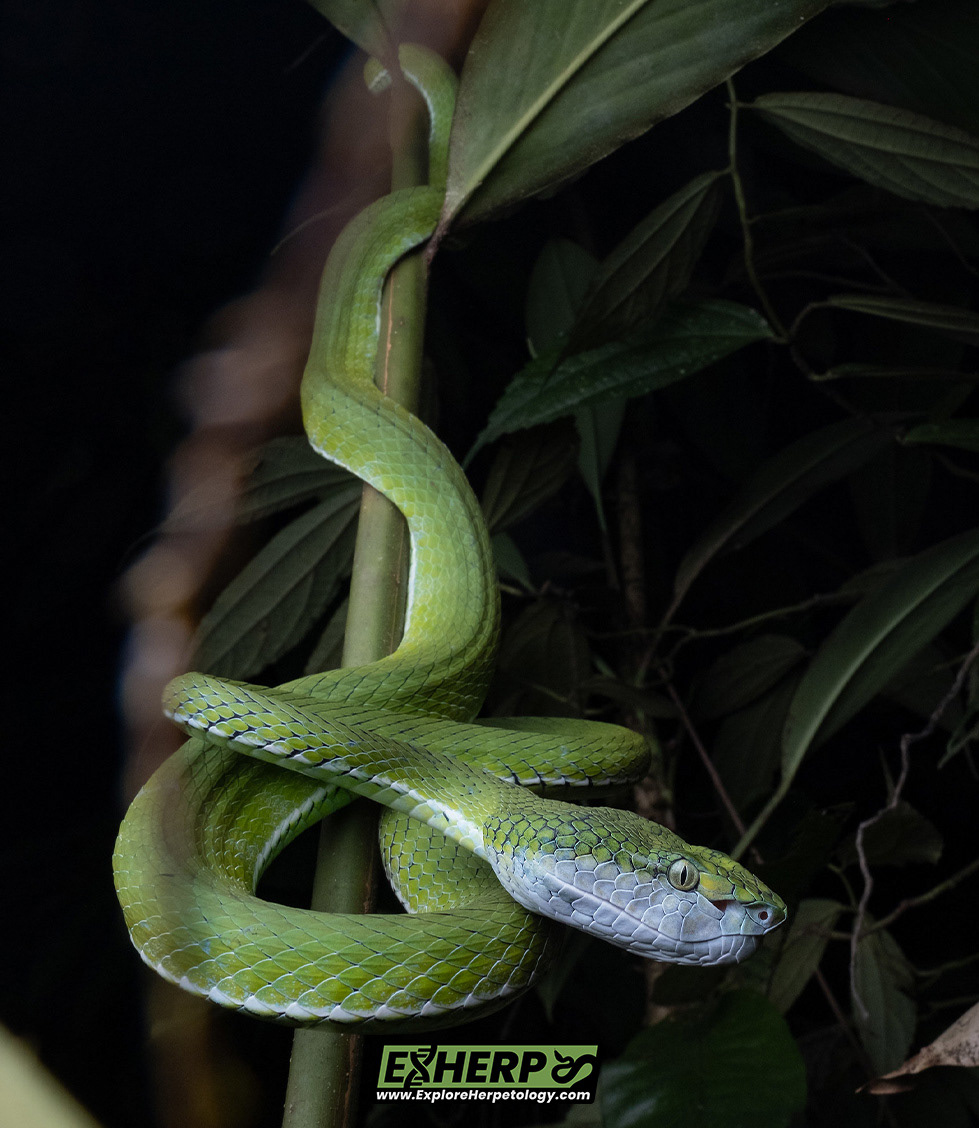
Hagen's pit viper (Trimeresurus hageni).
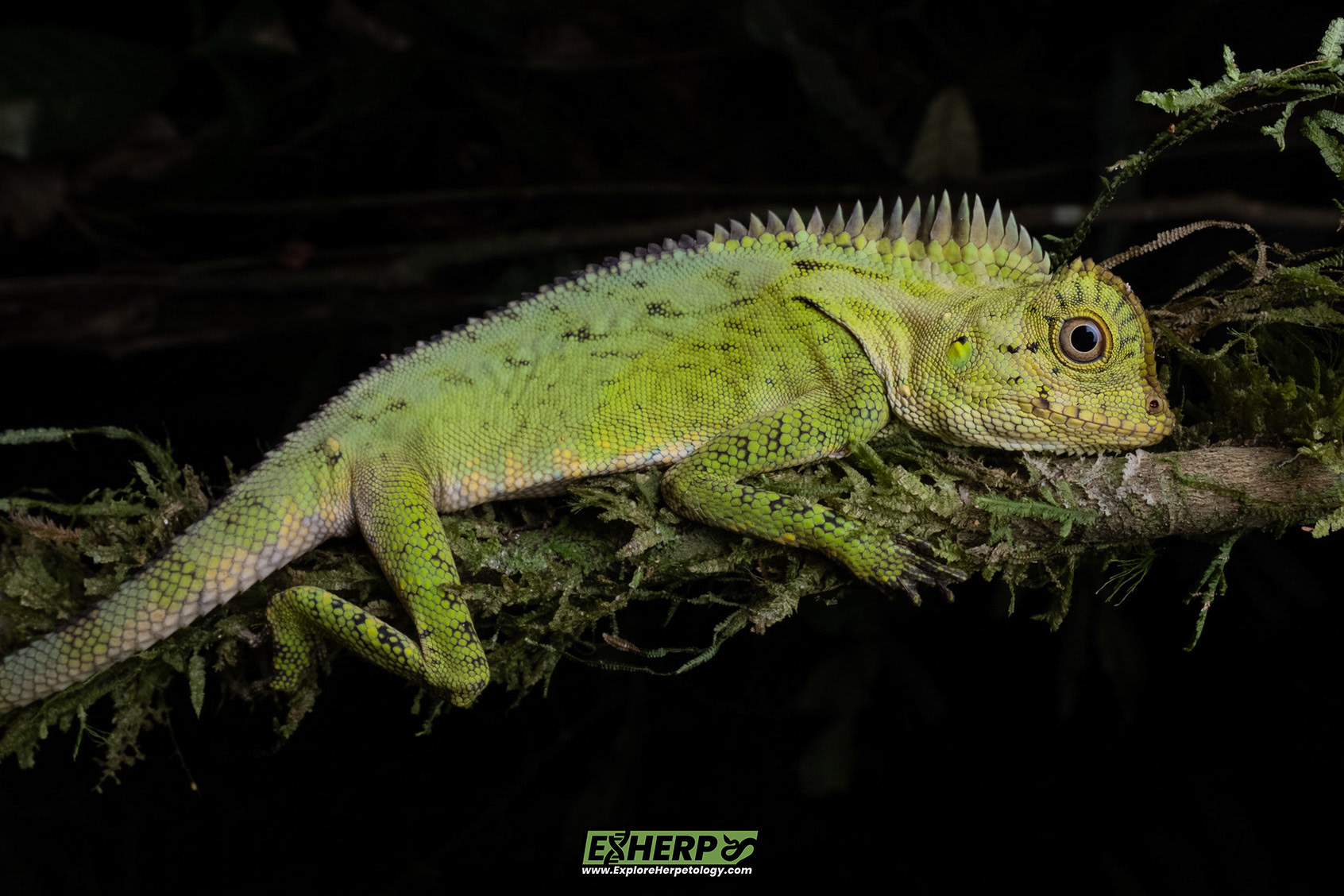
Chameleon angle-headed lizard (Gonocephalus cf. chameleotinus).
Day 7 - Ketambe
Our third day in Ketambe came alive when we were flagged down in our cars by a local ranger we had befriended on the previous days, who was shouting "we have snake!". Sure enough, inside the kitchen of his house was a keeled rat snake (Ptyas carinata) in the process of eating a river toad. The snake freaked out and dropped the toad as soon as we entered the room, so we captured and released it nearby.
We tried yet another trail at night, focusing on searching forest-edge plantations in the hopes of encountering some different species. This turned up a large dog-toothed cat snake (Boiga cynodon) - finally breaking our streak of no-Boiga days - and 2 further Brahminy blind snakes (Indotyphlops braminus). Back at the resort, Braeden found a beautiful Jasper cat snake (Boiga jaspidea) along with some nice frogs which were new for the trip.
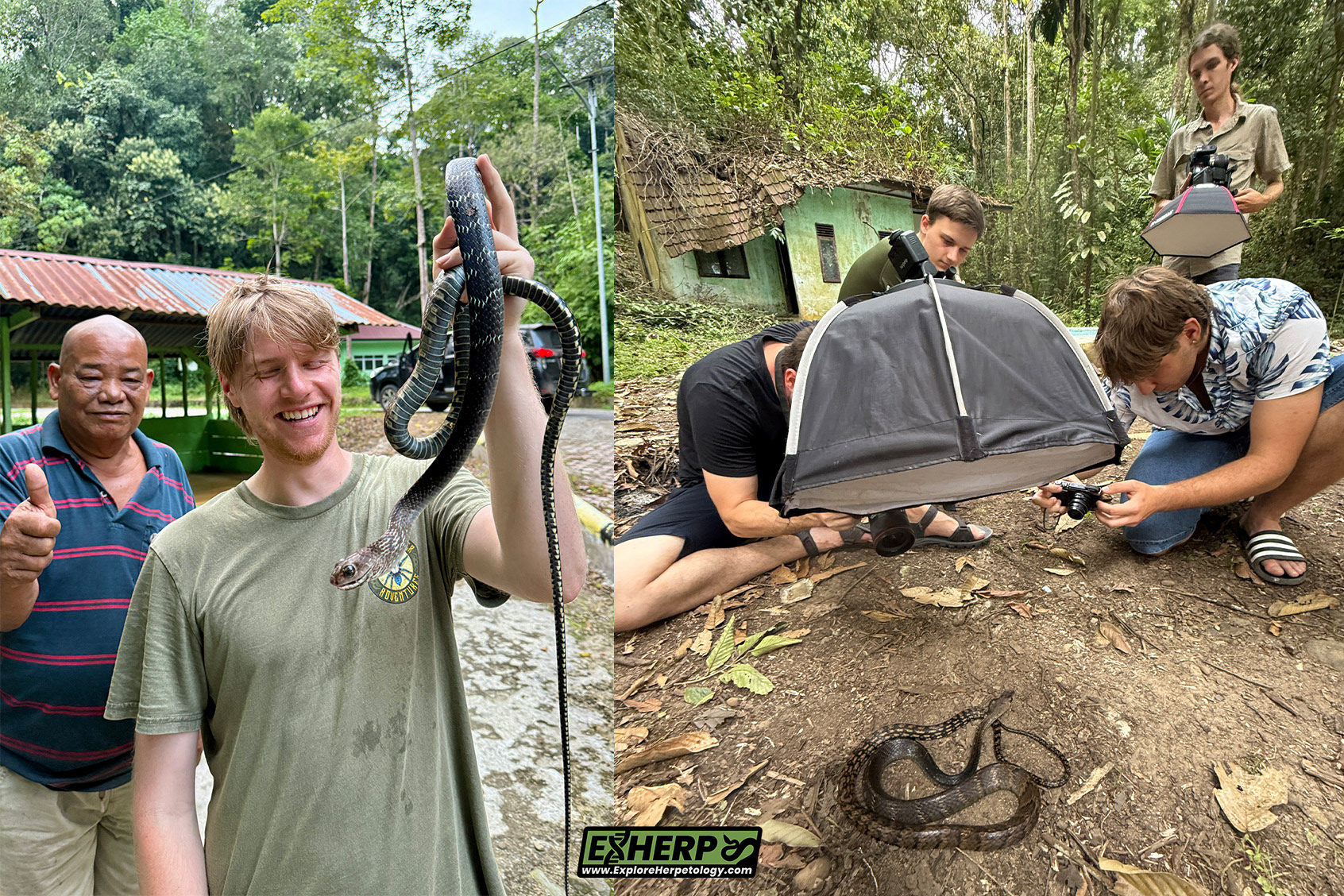
Keeled rat snake (Ptyas carinata).
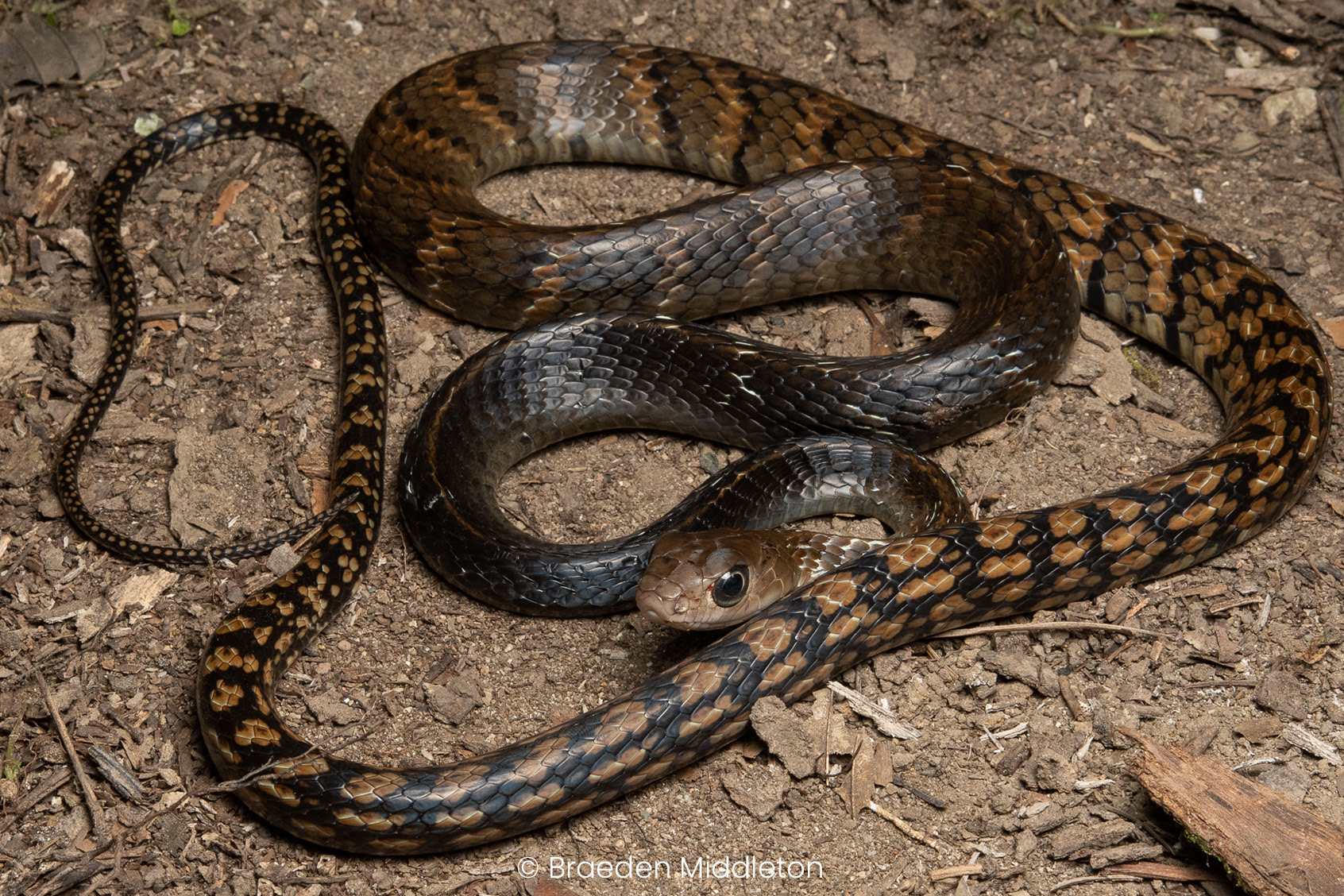
Keeled rat snake (Ptyas carinata).
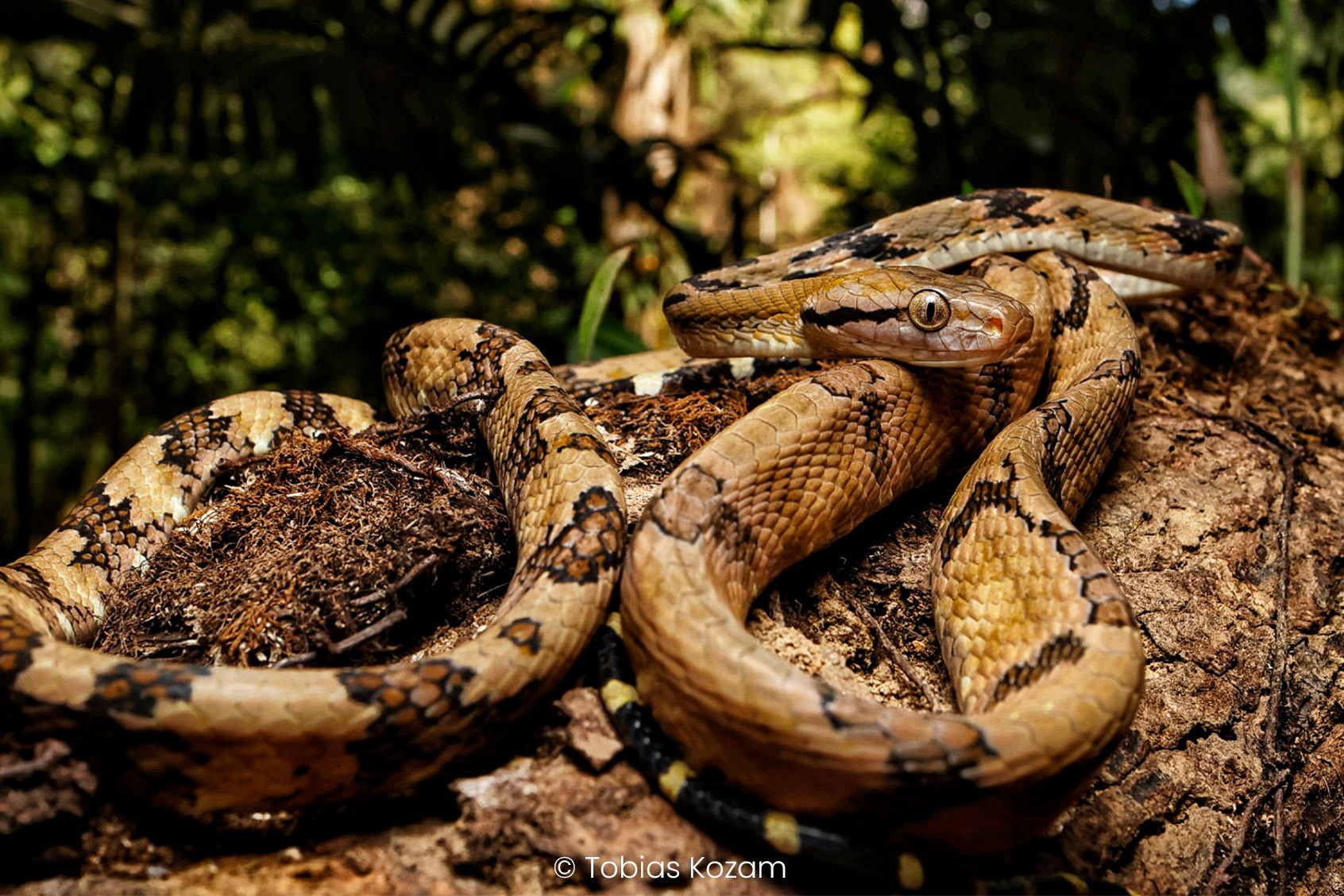
Dog-toothed cat snake (Boiga cynodon).

Chasen's frilled tree frog (Kurixalus chaseni).
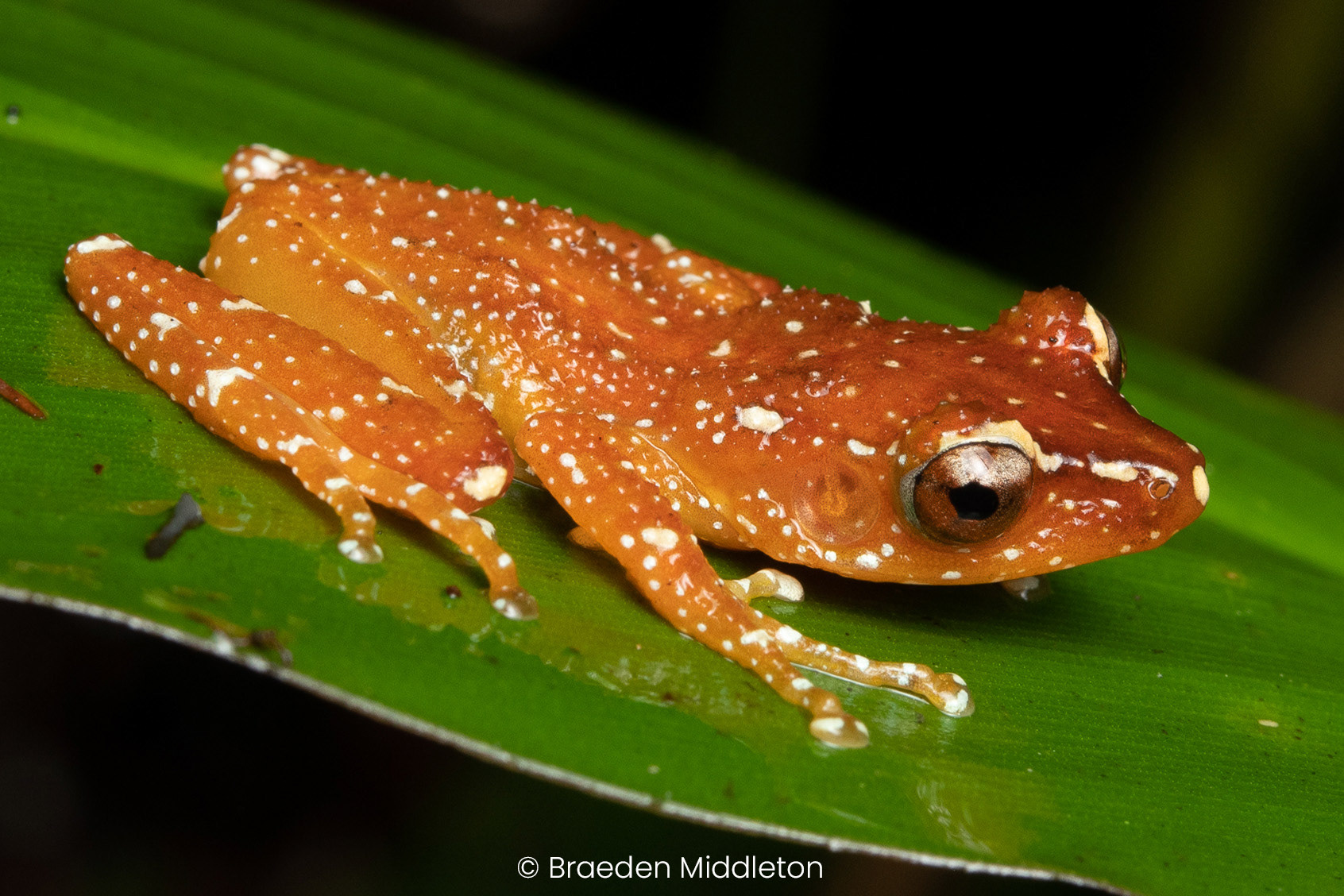
Cinnamon frog (Nyctixalus pictus).
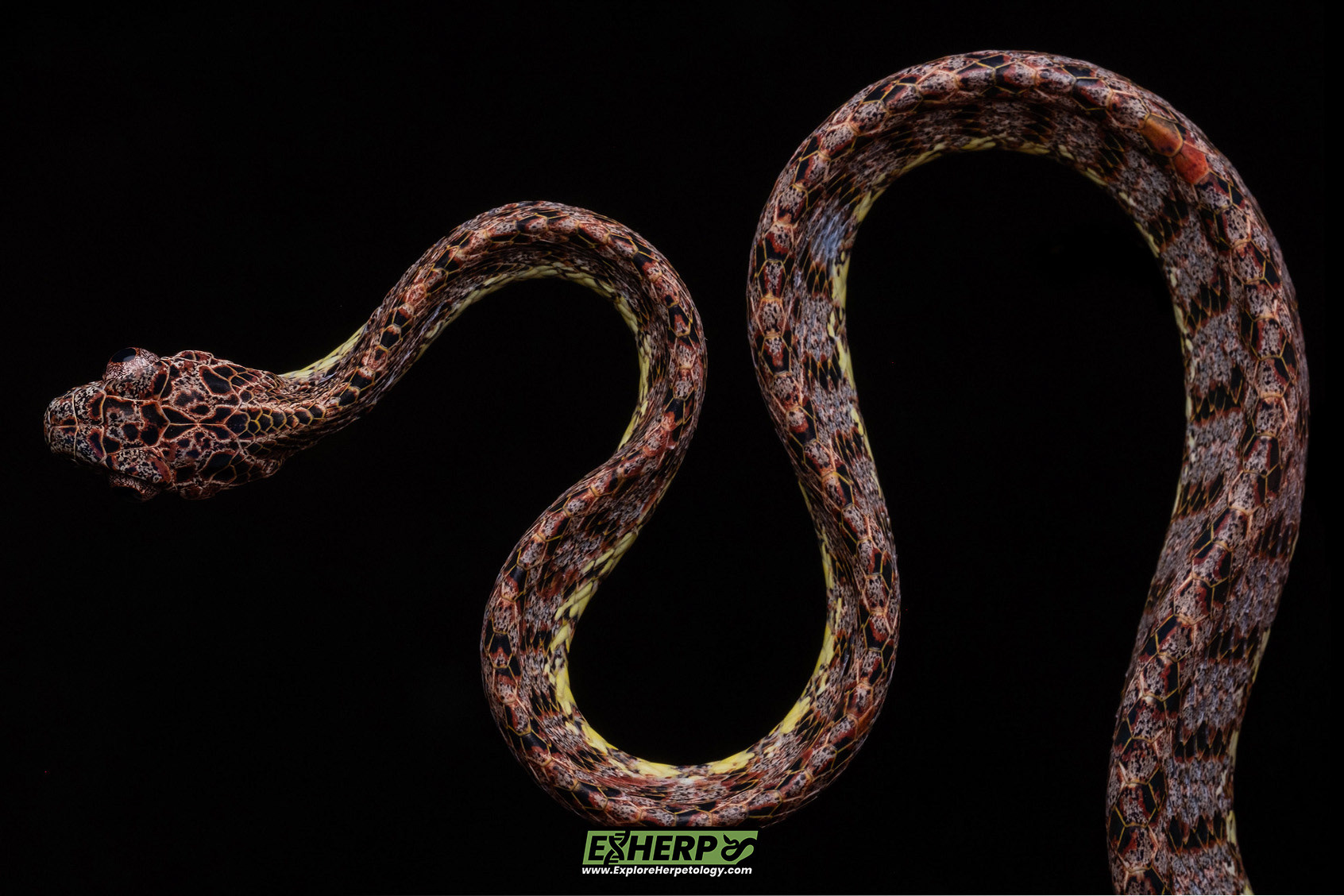
Jasper cat snake (Boiga jaspidea).
Day 8 - Ketambe
After 2 slow days with extremely dry weather, we were in dire need of rain to boost activity to drizzly first-night levels, and that's exactly what we got. A big storm rolled in at sunset and finally doused the area in rain. This immediately improved our success rate, kicking things off with a striped bronzeback (Dendrelaphis caudolineatus) in the late afternoon.
After dark, we hiked a stream and found several Hagen's pit vipers (Trimeresurus hageni), more vine snakes (Ahaetulla mycterizans and Ahaetulla fasciolata), and two new species for the trip; an elegant bronzeback (Dendrelaphis formosus) and a Malayan bridle snake (Dryocalamus subannulatus). Further searching around our resort produced several more species, such as a male Wagler's pit viper (Tropidolaemus wagleri), multiple sunbeam snakes (Xenopeltis unicolor) and a white-spotted cat snake (Boiga drapiezii).
However, the best find was undoubtedly 2 dragon snakes (Xenodermus javanicus) - found just meters behind our bungalows in a small stream. Both were relatively large individuals which were hunting amongst the rocks and fallen logs during a period of heavy rain which continued late into the night. A fantastic and much-awaited showstopper - a first record for the area as well.
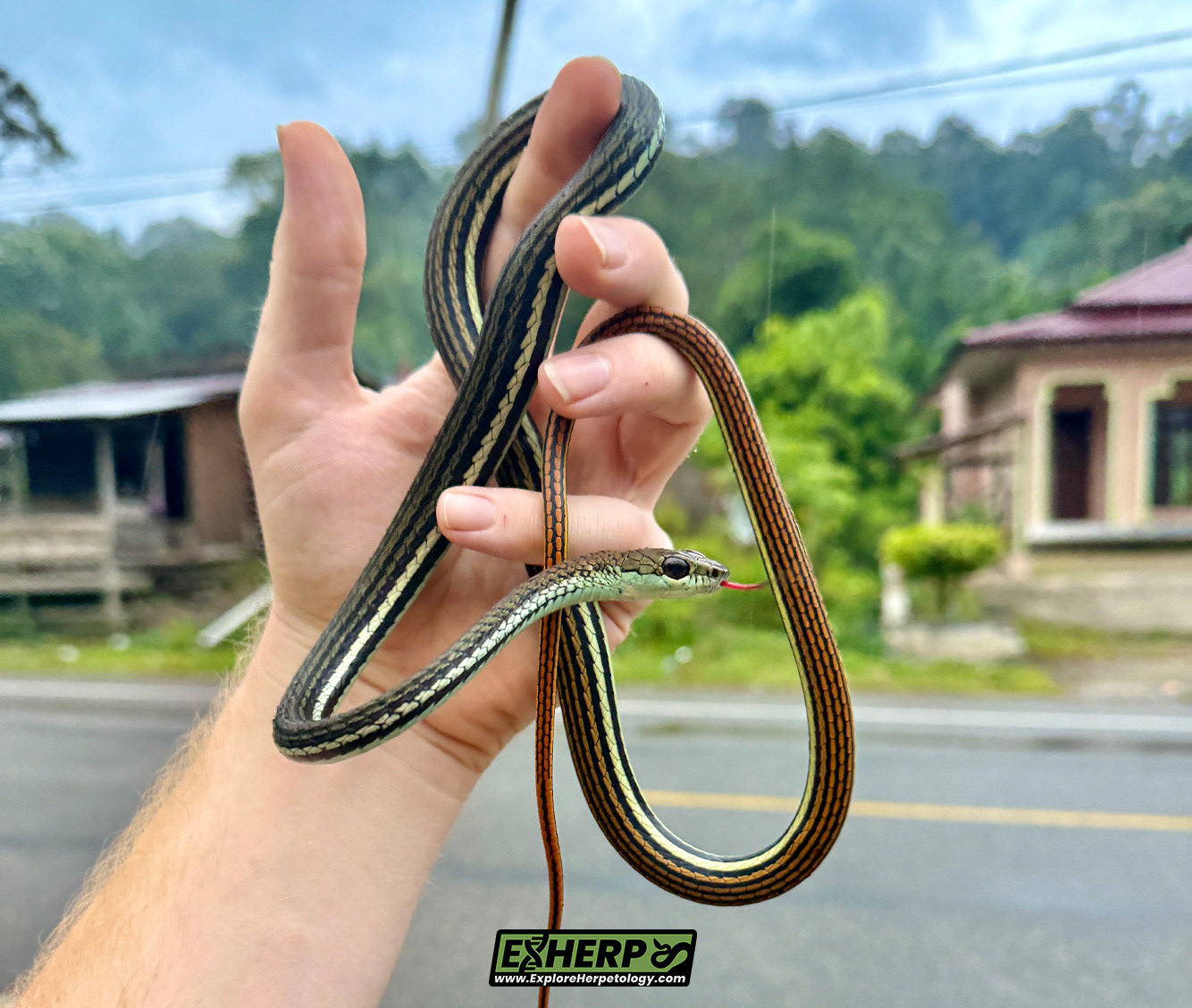
Striped bronzeback (Dendrelaphis caudolineatus).

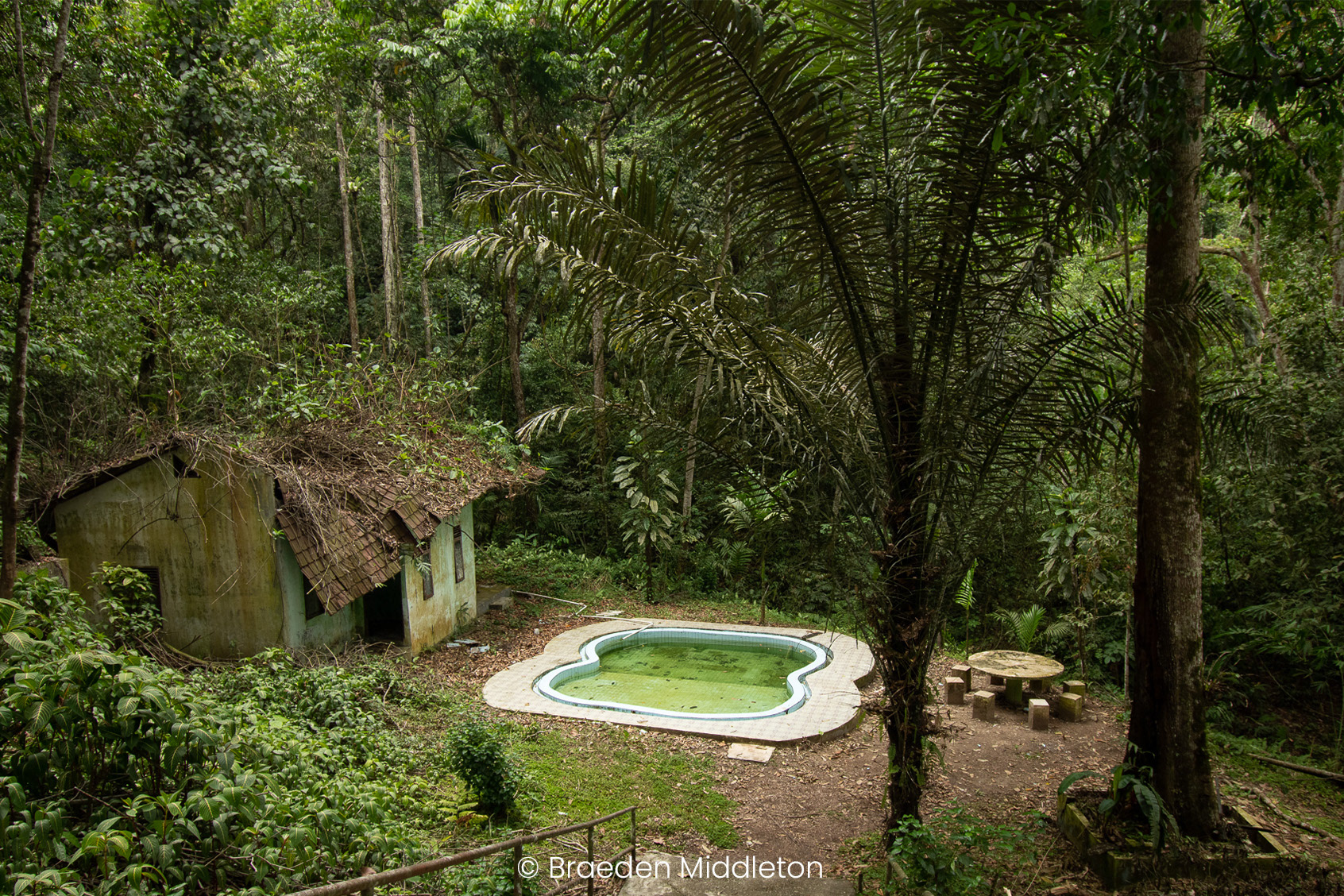
Habitat of many of the species found during this trip.
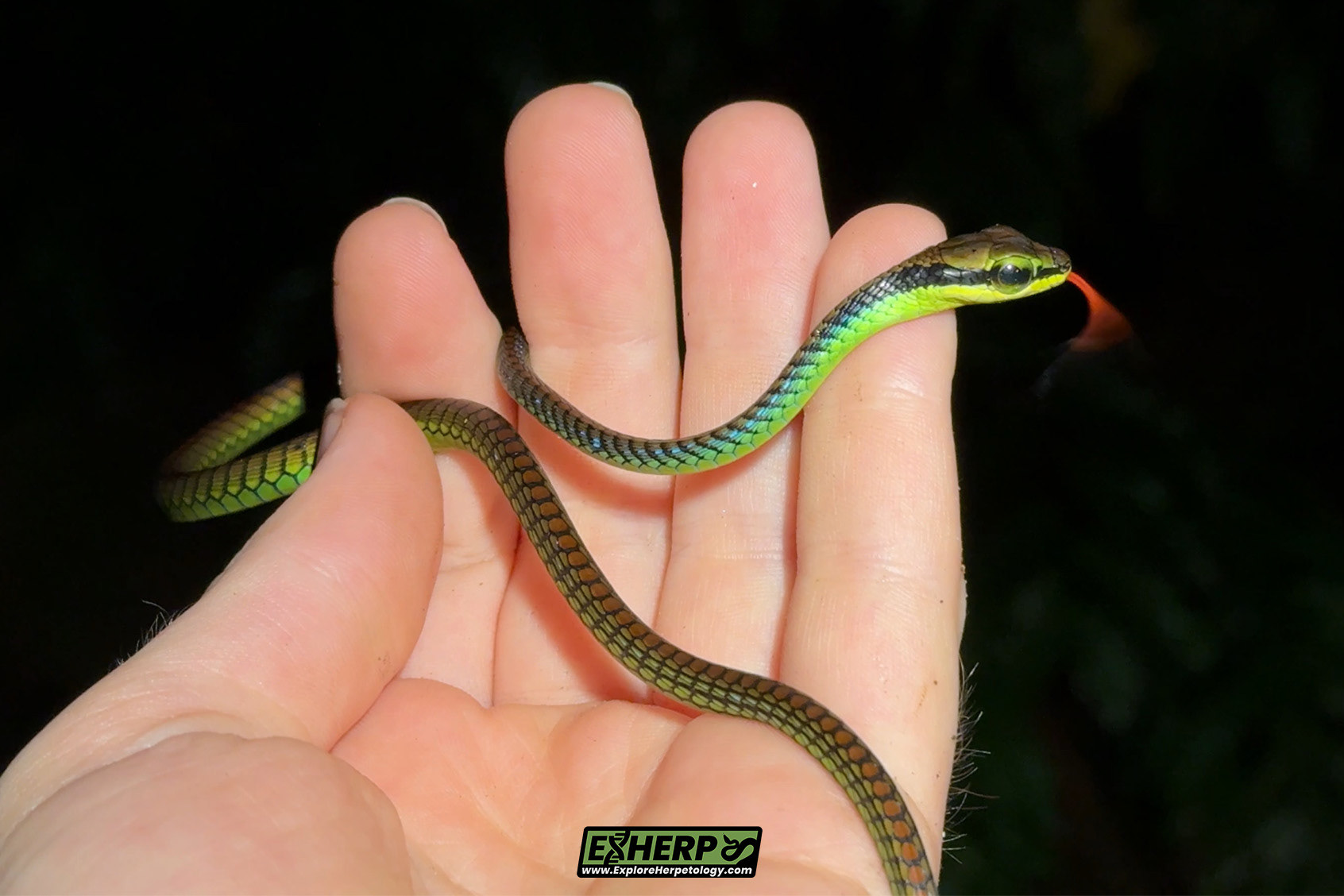
Elegant bronzeback (Dendrelaphis formosus).
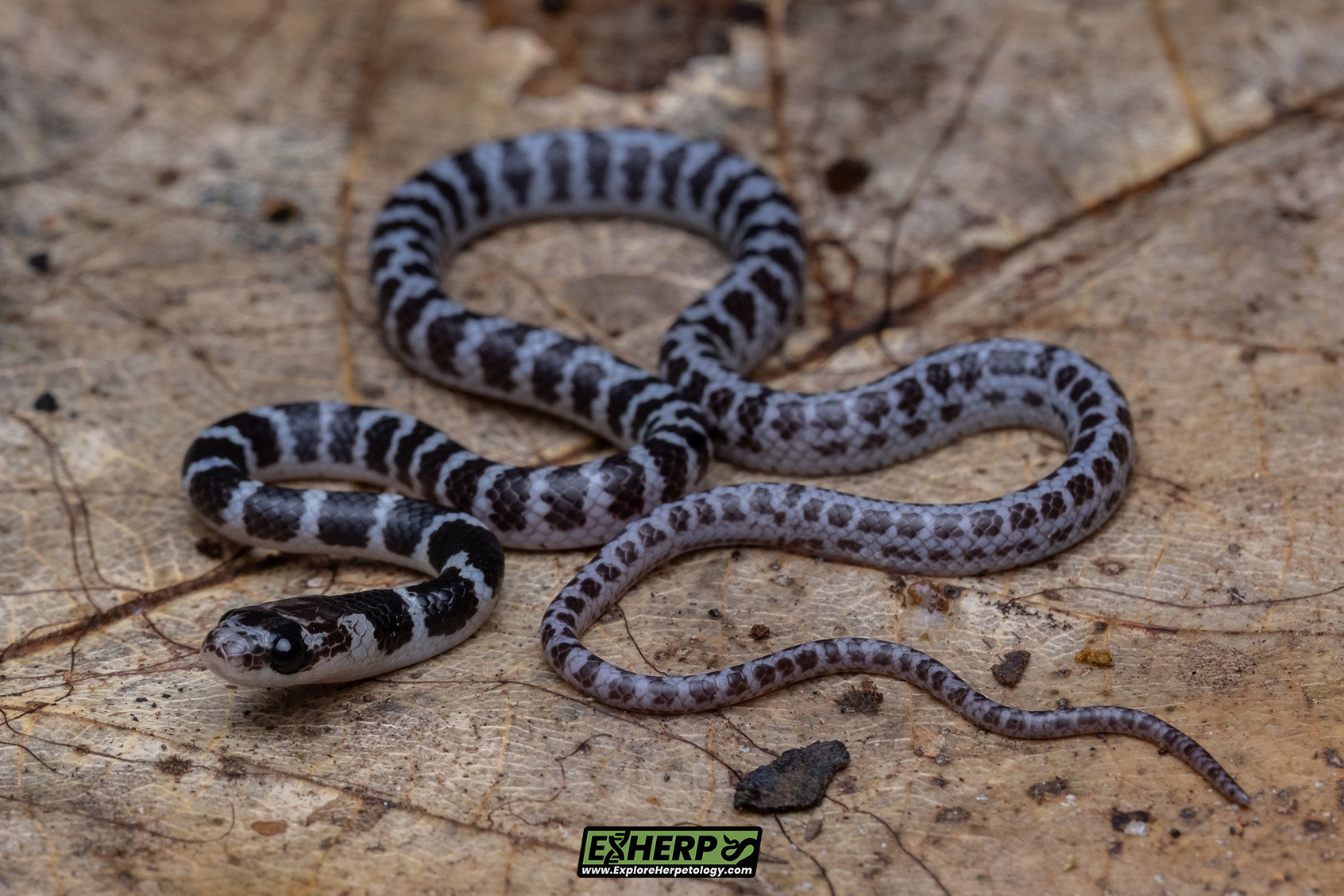
Malayan bridle snake (Dryocalamus subannulatus).
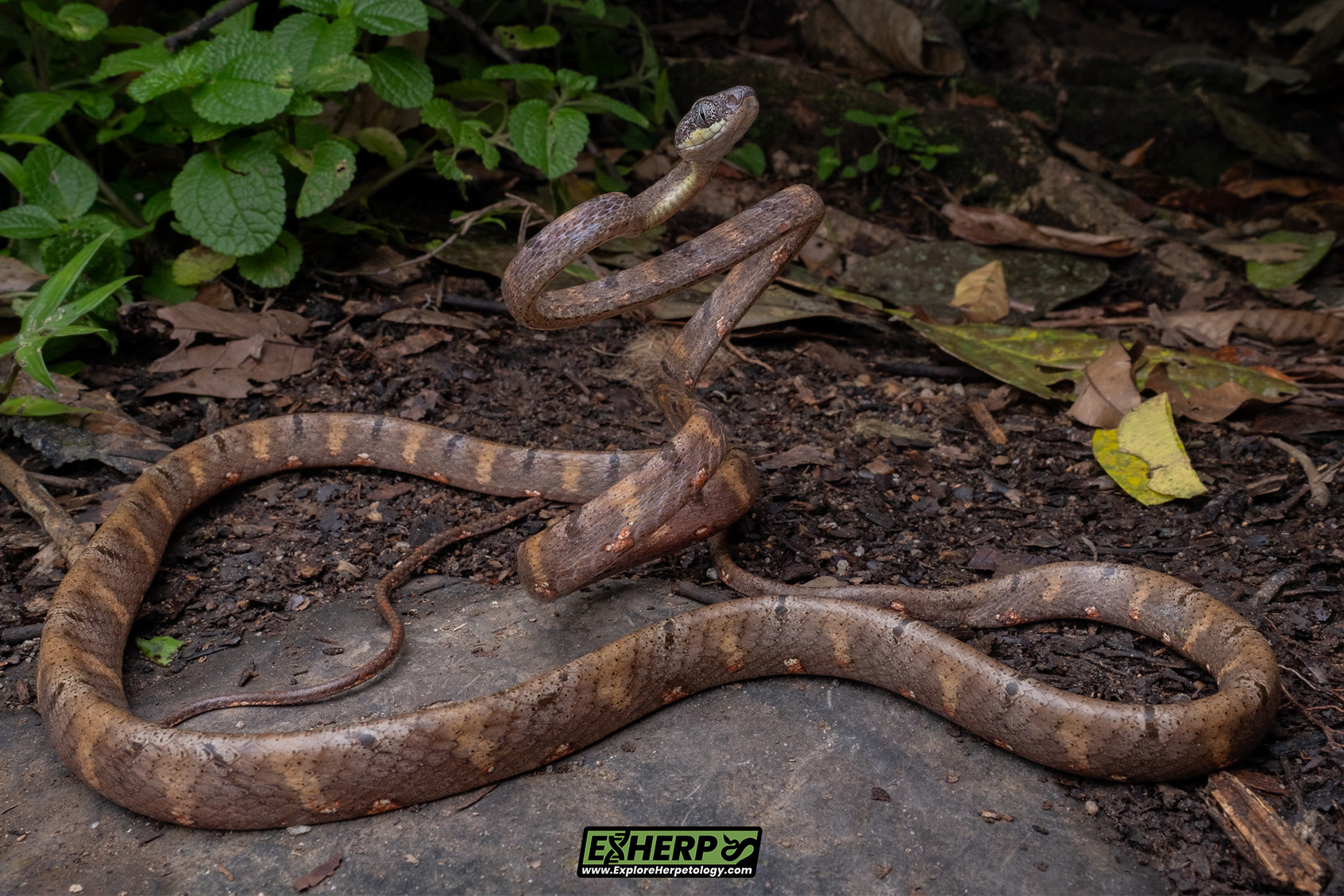
White-spotted cat snake (Boiga drapiezii).
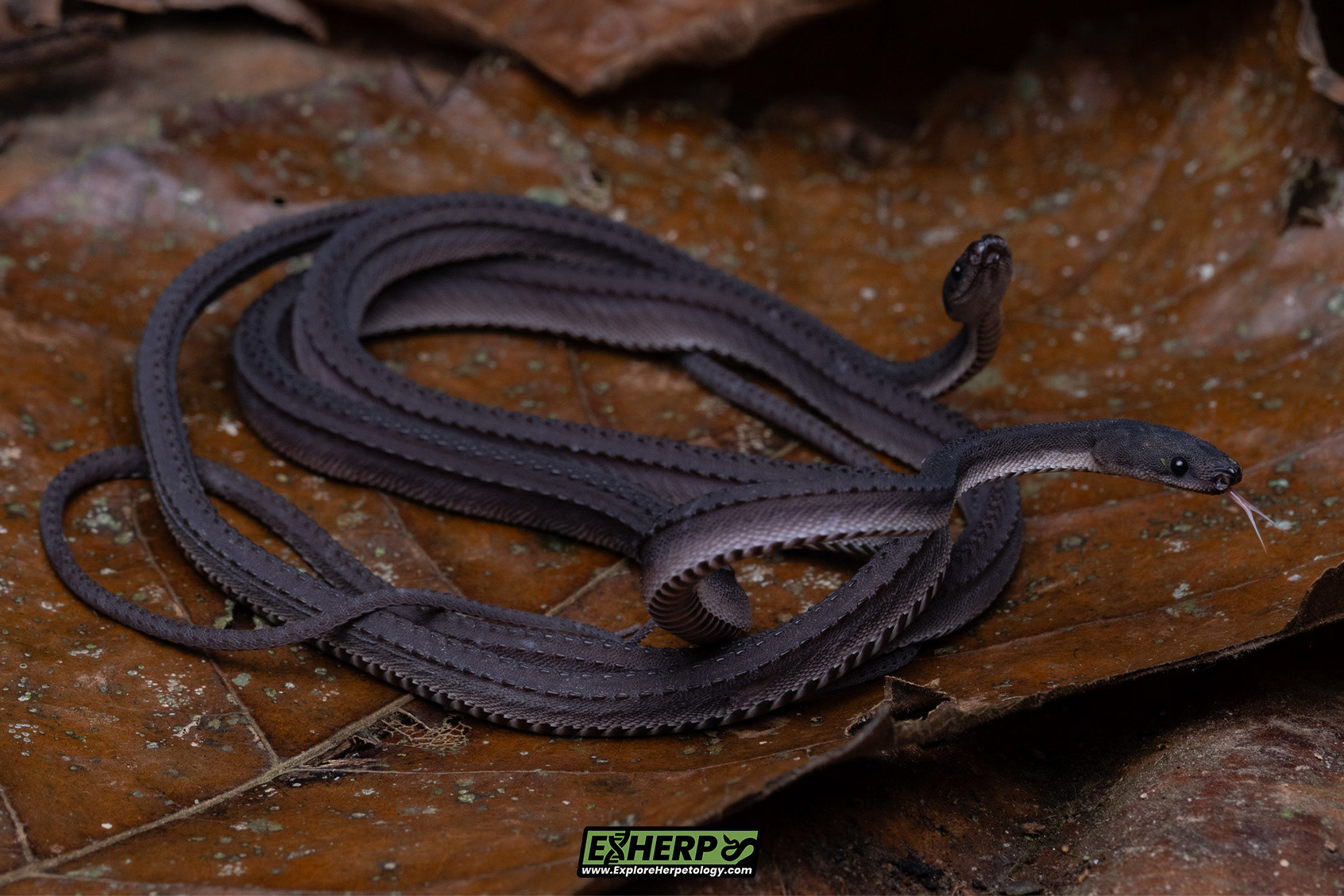
Dragon snakes (Xenodermus javanicus).

Dragon snake (Xenodermus javanicus).
Day 9 - Ketambe
Our final day in Ketambe was spent without water, as the water supply to our rooms was damaged and the river was too powerful and full of debris to bathe in anymore. However, this did not affect our morale to seek out the last key species we were missing from our time here - the lowland leaf-nosed pit viper (Craspedocephalus cf. borneensis) - which we were hoping had been brought out by the heavy rains the night before. Hereby, we embarked at twilight on a hike deep into the primary rainforest.
Not long into our hike, the group stopped to examine the roots of a huge dipterocarp tree for this cryptic pit viper, and moments later Rupert exclaimed "got one!" - revealing an absolutely stunning green and pink juvenile in a perfect ambush position in the roots. We continued into the valley despite more heavy rain arriving, finding several more species along the way. This included many Malayan vine snakes (Ahaetulla mycterizans), a large Malaccan slug snake (Asthenodipsas malaccanus), a juvenile white-spotted cat snake (Boiga drapiezii), a juvenile Wagler's pit viper (Tropidolaemus wagleri), a striped bronzeback (Dendrelaphis caudolineatus) and 2 more leaf-nosed pit viper (Craspedocephalus cf. borneensis). These 2 further Craspedocephalus were an impressive adult male and a sub-adult female. We also saw several interesting lizards on this absolutely fantastic final hike in the lowlands.
Not to be outdone, the male wagler's pit viper (Tropidolaemus wagleri) we had found the previous night had begun the mating process with the same large female from night 1, which had been hanging out in the same area behind our bungalows for the whole trip!
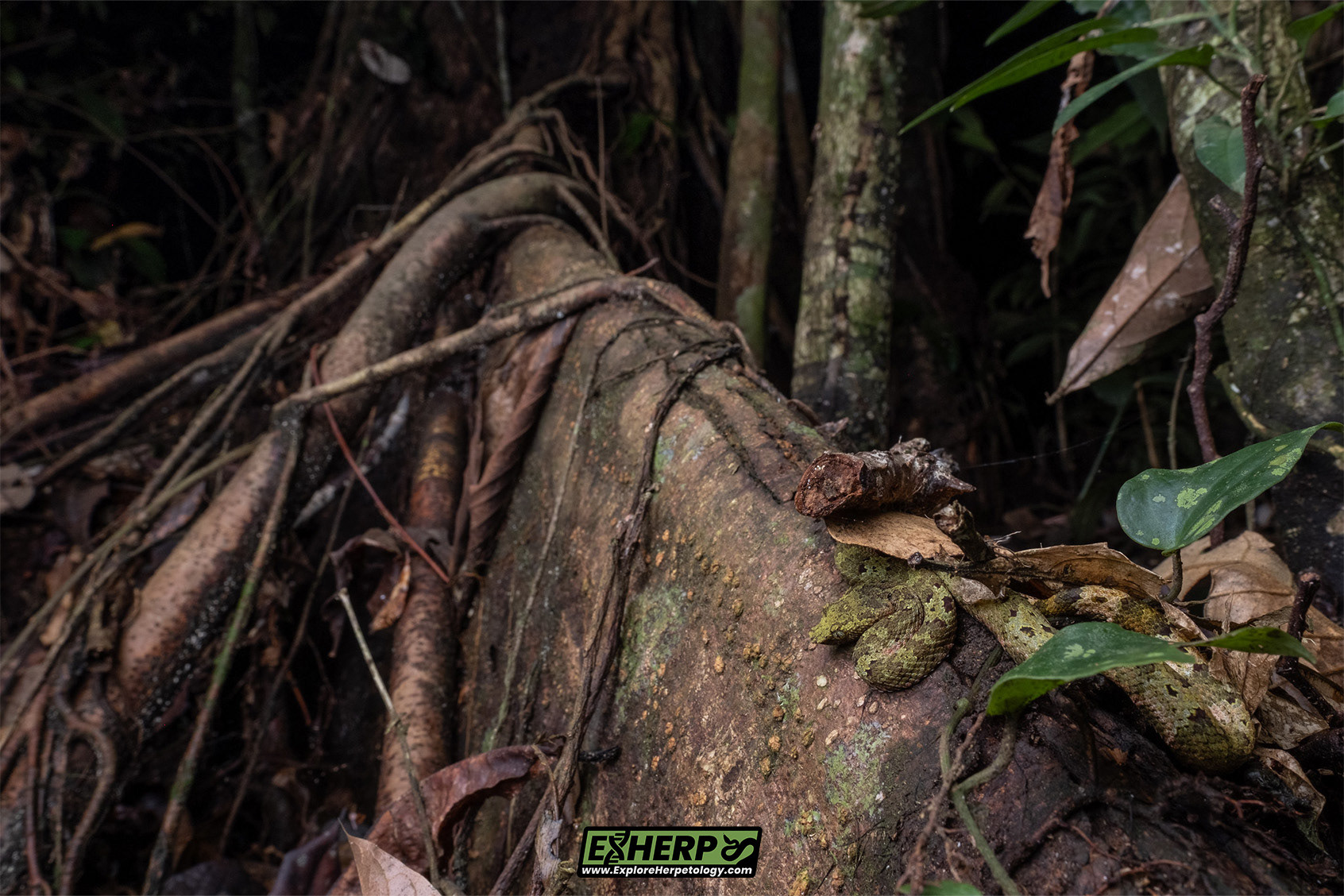
In-situ juvenile leaf-nosed pit viper (Craspedocephalus cf. borneensis).
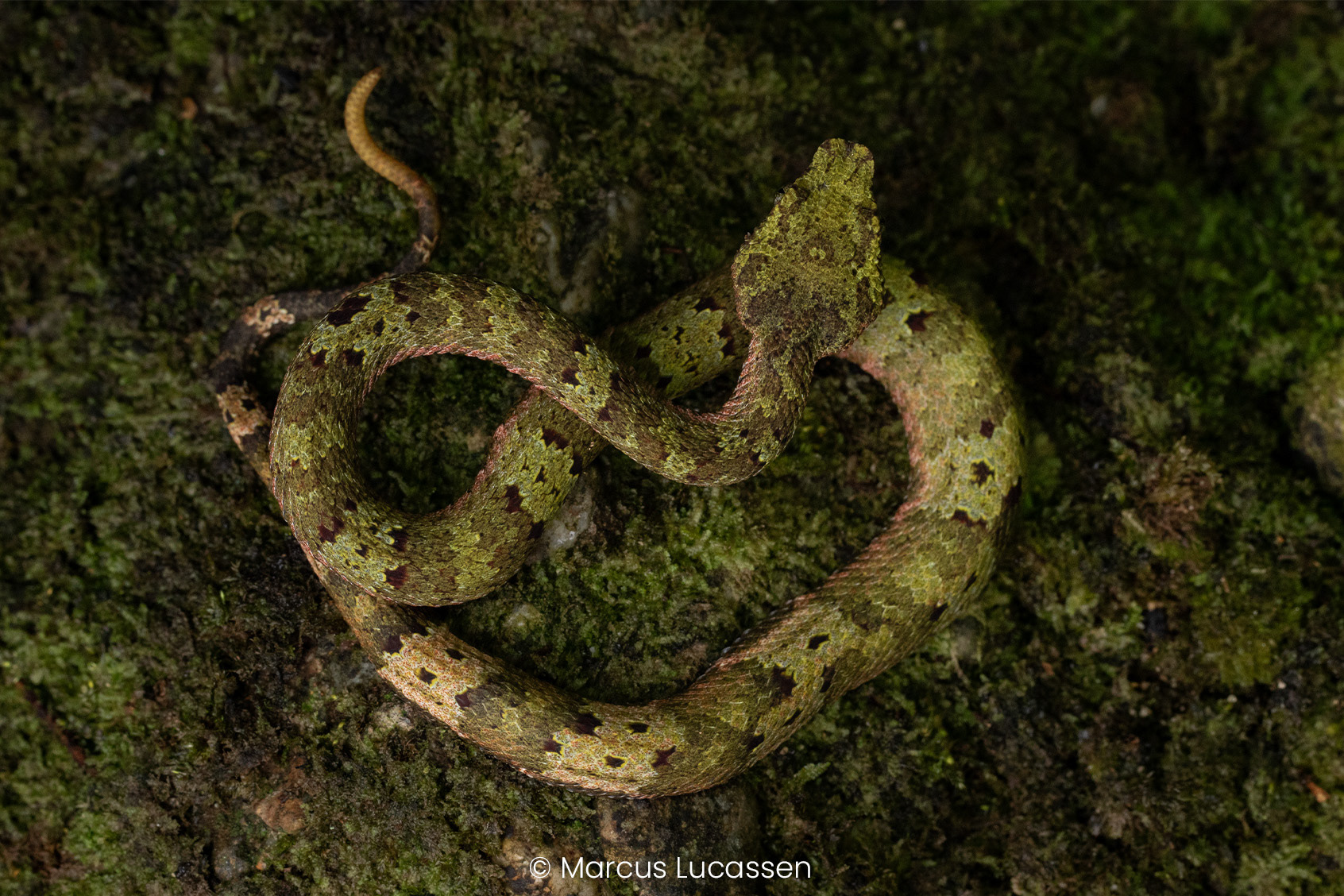
Juvenile leaf-nosed pit viper (Craspedocephalus cf. borneensis).
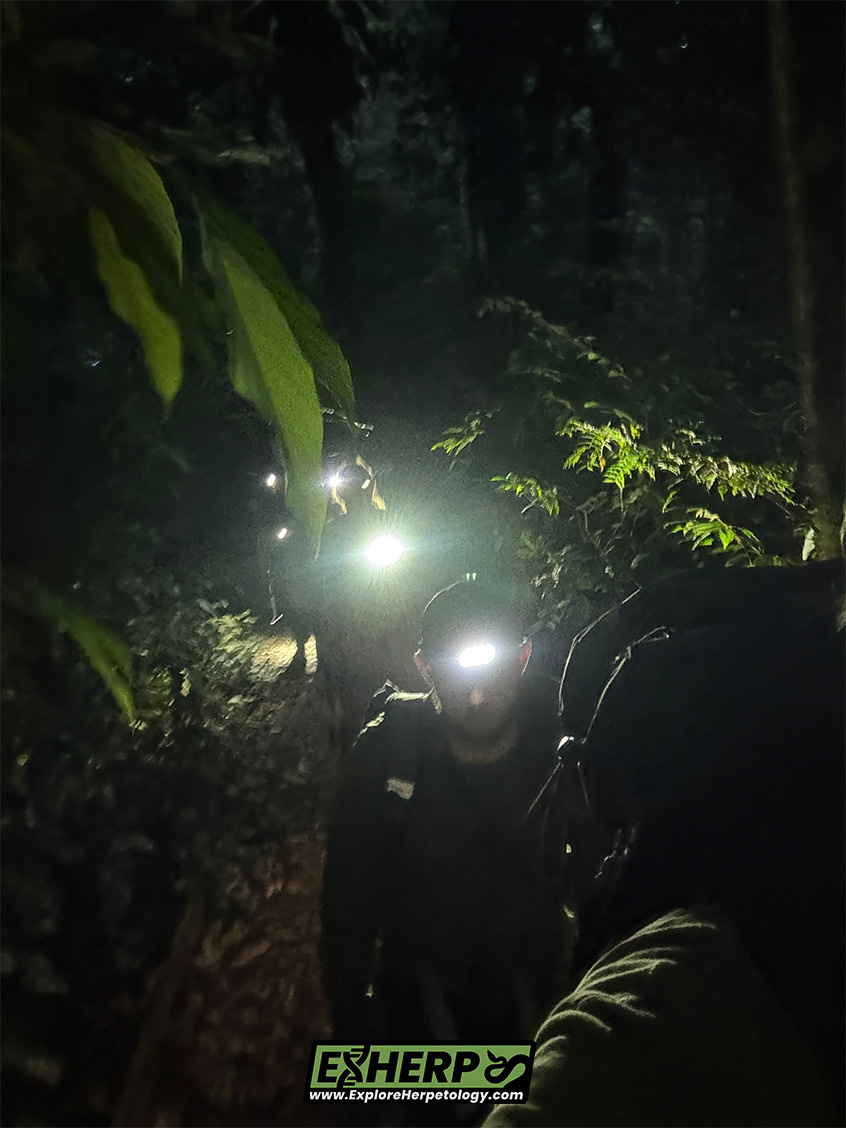
Heading into the jungle after sunset.
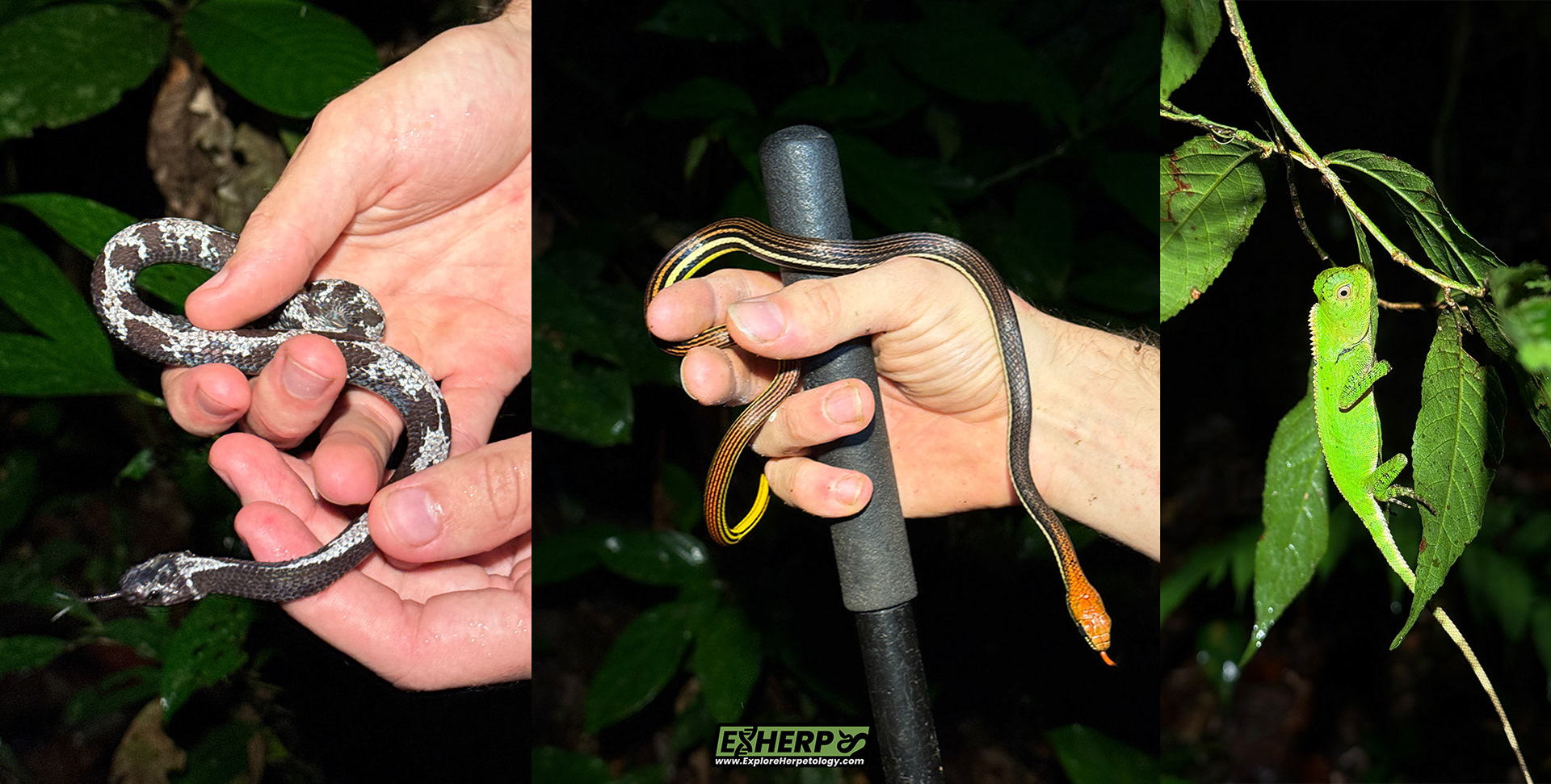
Various repeat finds.
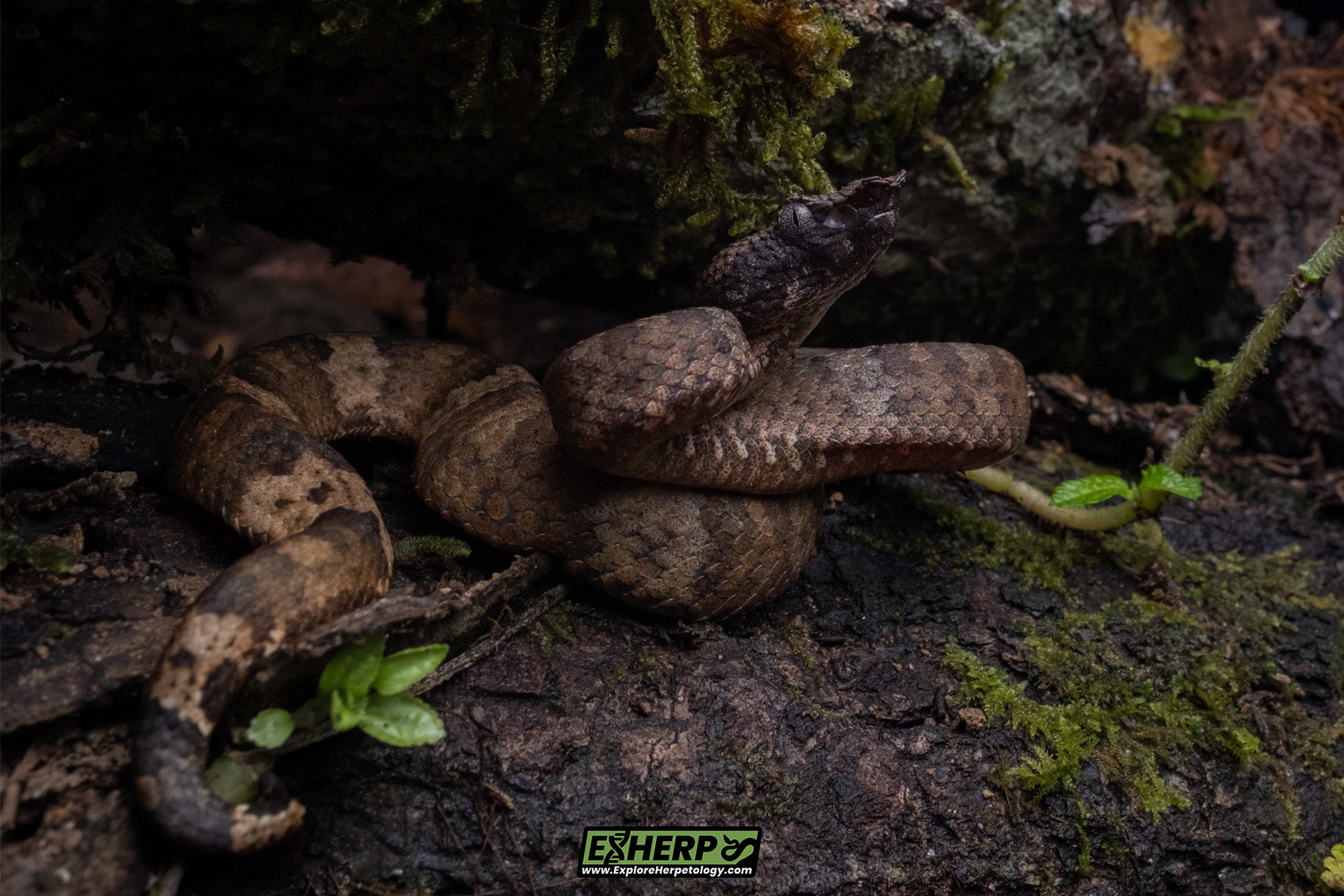
Female leaf-nosed pit viper (Craspedocephalus cf. borneensis).
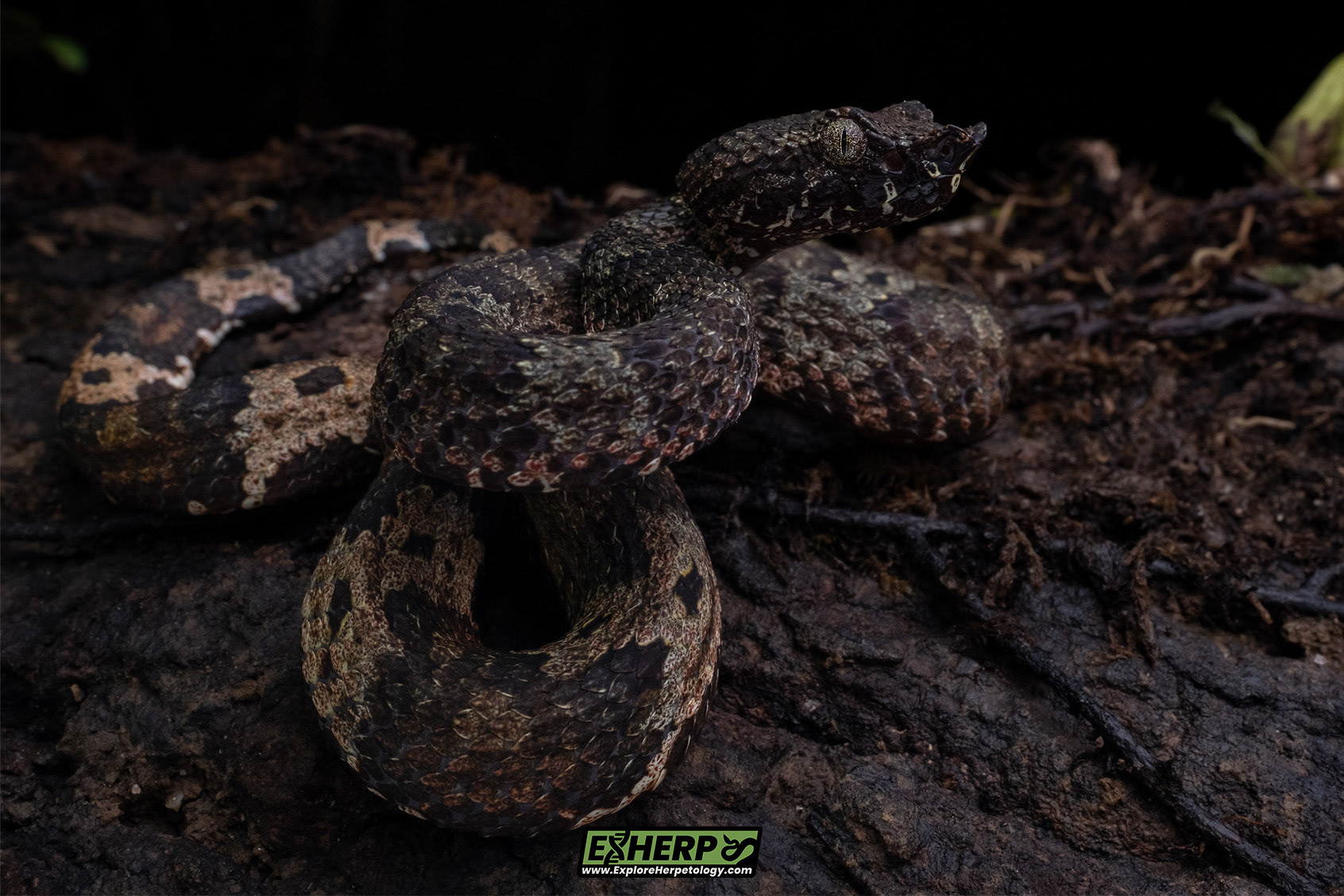
Male leaf-nosed pit viper (Craspedocephalus cf. borneensis).
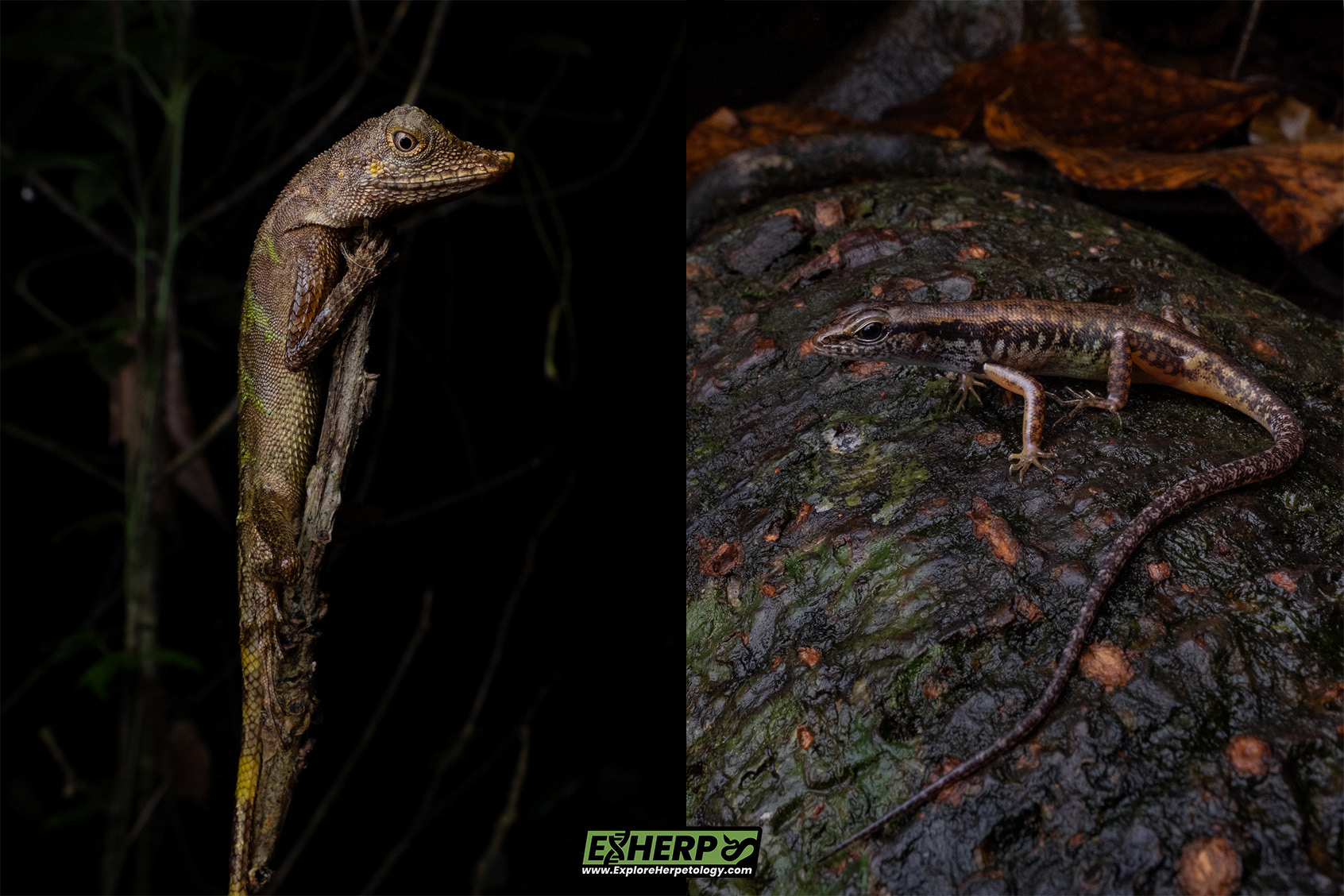
Left: Aphaniotis acutirostris. Right: Unknown Sphenomorphus sp.
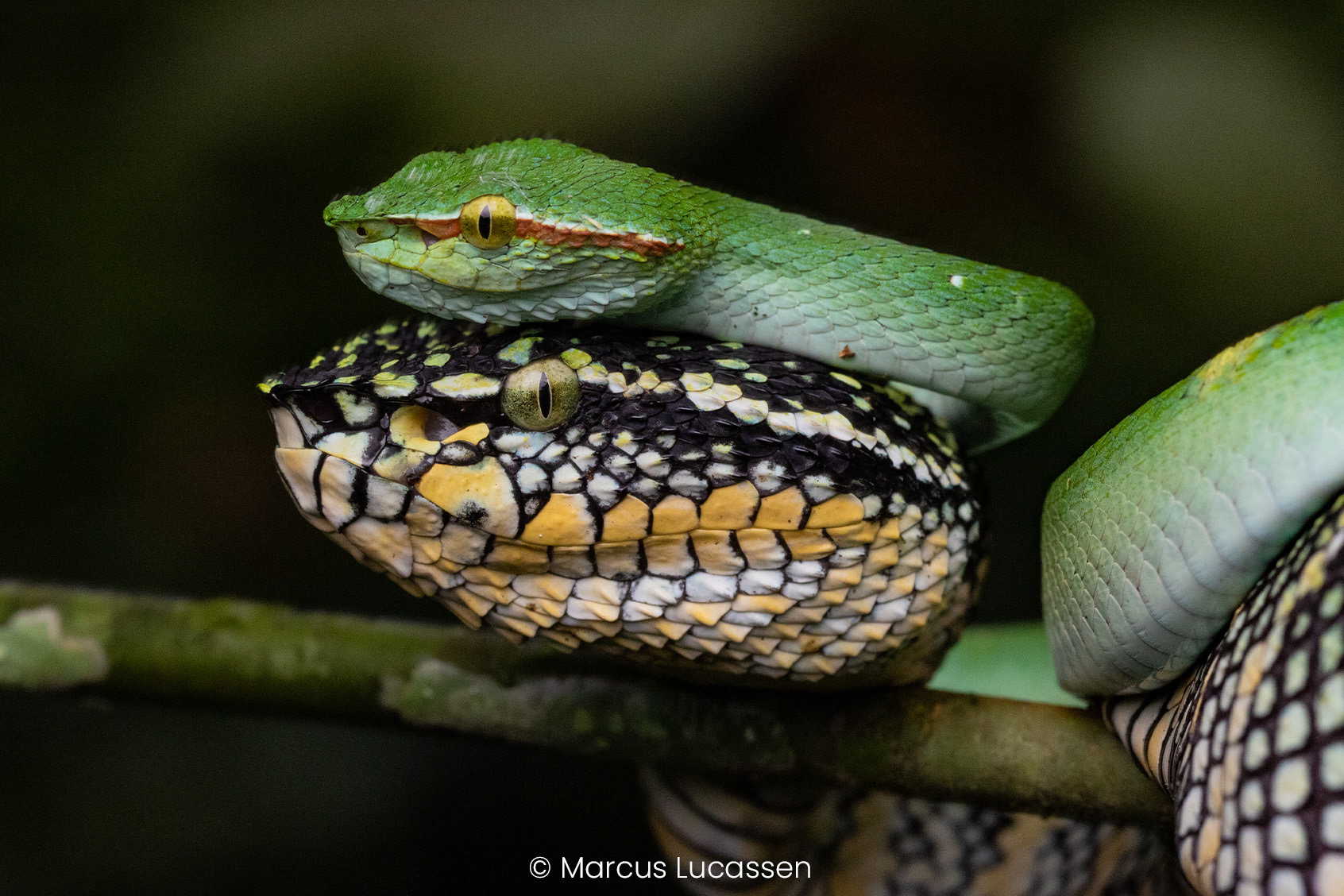
Courting Wagler's pit vipers (Tropidolaemus wagleri).
Day 10 - Berastagi
To break up the almost 9 hour drive back to Medan, we stopped for one final night of herping in the highlands of North Sumatra, and one final chance to search for our biggest highland targets. We began the evening searching at the mid-montane site which had turned up 7 species of snake in 1 night earlier in the trip, but over 2 hours herping here failed to produce a single individual this time.
Hereby, we switched to the upper elevations and began grinding once again for Harpesaurus and Oligodon petronellae. Within just a few minutes of hiking, Rupert found two more Manthey's mountain lizards (Gonocephalus lacunosus) sleeping beside each other - the male being even larger than the individual we saw during our first stint here. He subsequently called over the group to look at these two lizards, and while walking over Braeden spotted a little snake half-hidden inside a hole in the bank of the trail. We got it out to reveal an absolutely stunning Petronella's kukri snake (Oligodon petronellae), one of the best possible encounters on our last day here!
The fun did not end here though, as we went on to find the 2 'common' species in the area which had somehow evaded us through all our searching over the first 4 days in the highlands; the Sumatran slug snake (Asthenodipsas tropidonotus) and Schlegel's reed snake (Calamaria cf. schlegeli). This slug snake is possibly the largest member of the Pareatidae group. While this was the last of our personal finds, we got to see two more snakes which Eddy and Radit had sourced from locals during the days we were away. The first was a huge and absolutely incredible red bamboo ratsnake (Oreocryptophis porphyracea laticinctus), a target which had evaded us this time, and a baby Sumatran cobra (Naja sumatrana) - a species we had only seen fresh DOR on this trip.
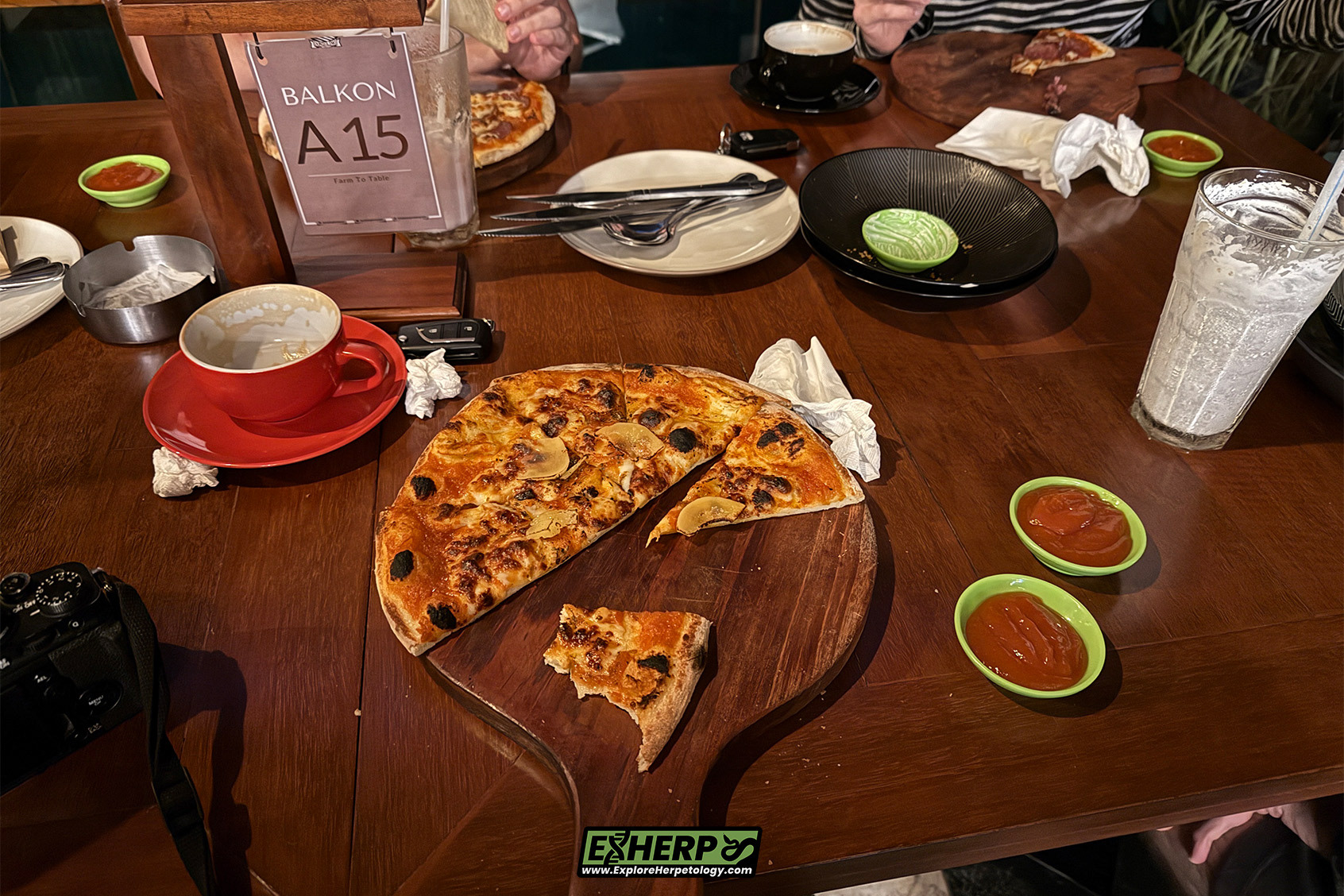
Pizza for our final dinner.
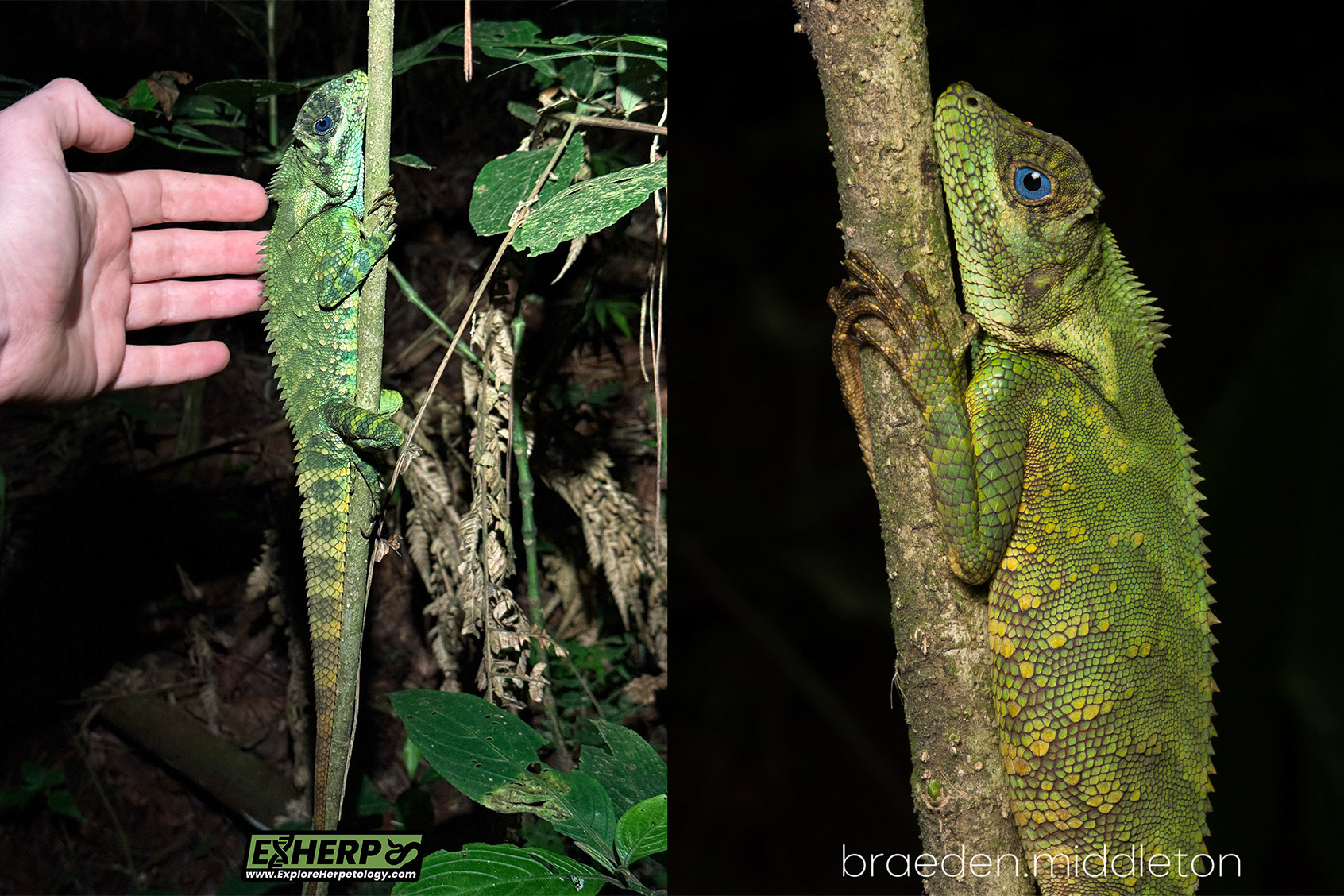
Male & female Gonocephalus lacunosus.
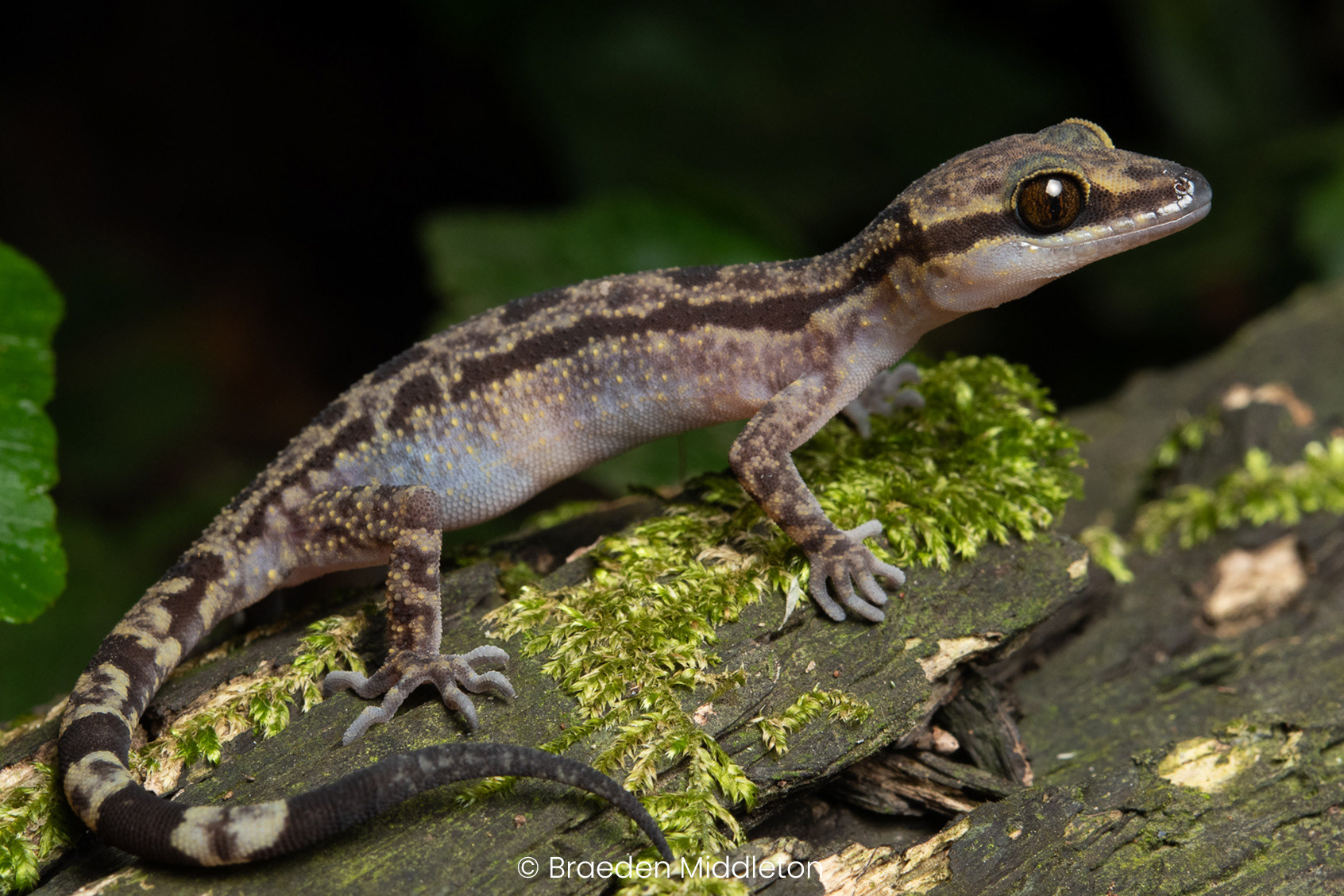
Cyrtodactylus sp.
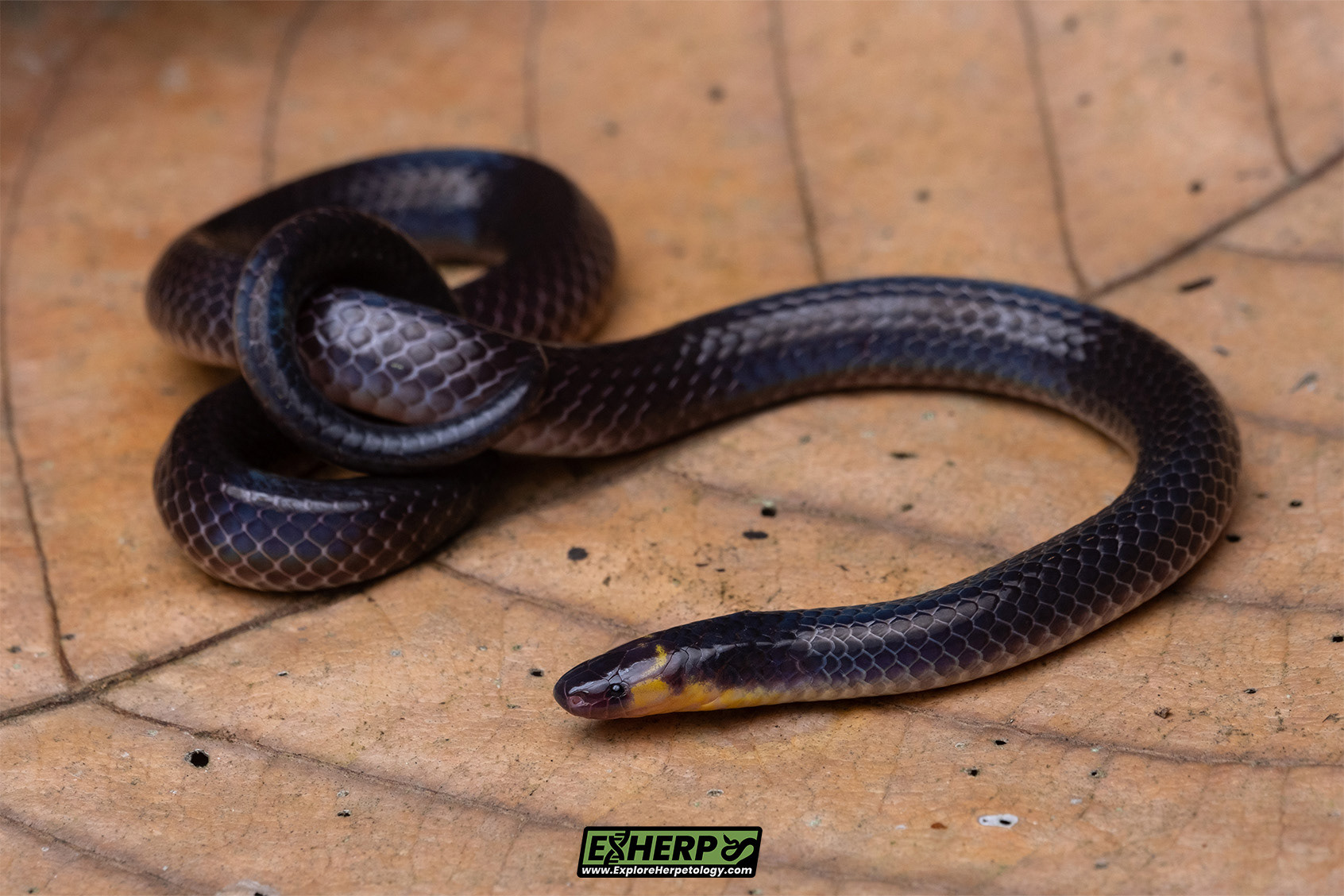
Schlegel's reed snake (Calamaria cf. schlegeli).
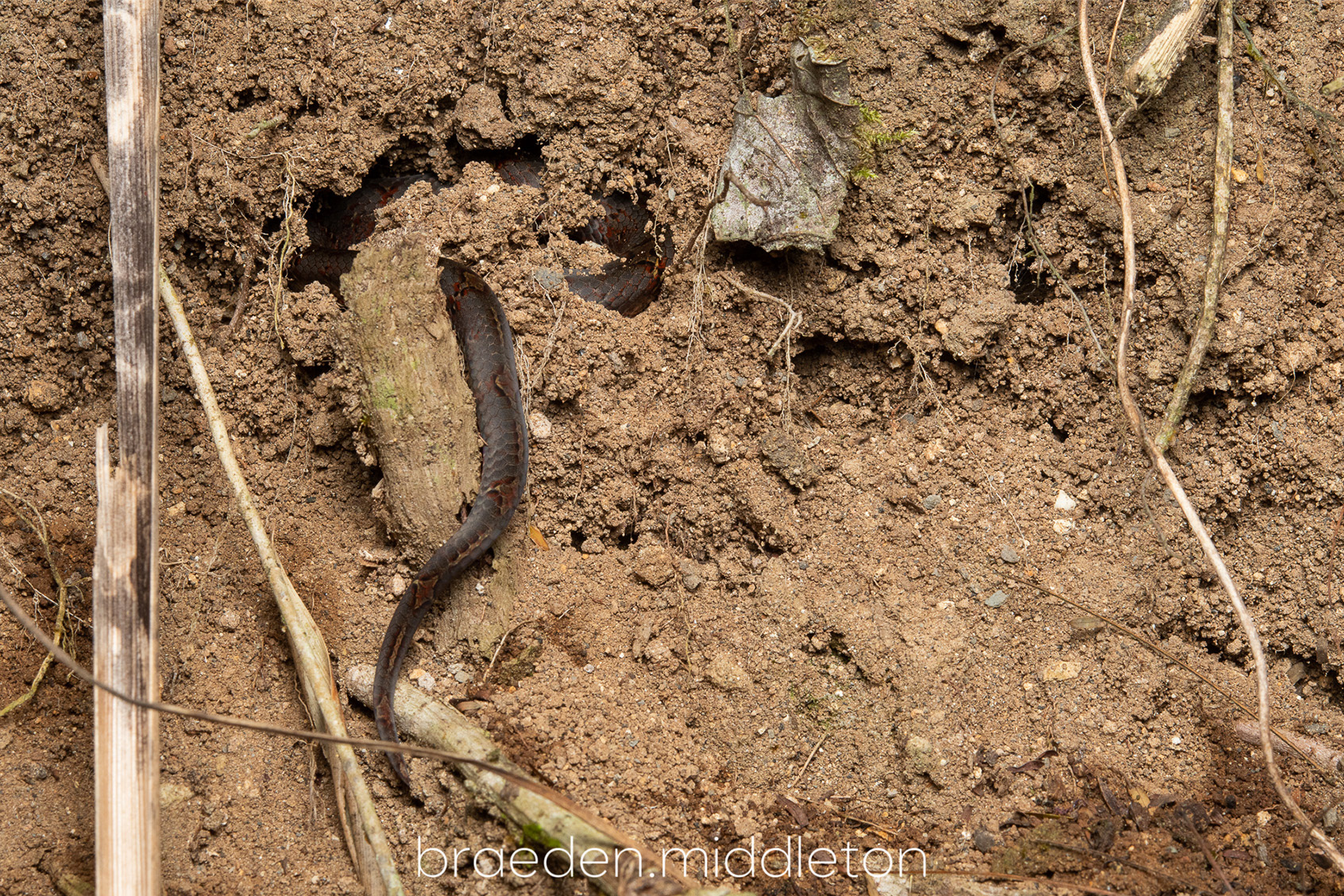
In-situ Oligodon petronellae.

Petronella's kukri snake (Ologodon petronellae).
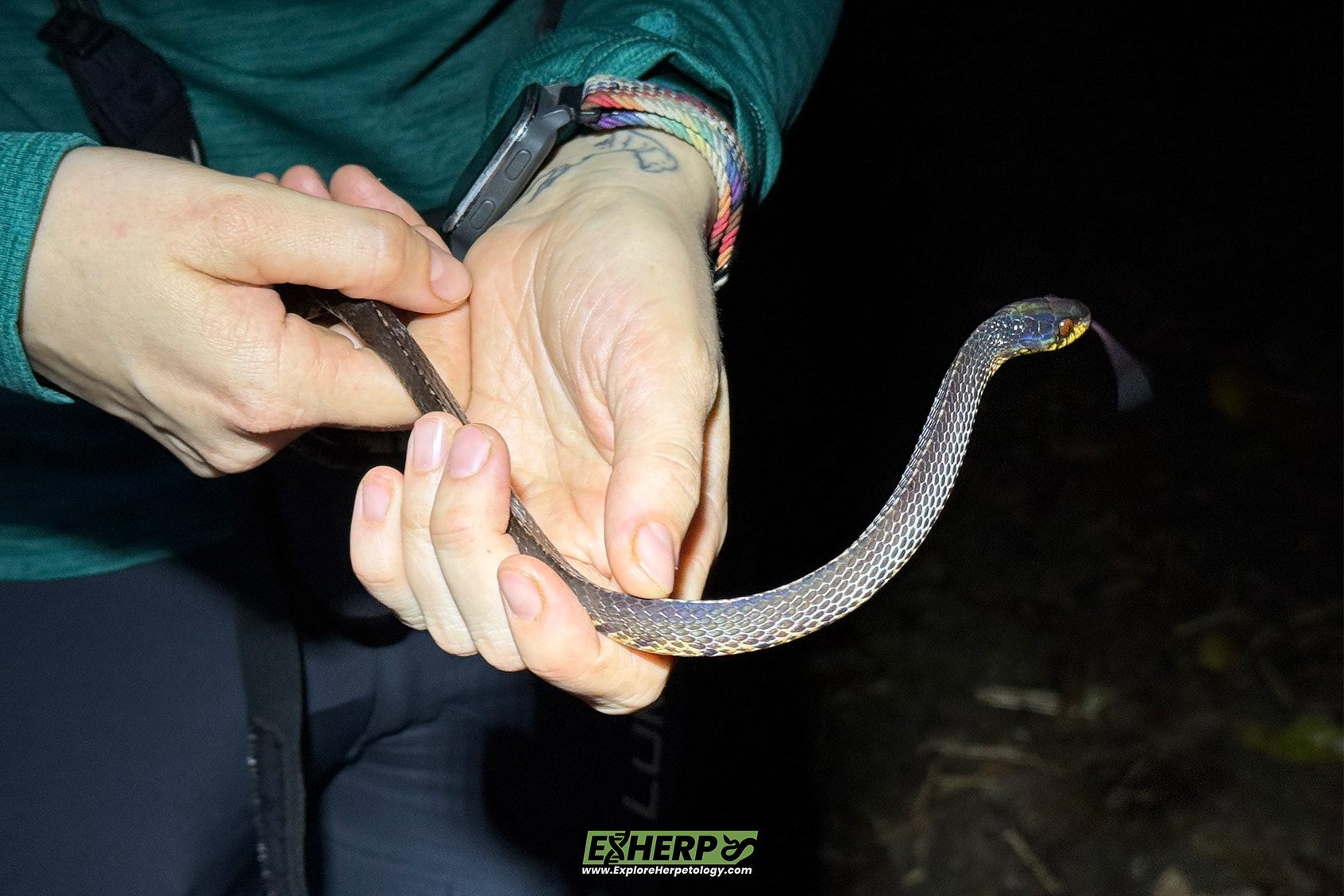
Huge Sumatran slug snake (Asthenodipsas tropidonotus).
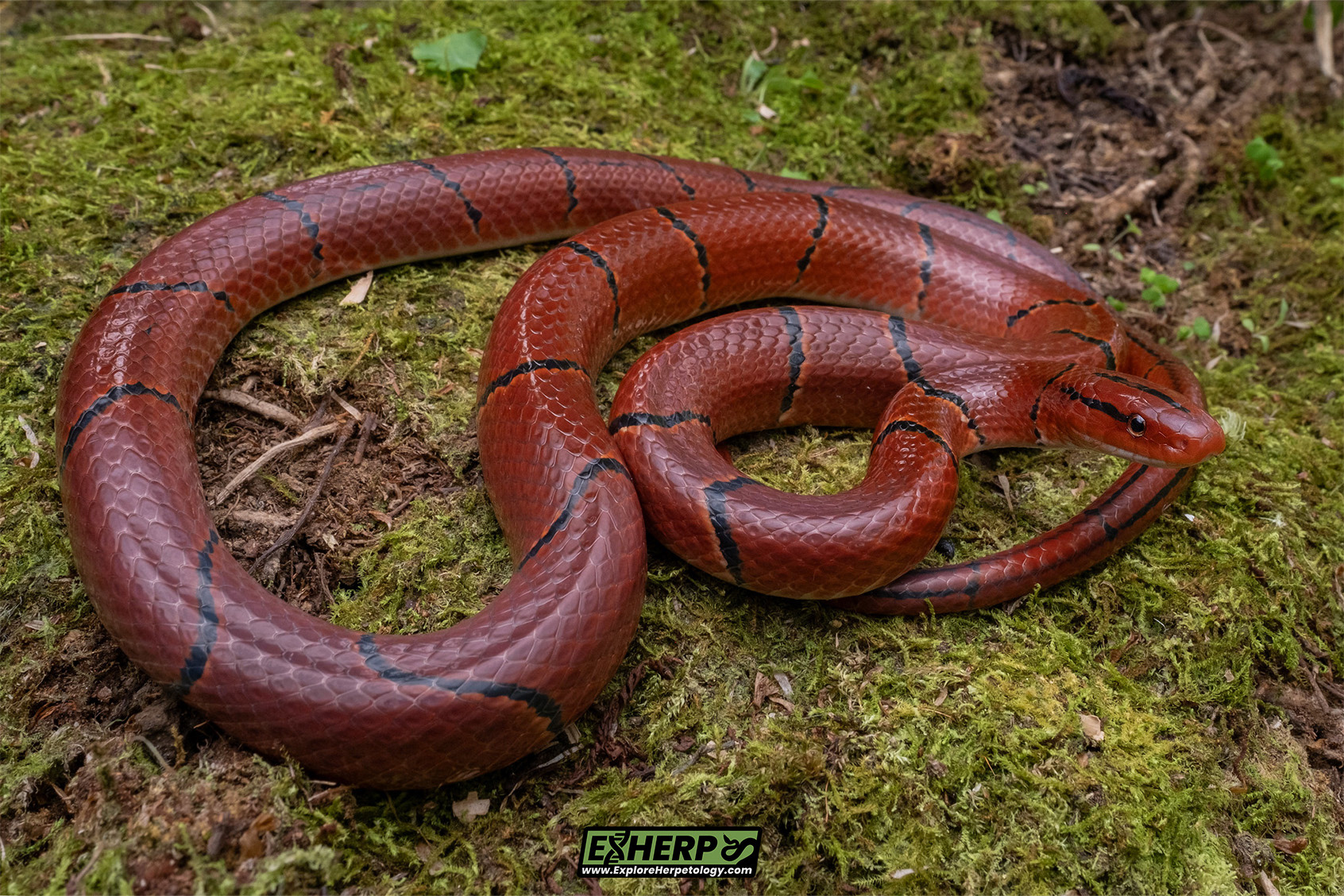
Red-bamboo ratsnake (Oreocryptophis porphyracea laticinctus).
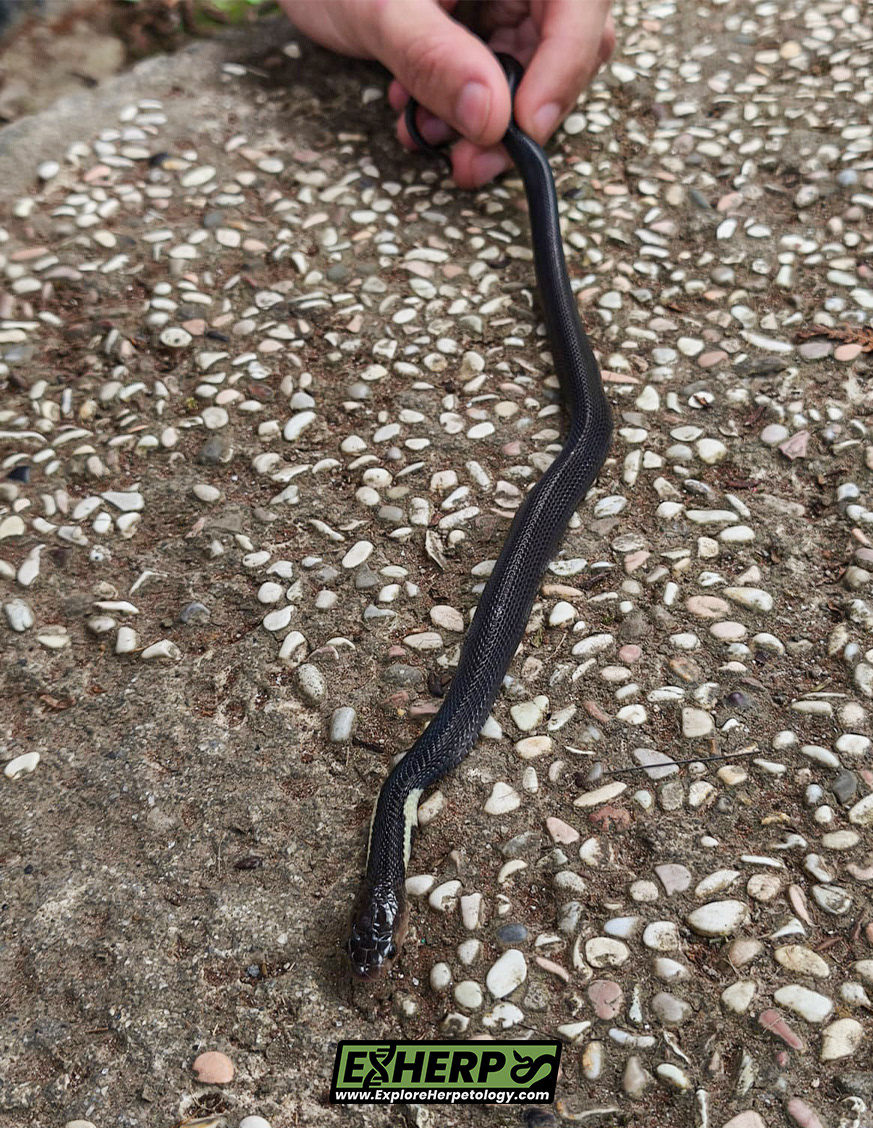
Sumatran cobra (Naja sumatrana).
And that concludes our first ever Expedition Sumatra. While not every night was packed to the brim with countless crazy observations and encounters, the overall quality from start to finish was simply sensational, and this certainly stands out as one of the best trips ever for "rare" species - with so many seldom seen or documented species found at both locations. Getting both of our main target kukri snakes for Northern Sumatra was also unprecedented. We cannot wait to build upon this success next year...
To join our next Expedition Sumatra (6th - 16th March 2026), click here!
FULL SPECIES LIST:
Snakes
Colubridae:
Ahaetulla fasciolata - 3
Ahaetulla mycterizans - 20+
Ahaetulla prasina - 2
Boiga cynodon - 1
Boiga drapezii - 2
Boiga jaspidea - 1
Dendrelaphis caudolineatus - 3
Dendrelaphis formosus - 1
Dryocalamus subannulatus - 1
Lycodon subcinctus - 1
Elaphe taeniura grabowskyi - 1
Elapoidis sumatranus - 3
Oligodon trilineatus - 1
Oligodon cf. pulcherrimus - 1
Ptyas carinata - 1
Ptyas fusca - 1
Calamaria lumbricoidea - 1
Calamaria cf. schlegeli - 2
Calamaria cf. virgulata - 2
Calamaria abstrusa: 4
Pseudorabdion cf. longiceps - 1
Paretidae:
Asthenodipsas laevis - 1
Asthenodipsas malaccanus - 2
Asthenodipsas tropidonotus - 1
Pareas carinatus - 1
Viperidae:
Craspedocephalus andalasensis - 2
Craspedocephalus cf. borneensis - 3
Trimeresurus gunaleni - 7
Trimeresurus hageni - 7
Trimeresurus sabahi toba - 5
Tropidolaemus wagleri - 3
Elapidae:
Bungarus flaviceps - 1
Calliophis intestinalis - 1
Xenodermidae:
Xenodermus javanicus - 2
Xenopeltidae:
Xenopeltis unicolor - 7
Typhlopidae:
Indotyphlops braminus - 3
Ramphotyphlops lineatus - 1
Lizards:
Aphaniotis acutirostris
Dendragama boulengeri
Dendragama stejnengeri
Bronchochela cristatella
Bronchochela hayeki
Gonocephalus luncanotus
Gonocephalus cf. chameleotinus
Draco sumatranus
Cyrtodactylus quadrivirgatus
Cyrtodactylus lateralis
Cyrtodactylus sp.
Gekko kuhli
Gehyra mutilata
Hemiphyllodactylus cf. typus
Hemidactylus frenatus
Hemidactylus platyurus
Eutropis multifasciata
Varanus salvator
Dibamus sp.
Sphenomorphus sp.
Sphenomorphus sp2.
Laturia cf. sumatrensis
Amphibians:
Duttaphrynus melanistictus
Phrynoidis juxasper
Kurixalus chaseni
Zhangixalus achantharrhena
Zhangixalus prominanus
Polypedates leuxomystax
Polypedates discantus
Polypedates macrotis
Rhacophorus pardalis
Rhacophorus calamitas
Philautus petersi
Nyctixalus pictus
Leptomantis pseudacutirostris
Microhyla cf. supracilliaris
Microhyla cf. annectens
Microhyla heymonsi
Megophrys parallela
Pelobatracus nasuta
Odorrana hosii
Sumaterrana crassiovis
Hylarana fantastica
Hylarana sp.
Chalcorana parvaccola
Fejervarya limnocharis
Limnonectes sp.
Wijayarana sumatrana
Ichtyophis paucisulcus
86 total herpetofauna species observed and photographed.
From Eddy and Radit:
Naja sumatrana - 1
Oreocryptophis porphryaceus ssp. - 1
DOR:
Dendrelaphis kopsteini - 1
Pareas carinatus - 1
Naja sumatrana - 1
Calamaria lumbricoidea - 1
Calamaria schlegeli - 1
Elaphe taeniura grabowskyi - 2
Coelognathus flavolineatus - 5
Dendrelaphis cyanochloris - 1


